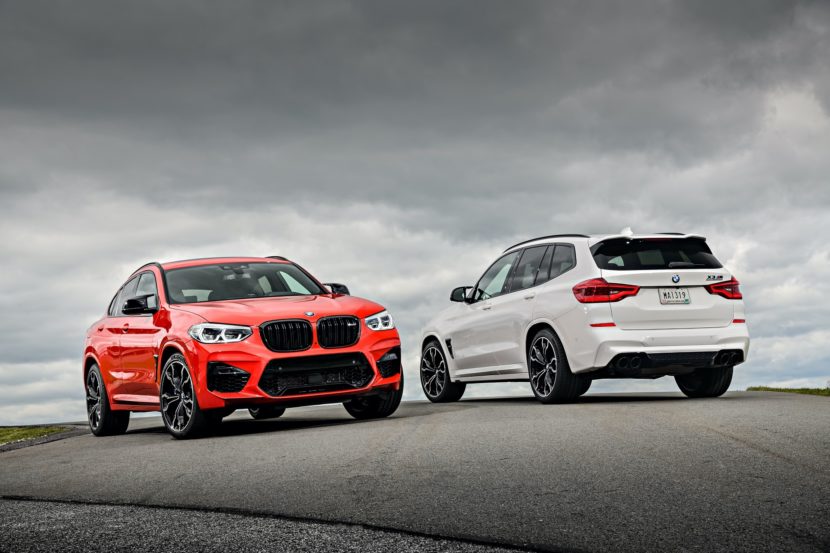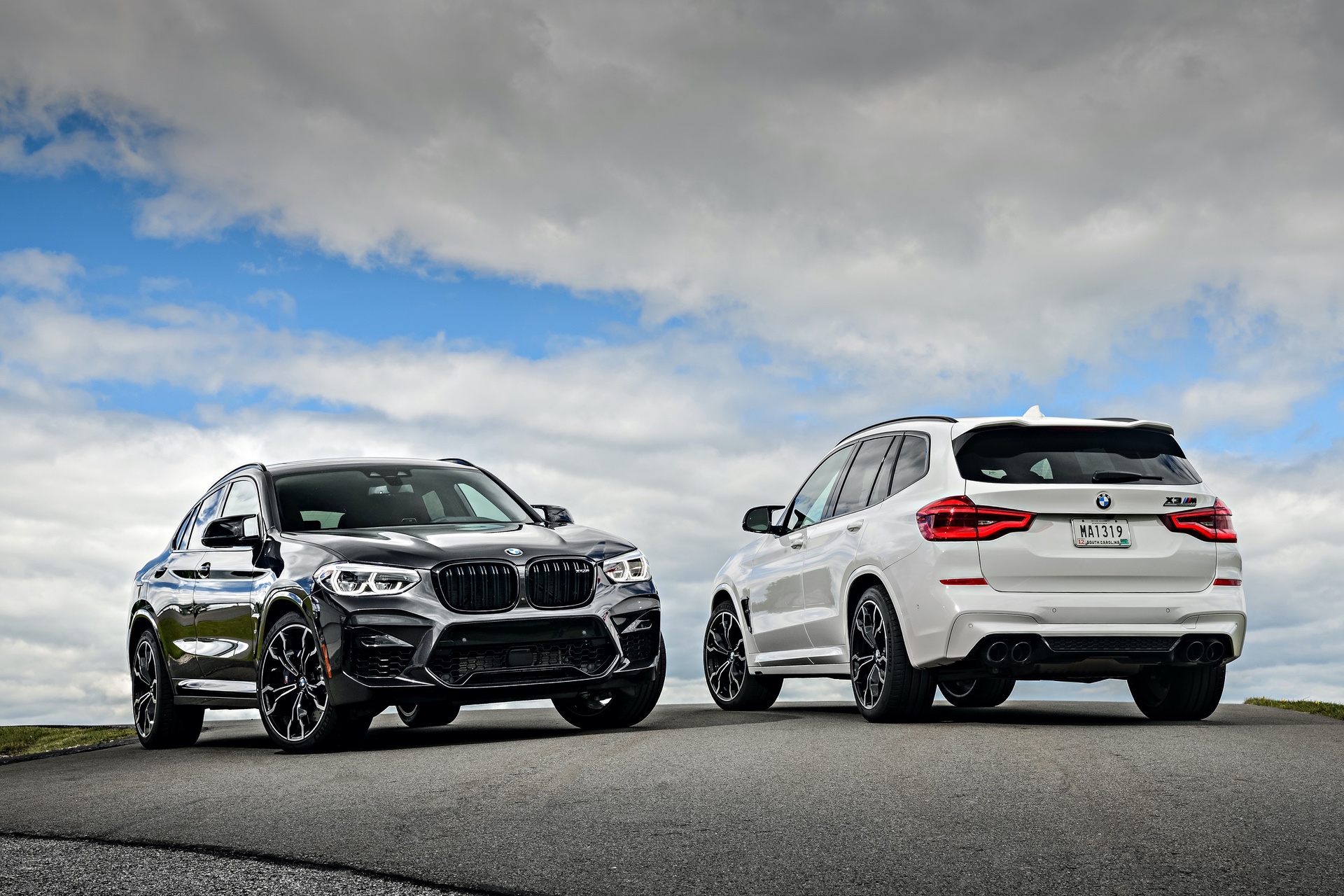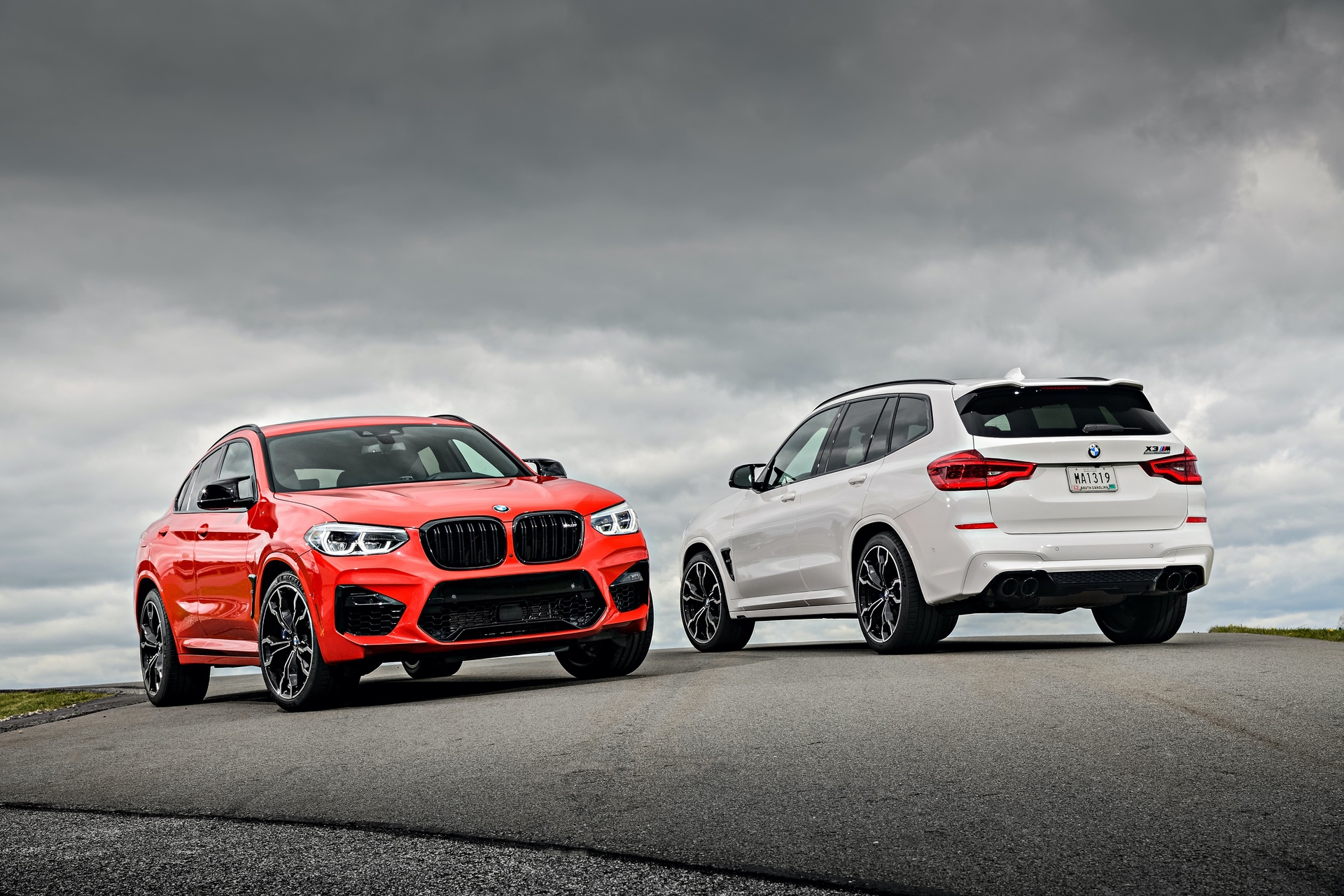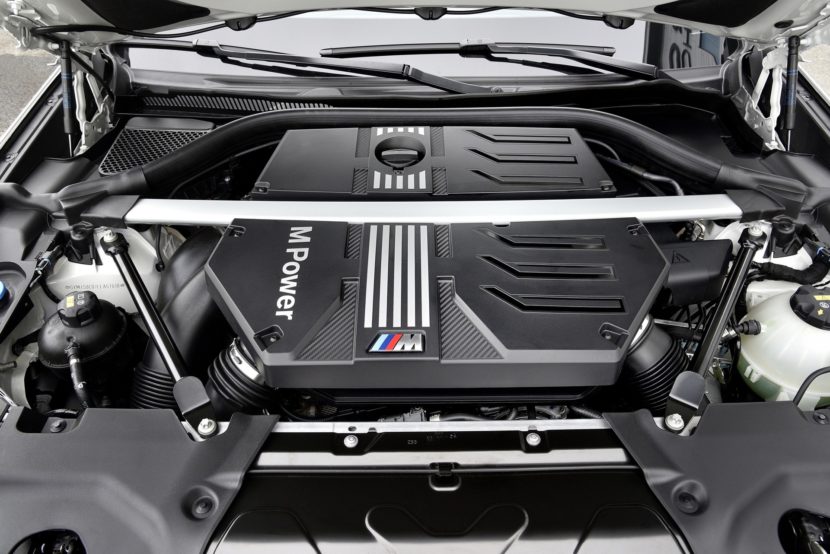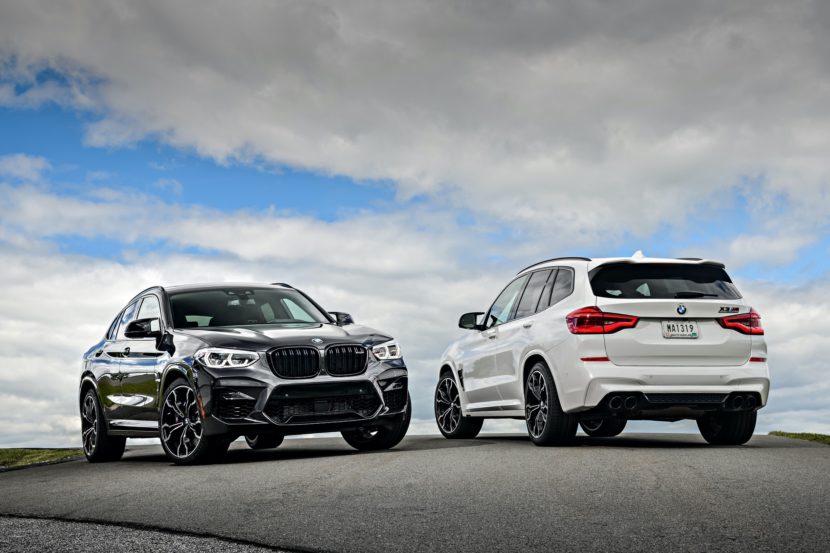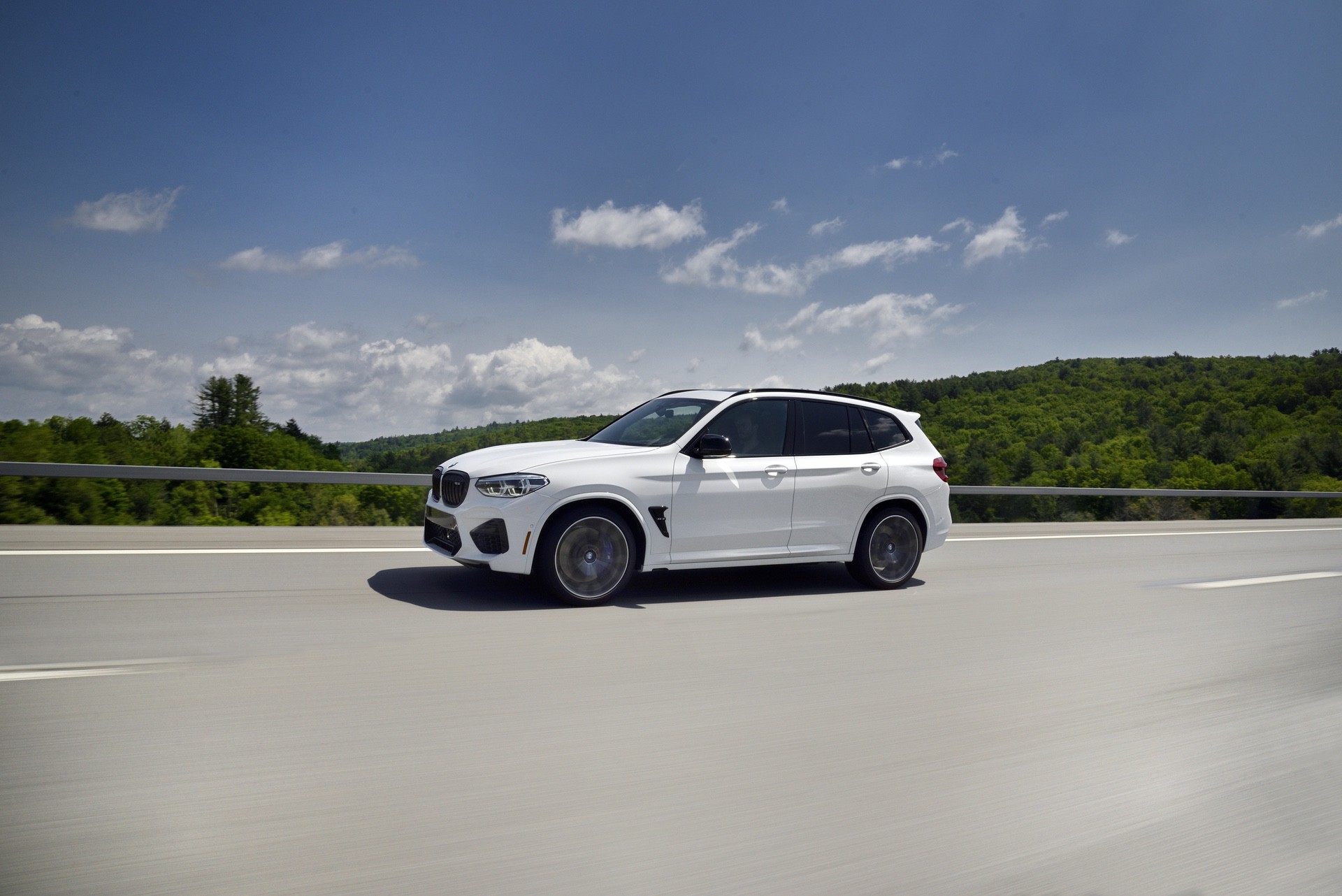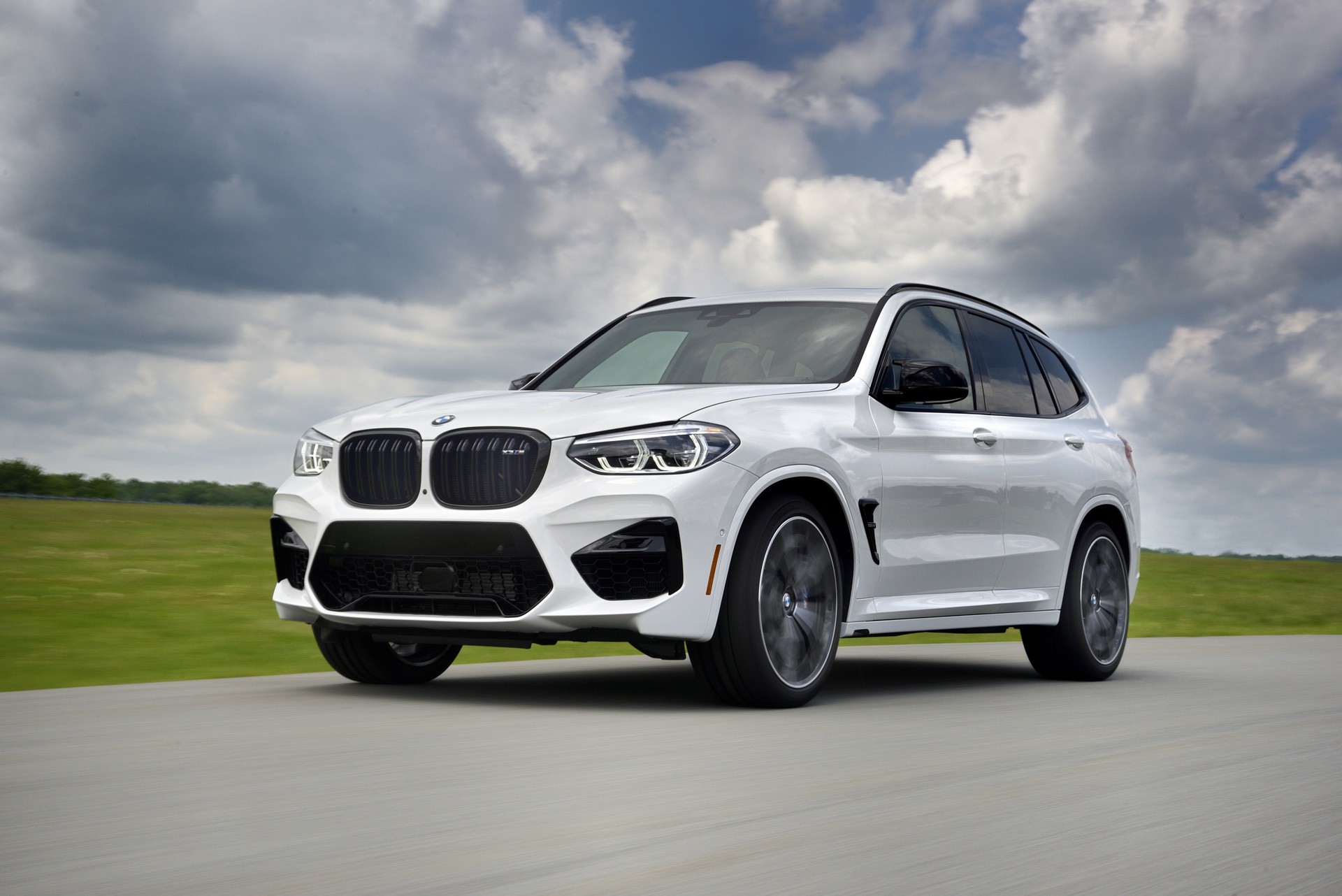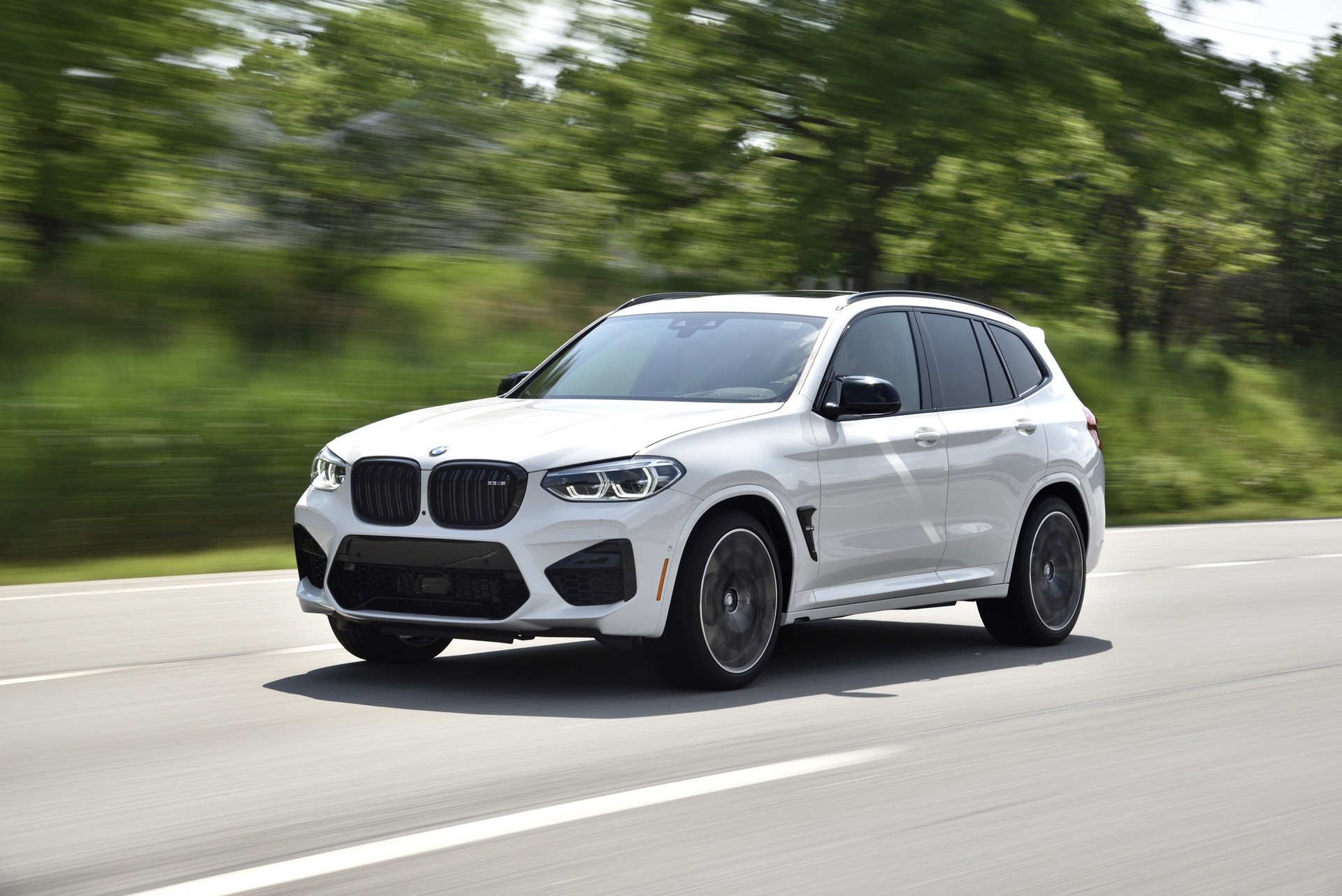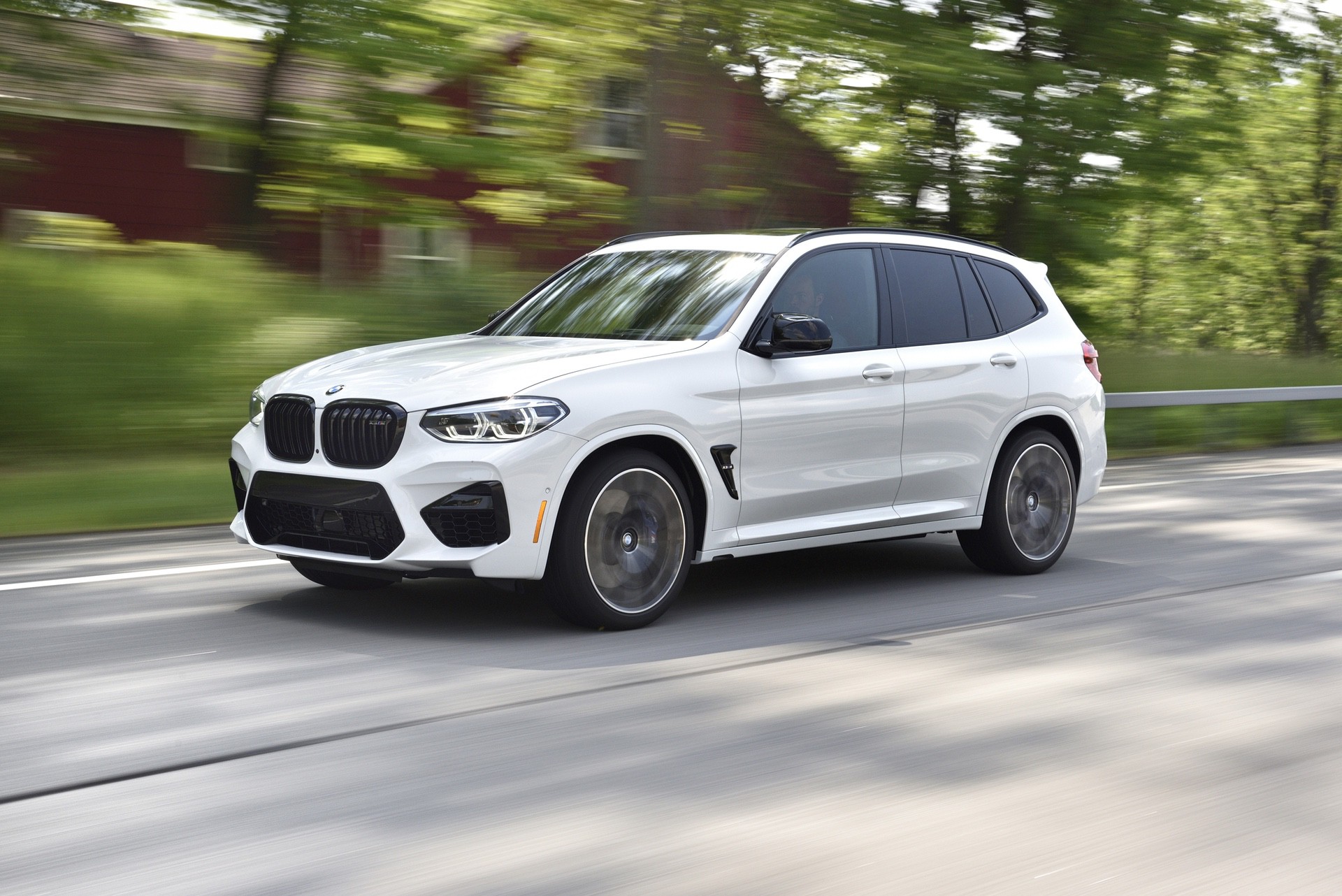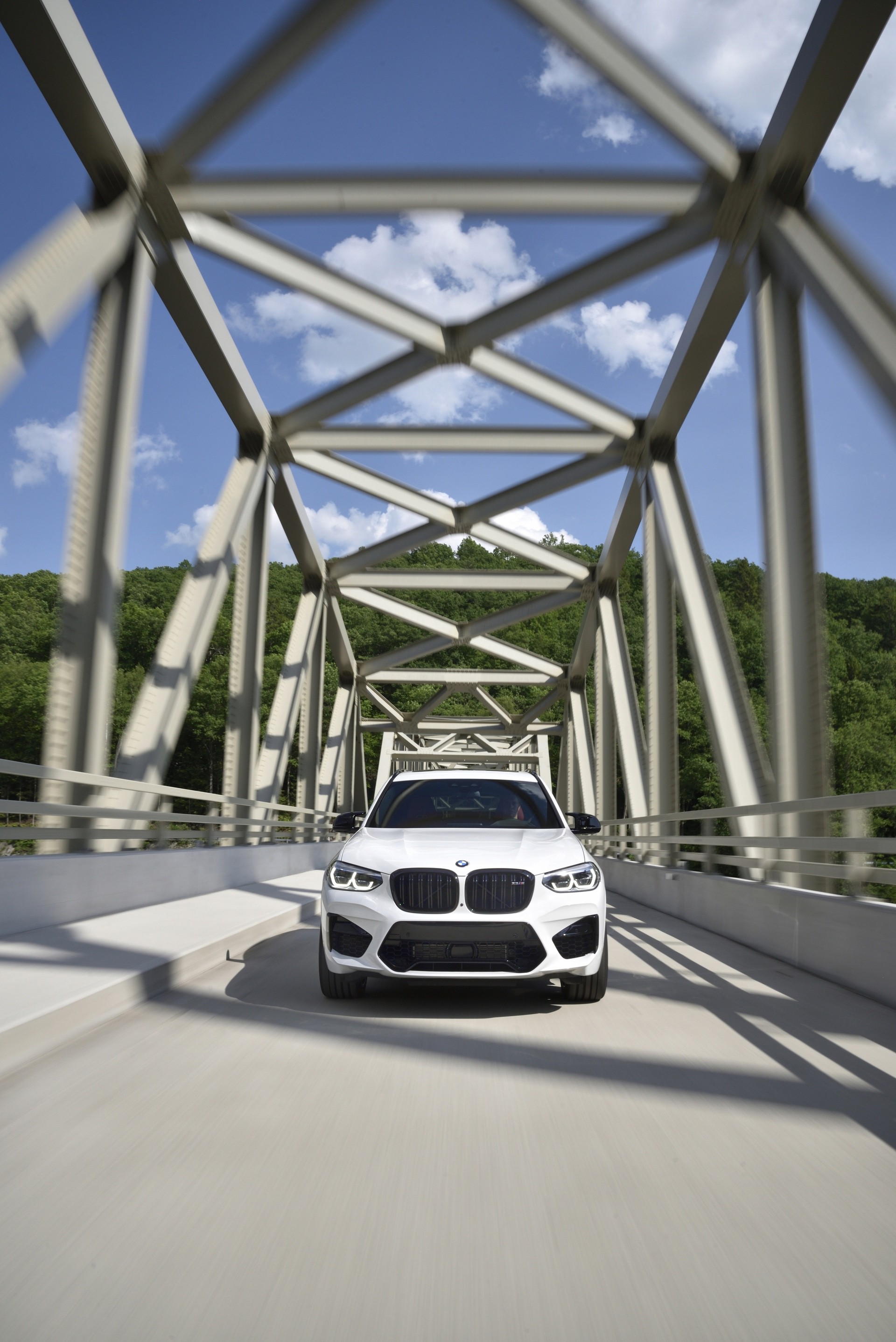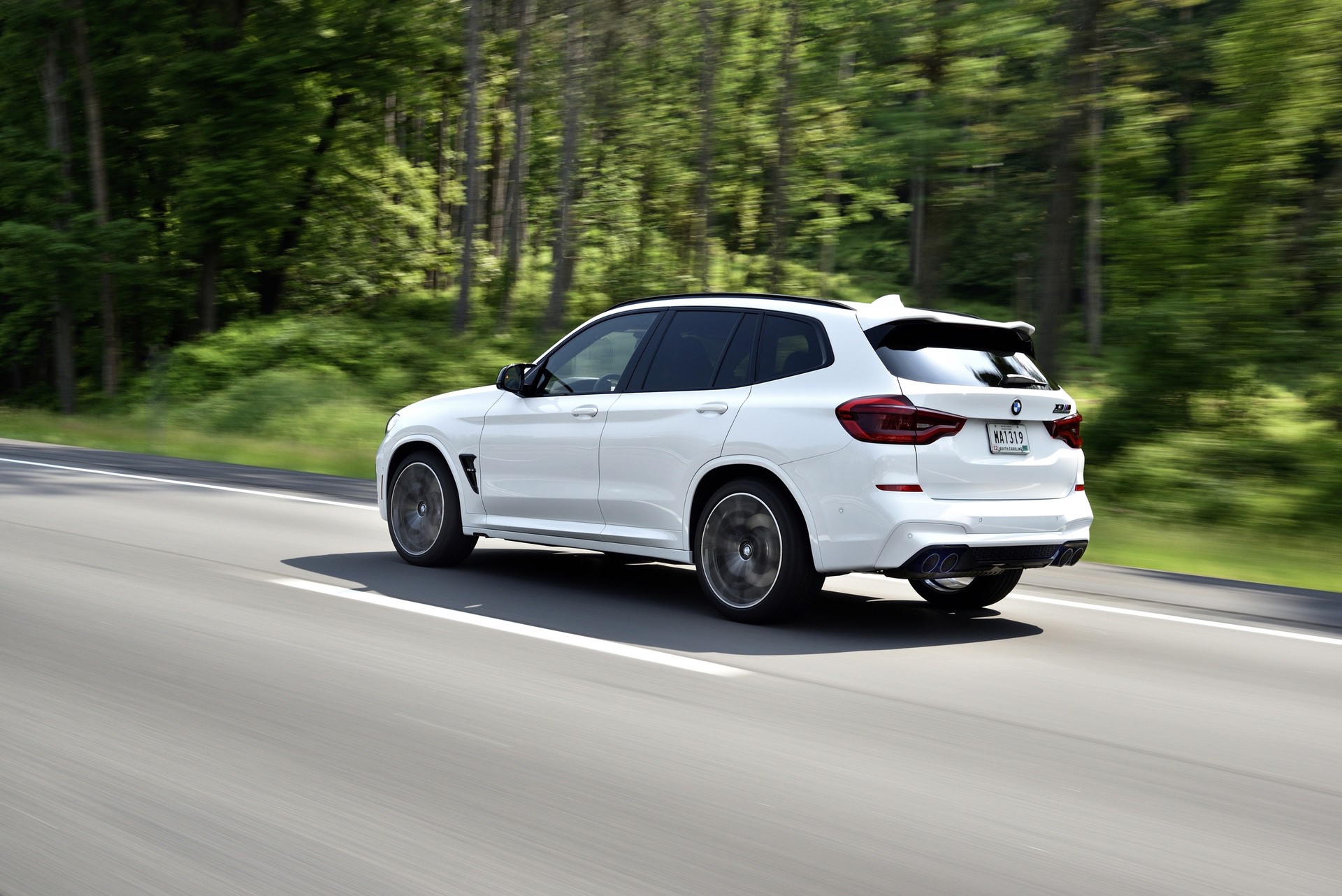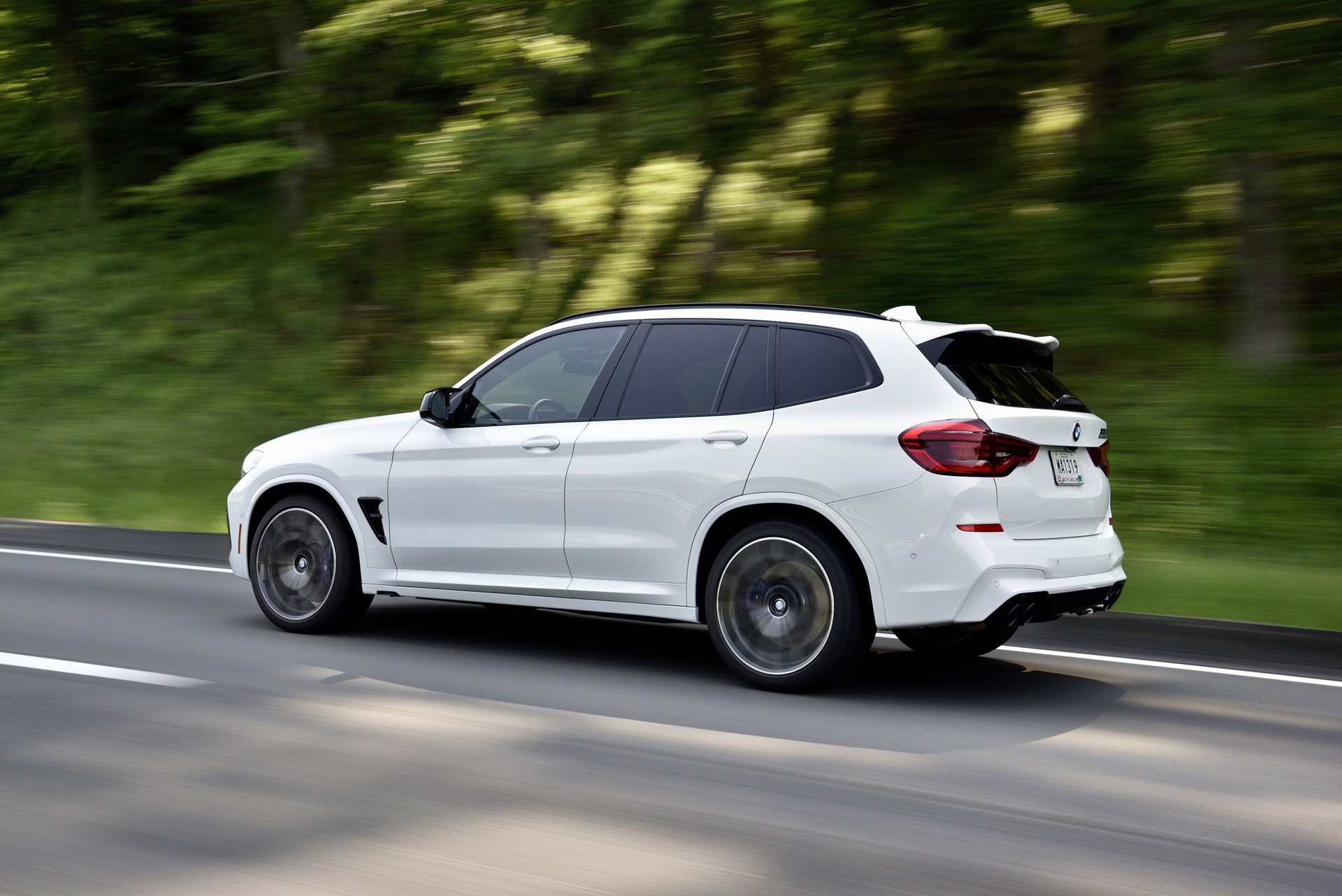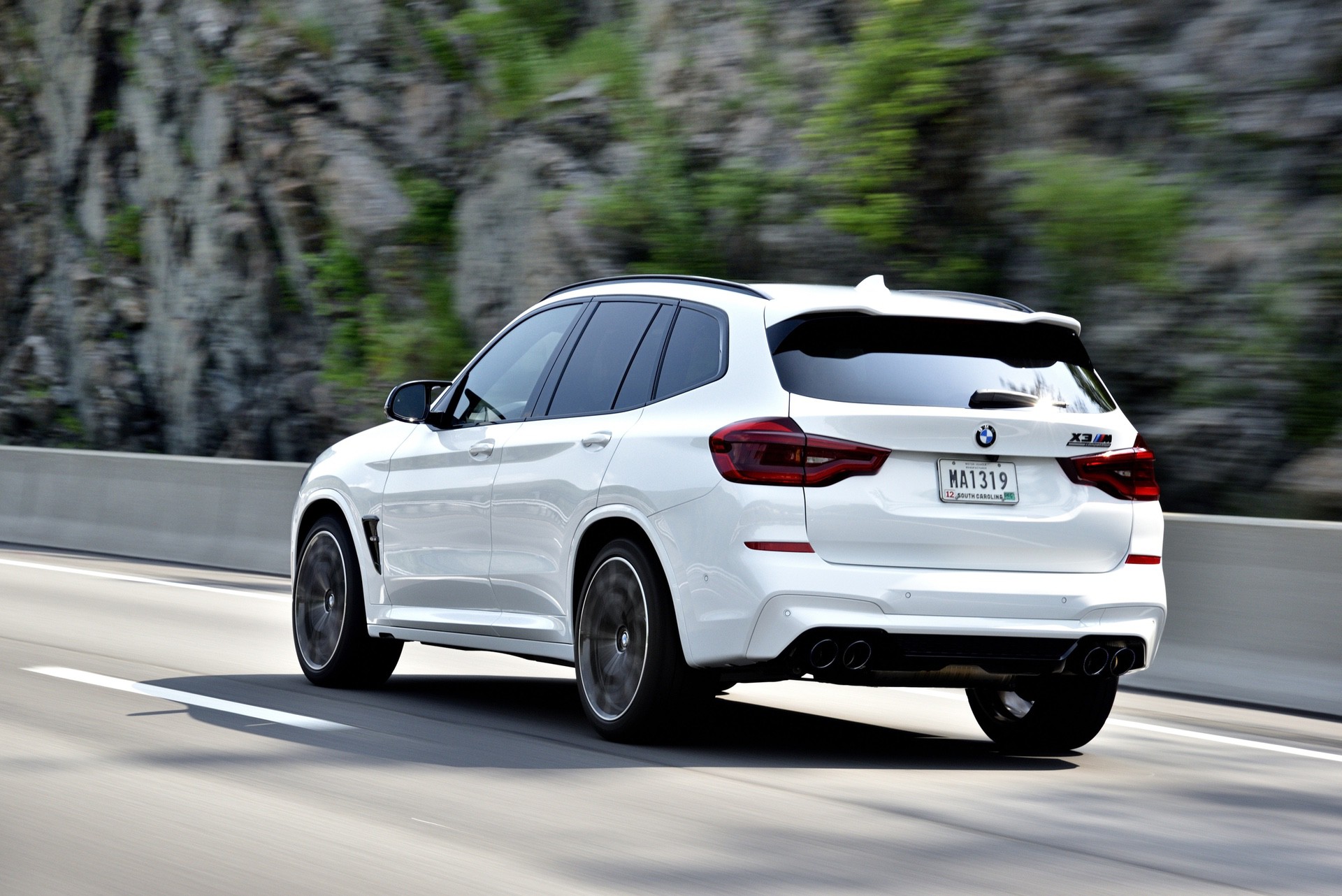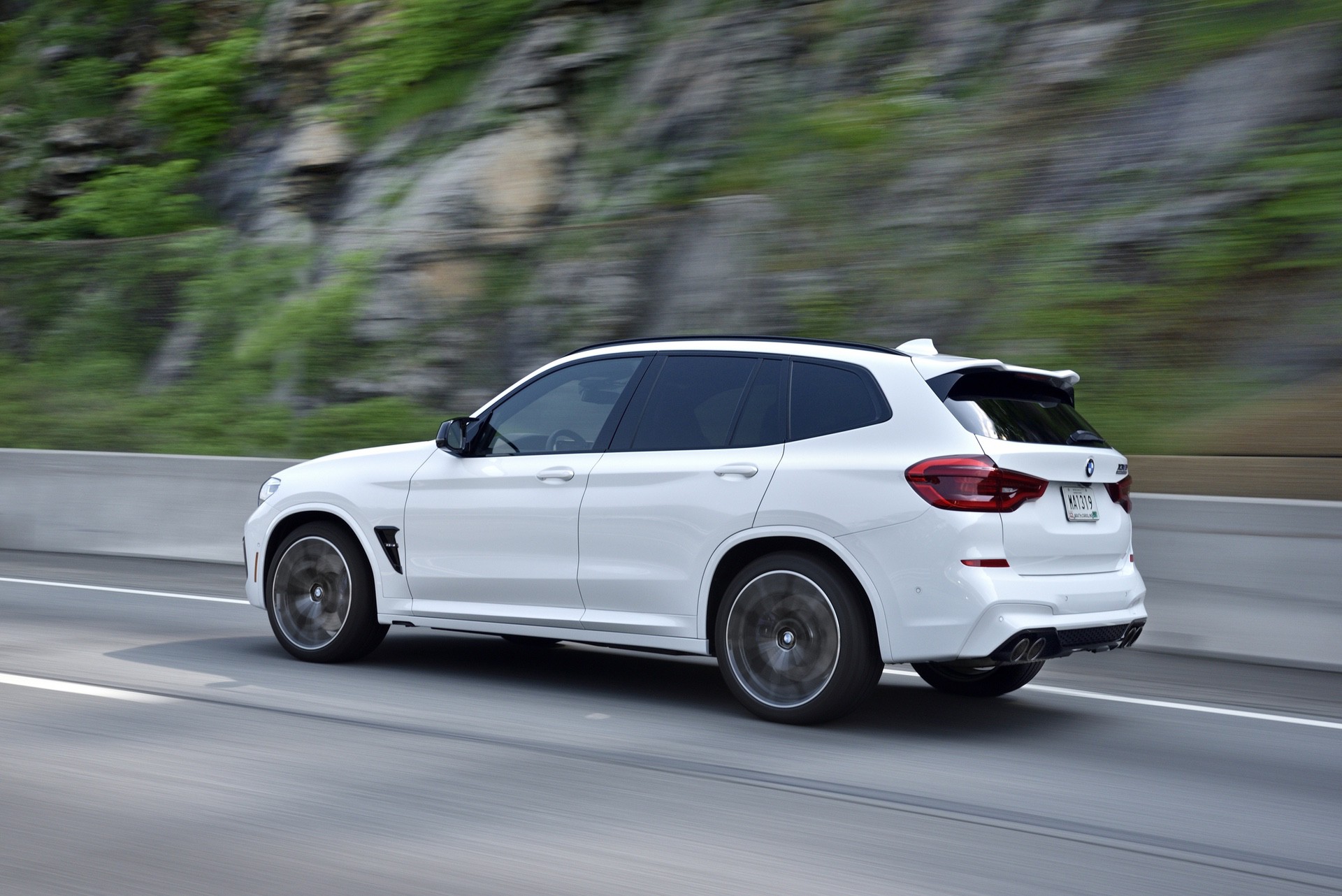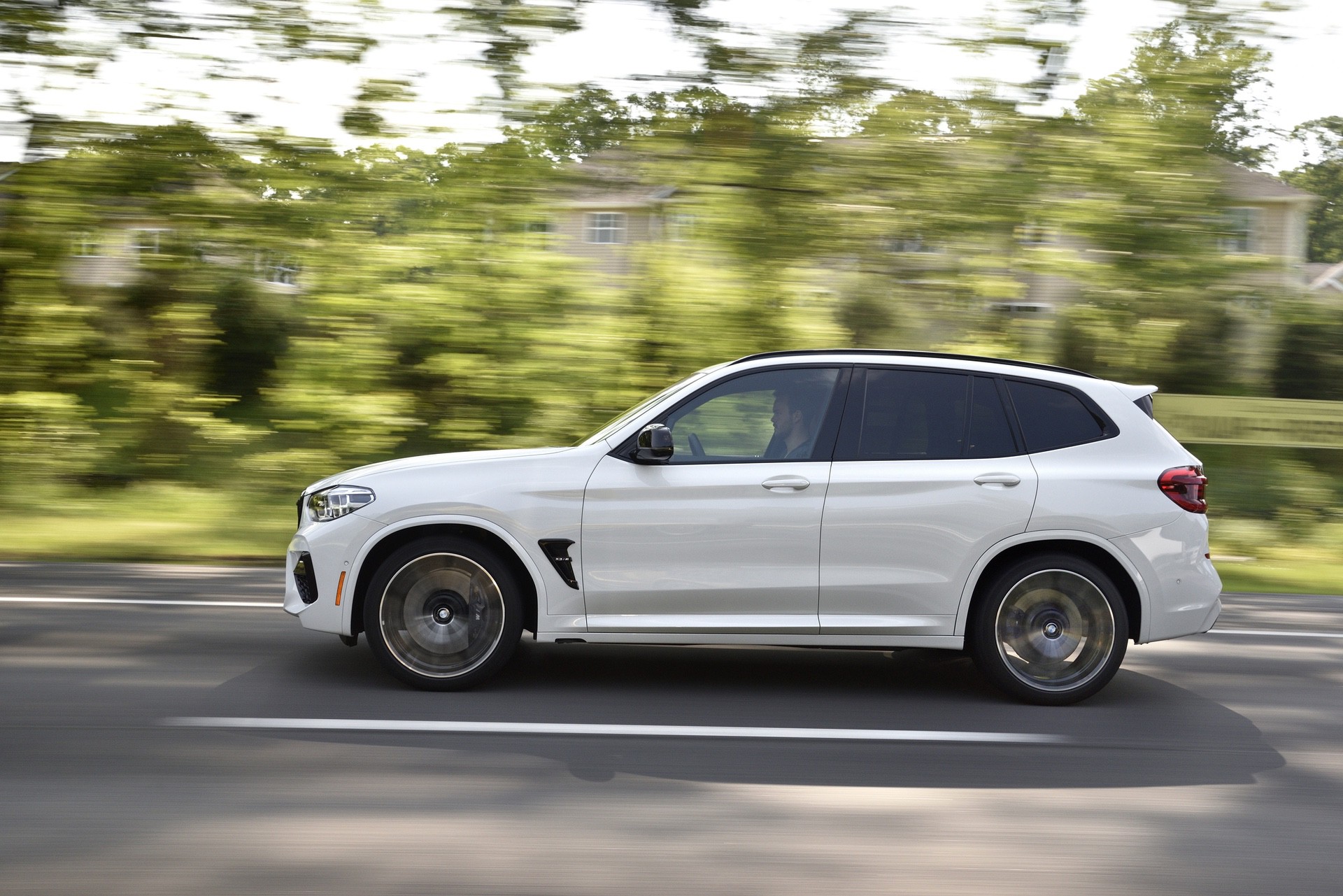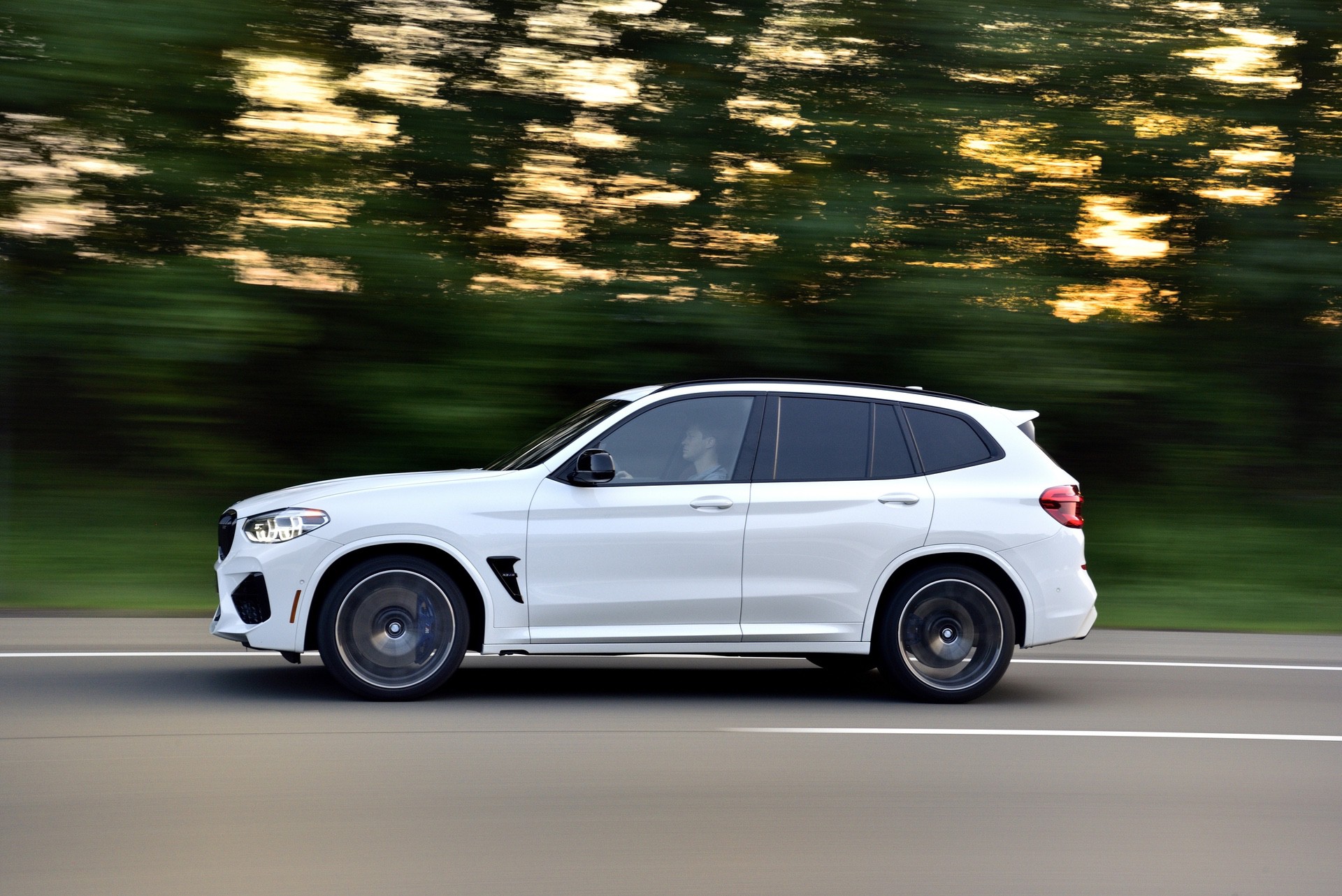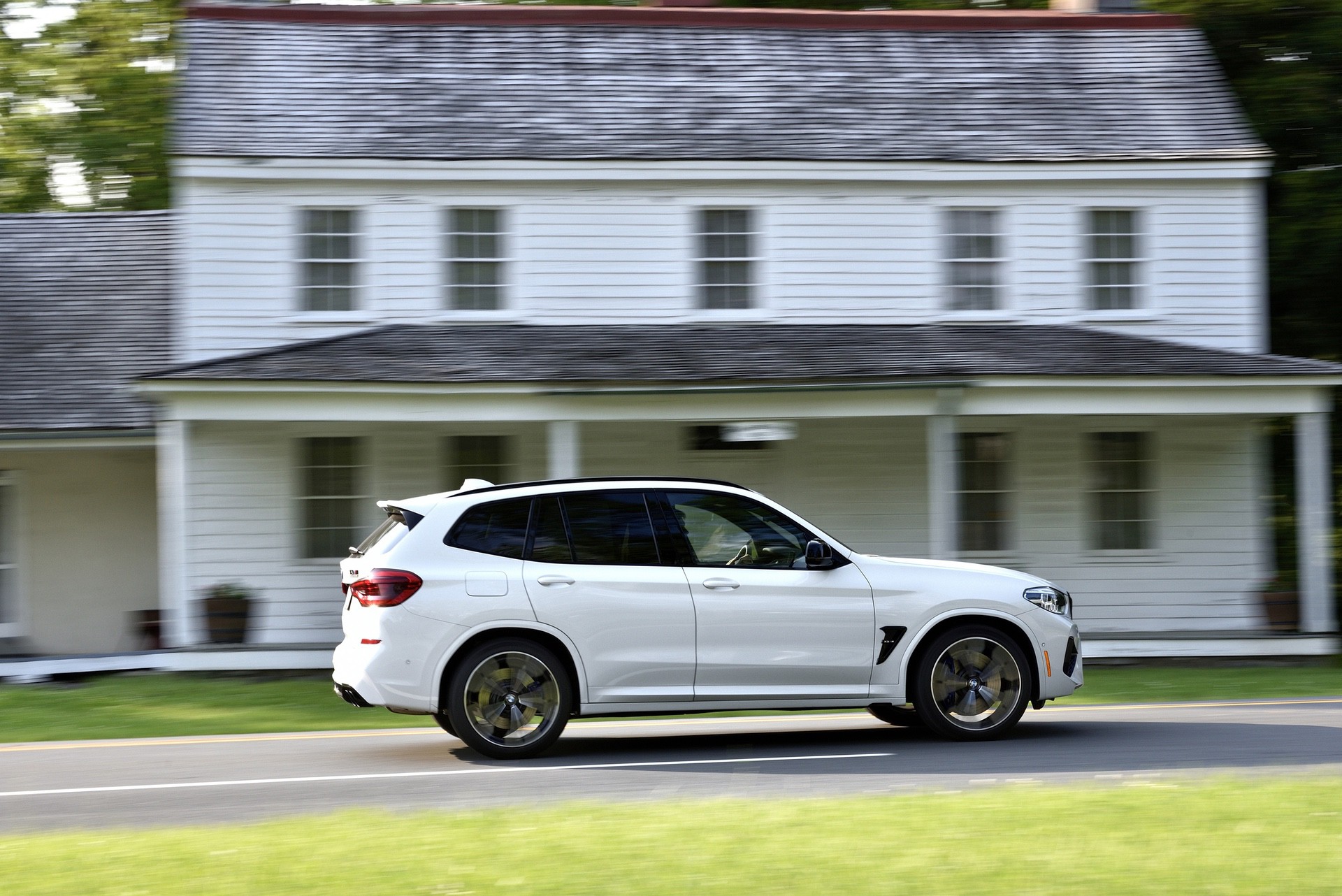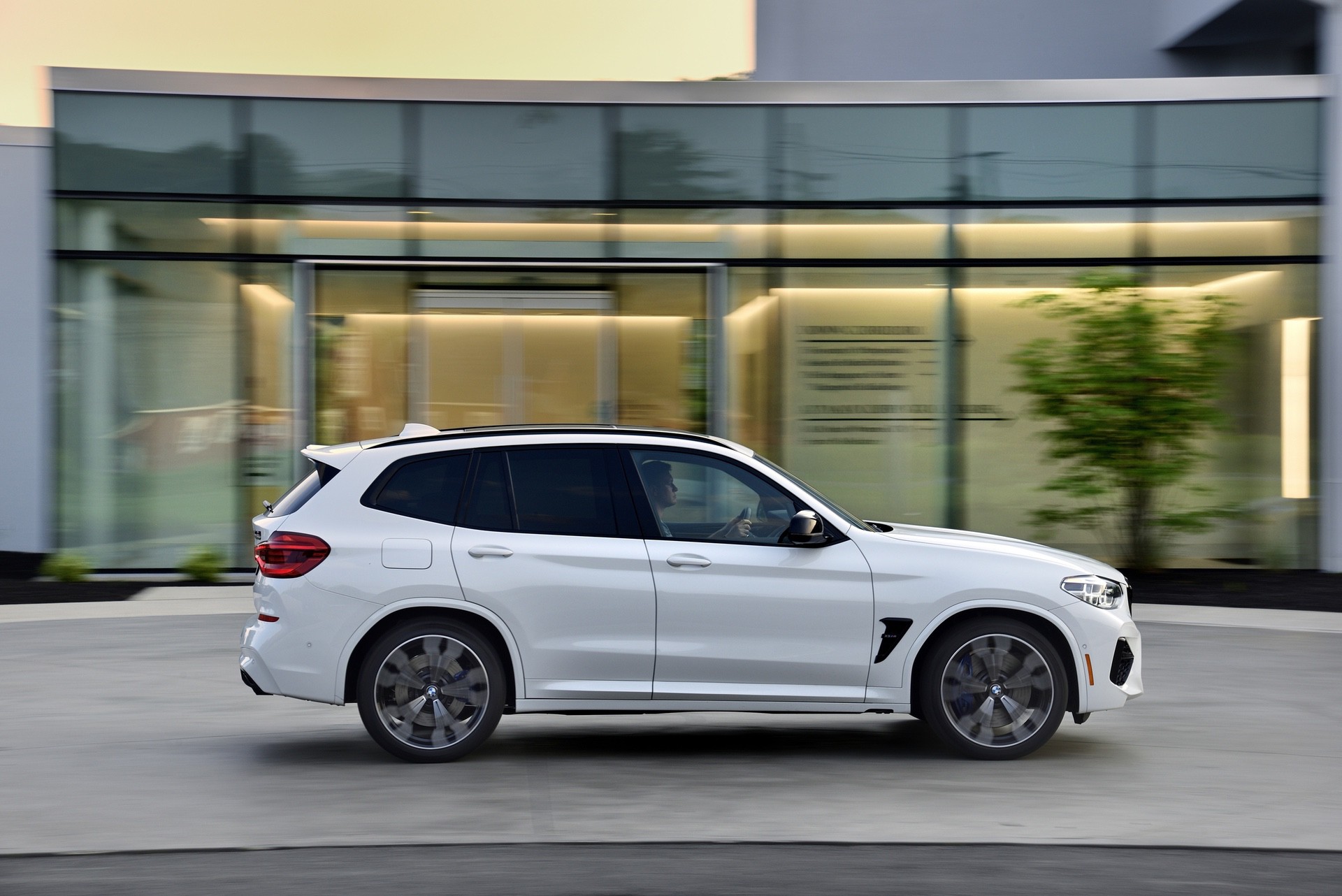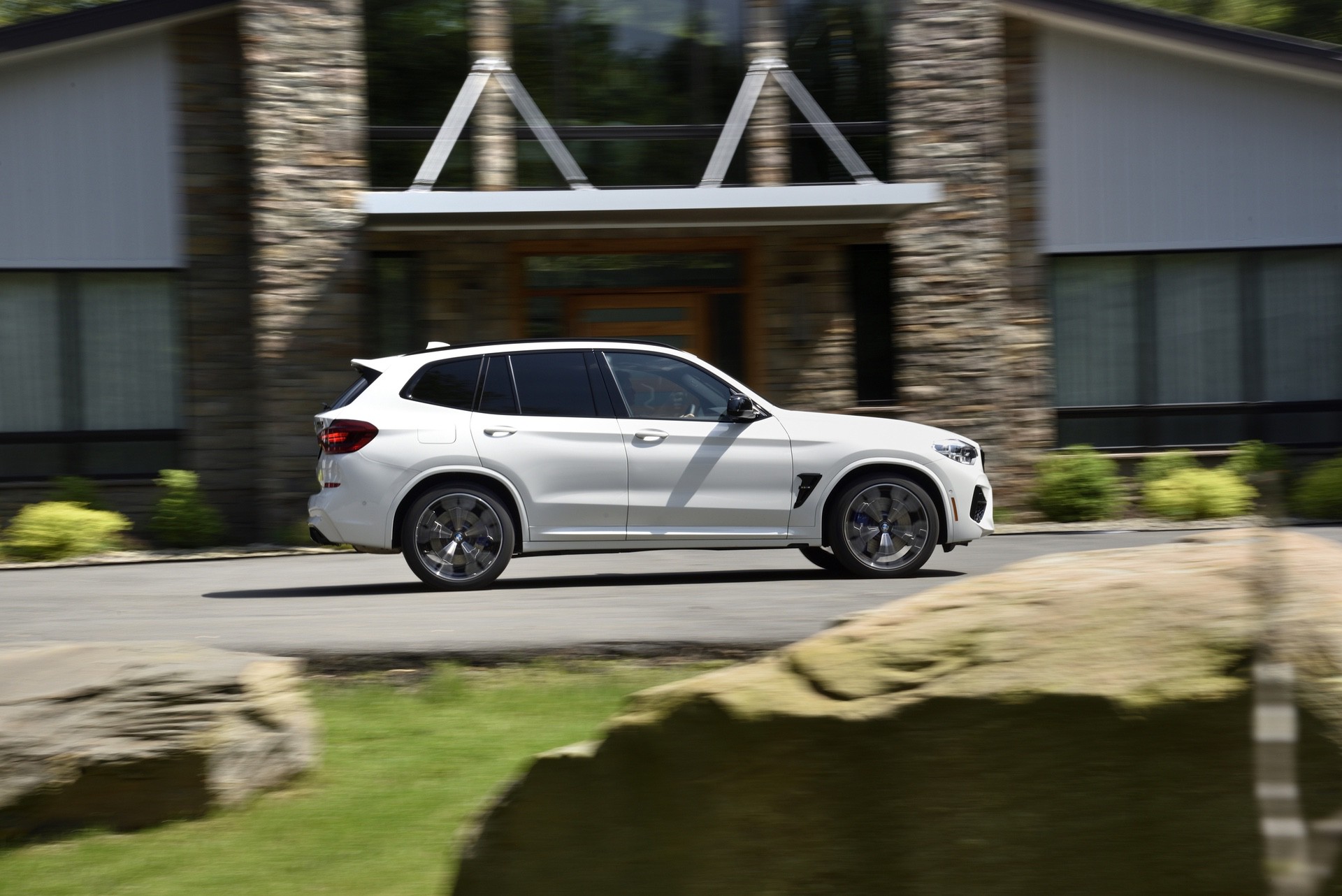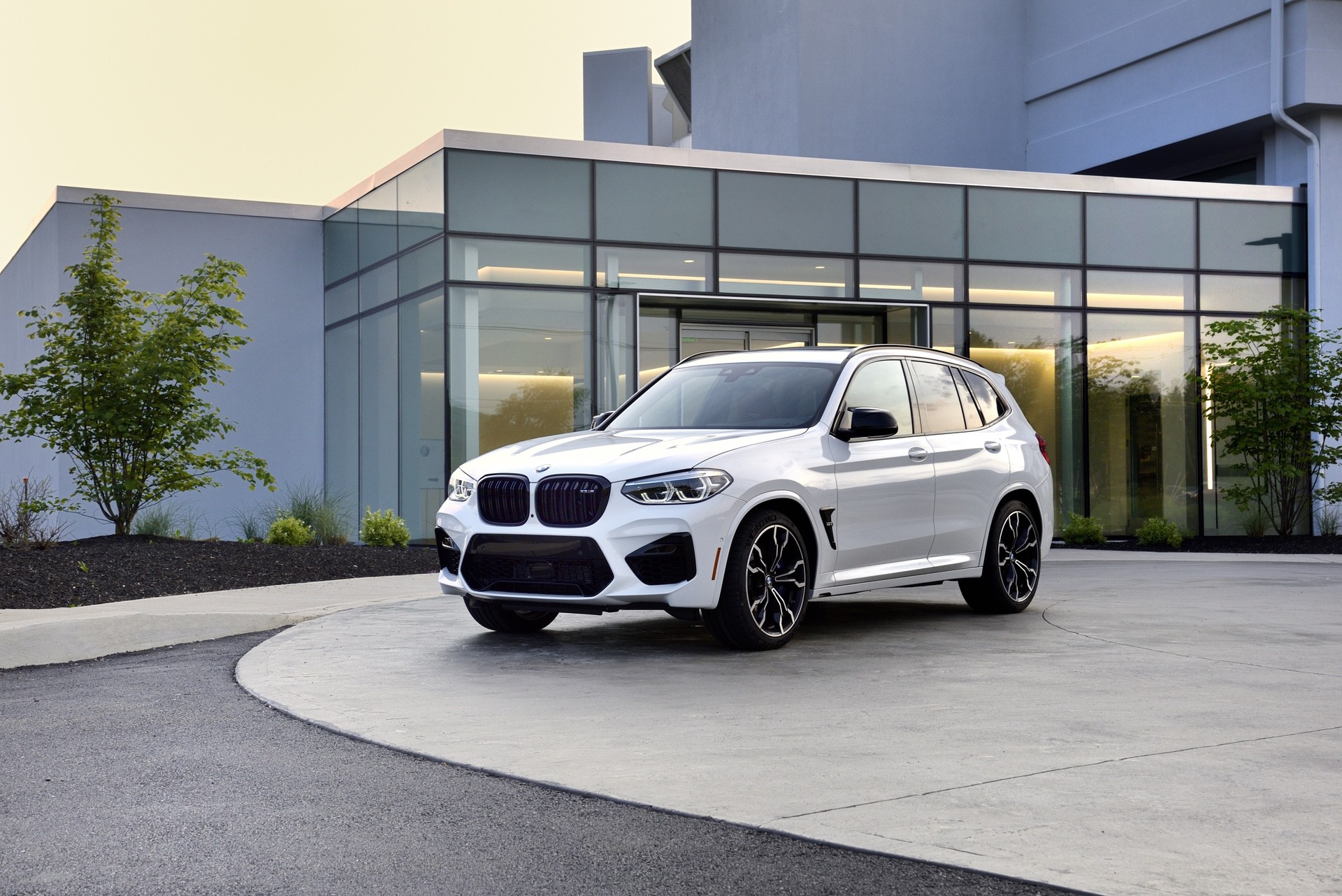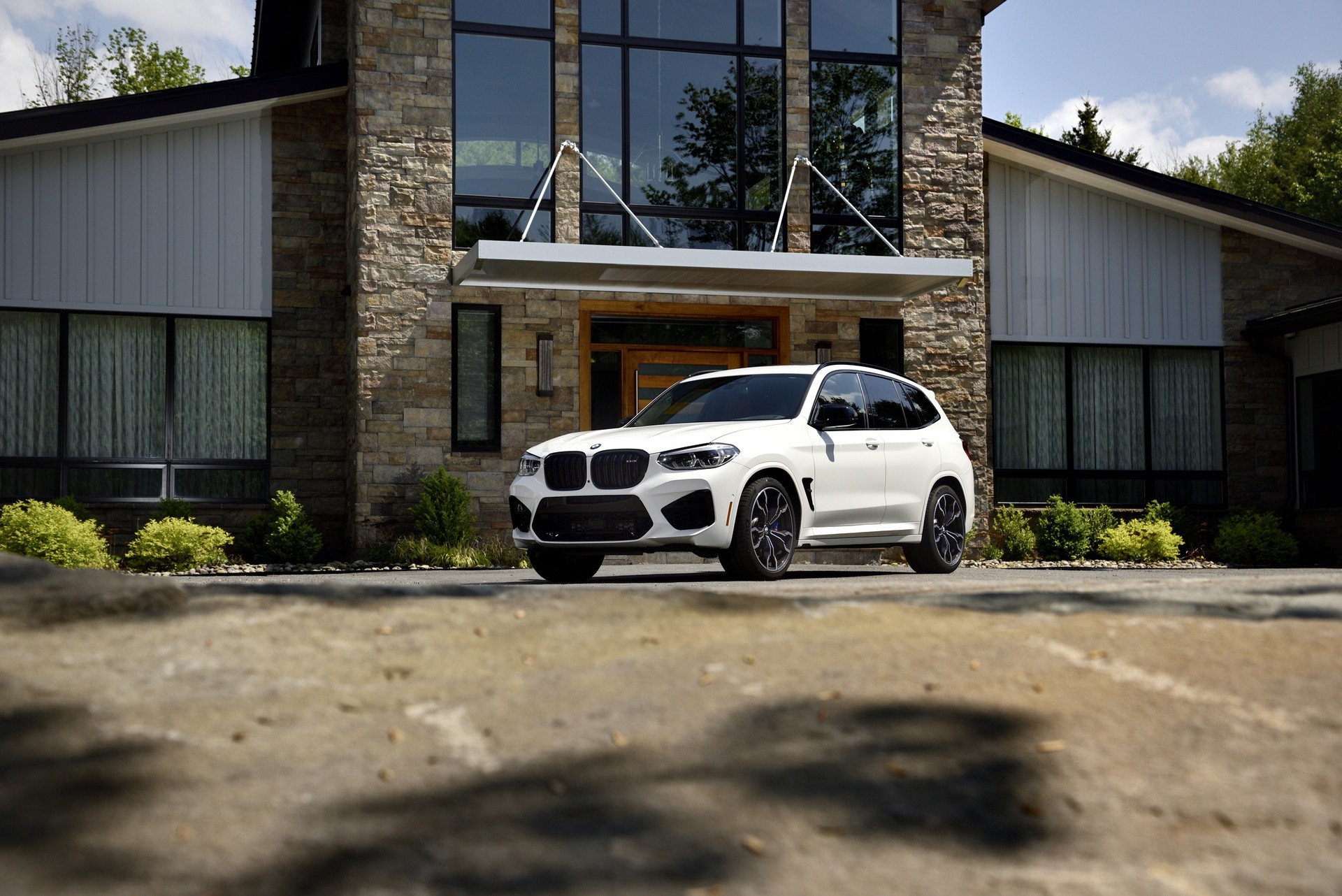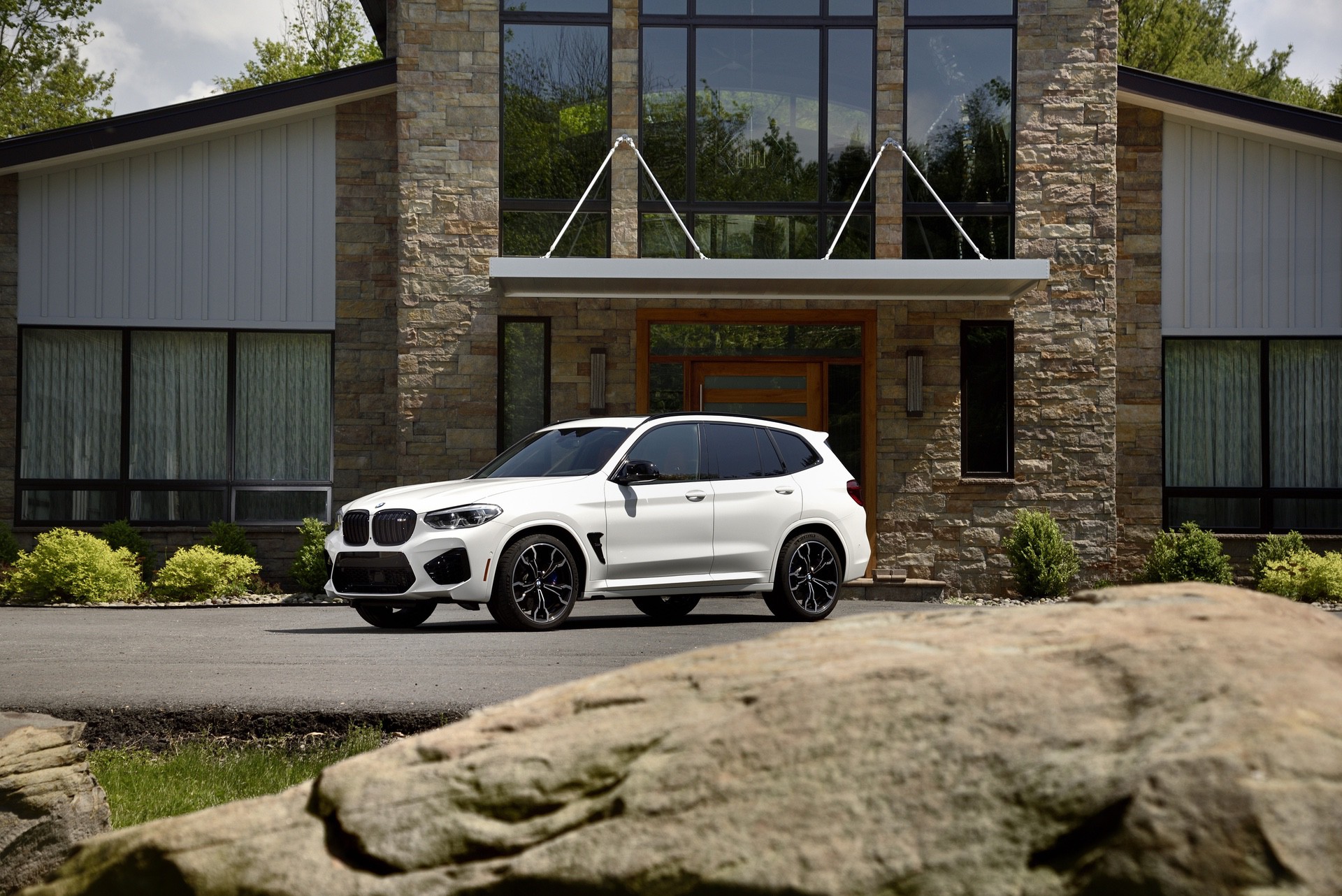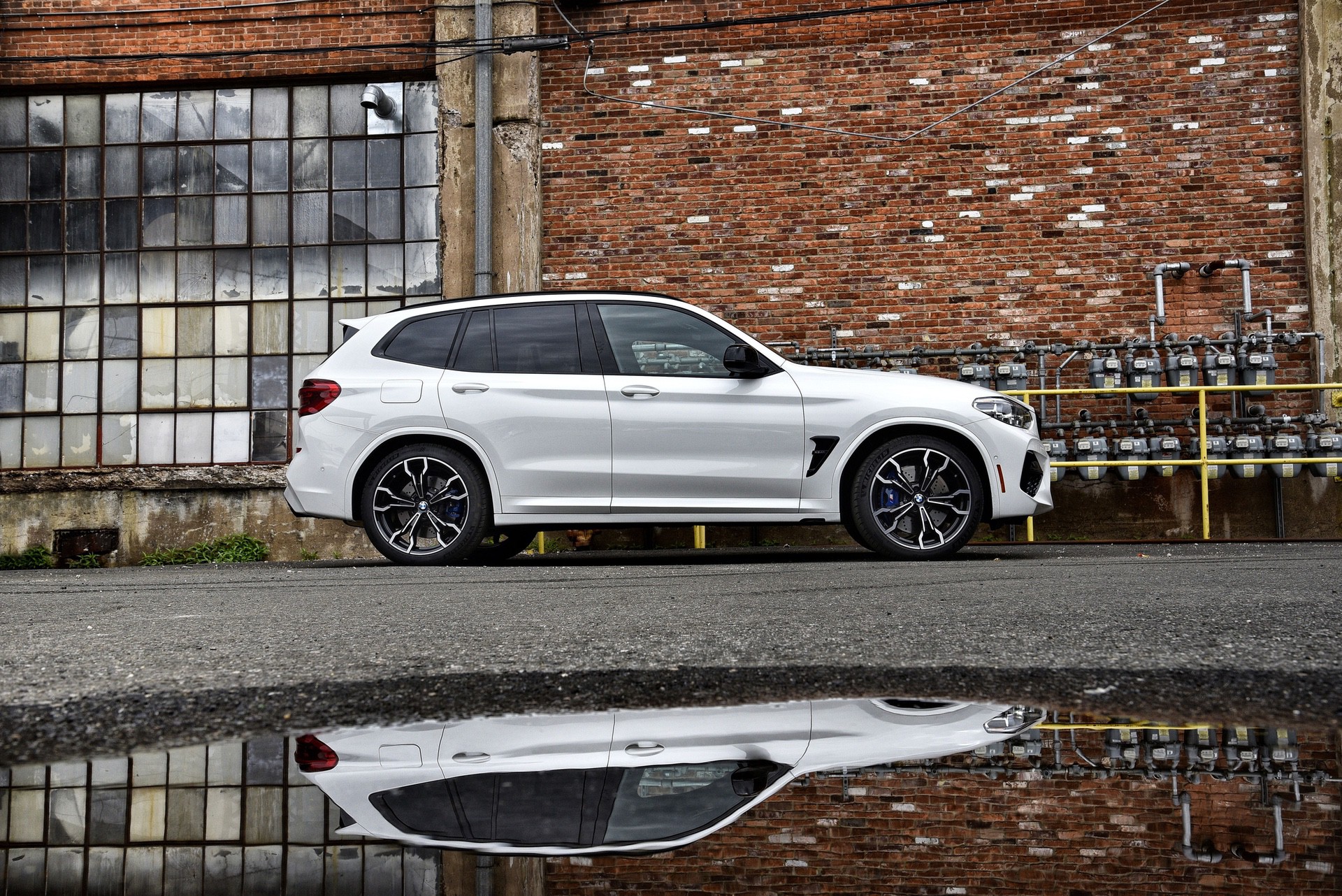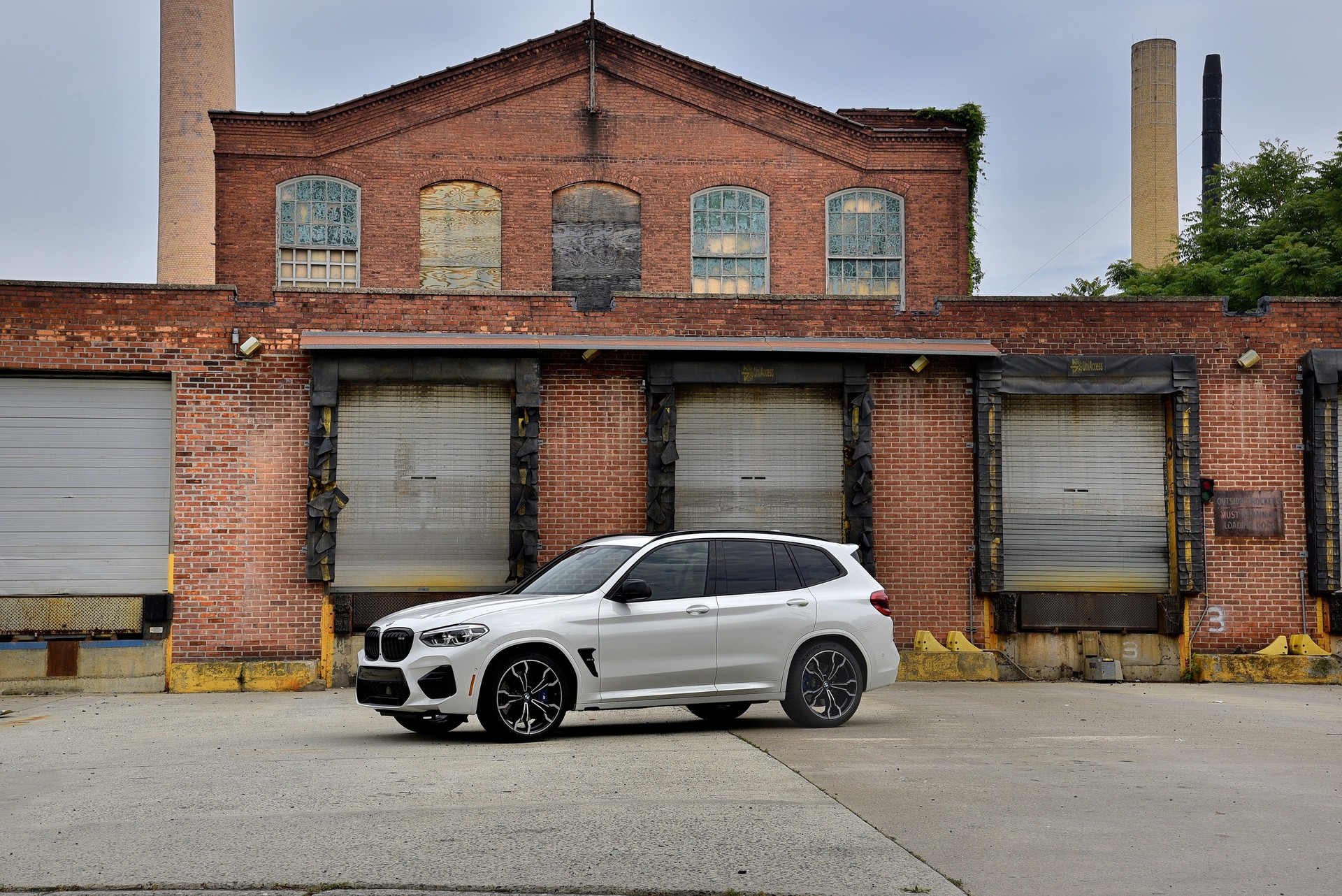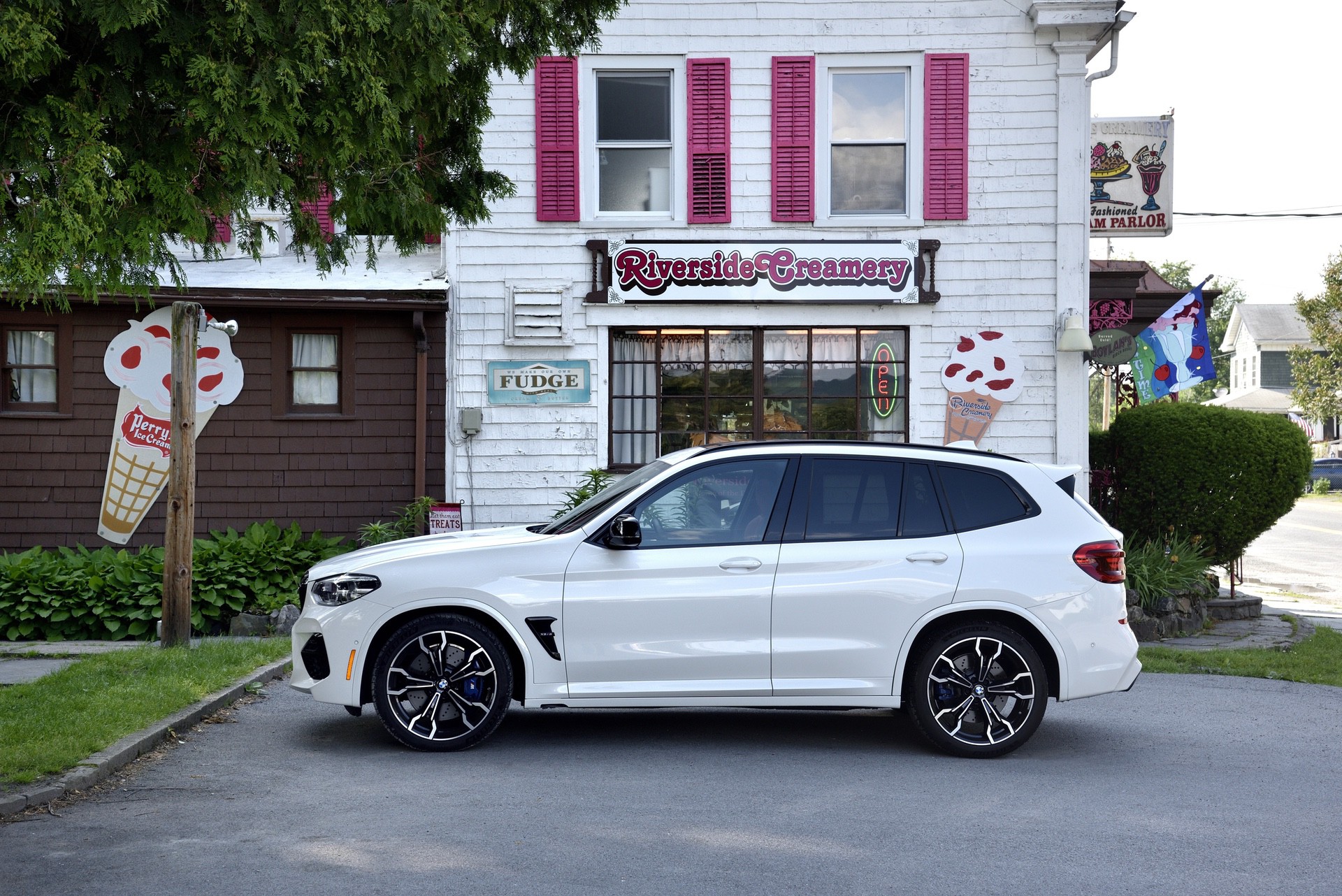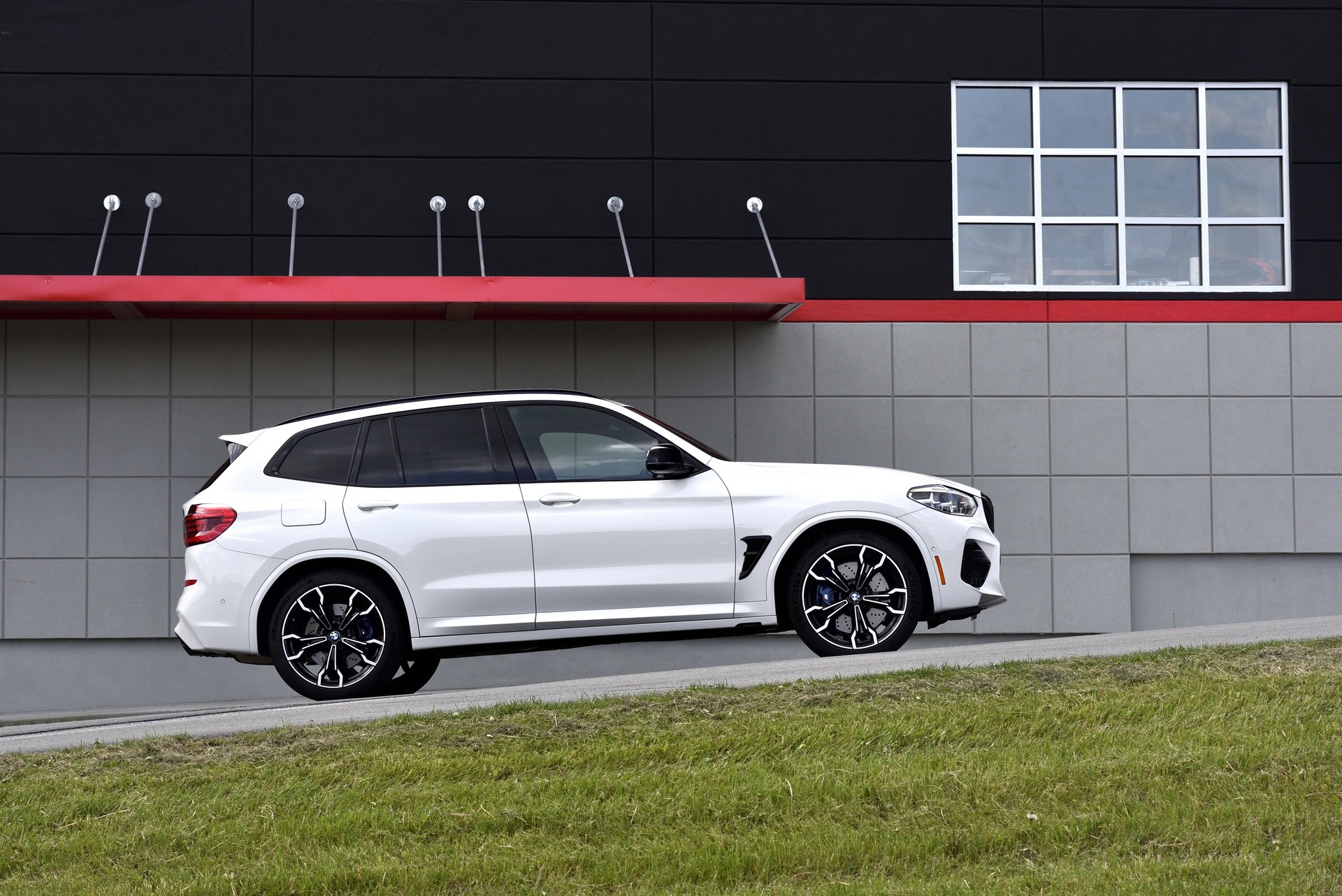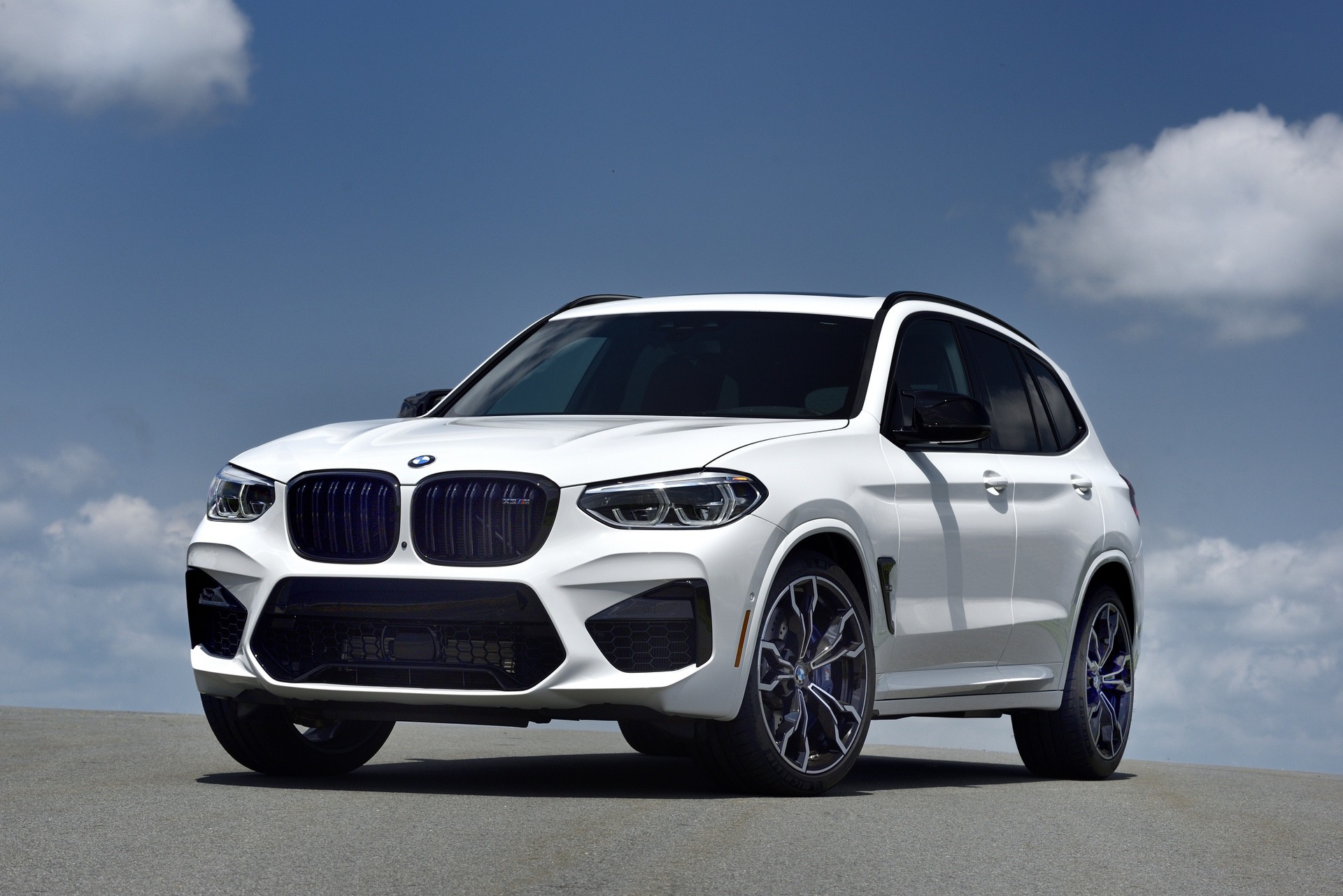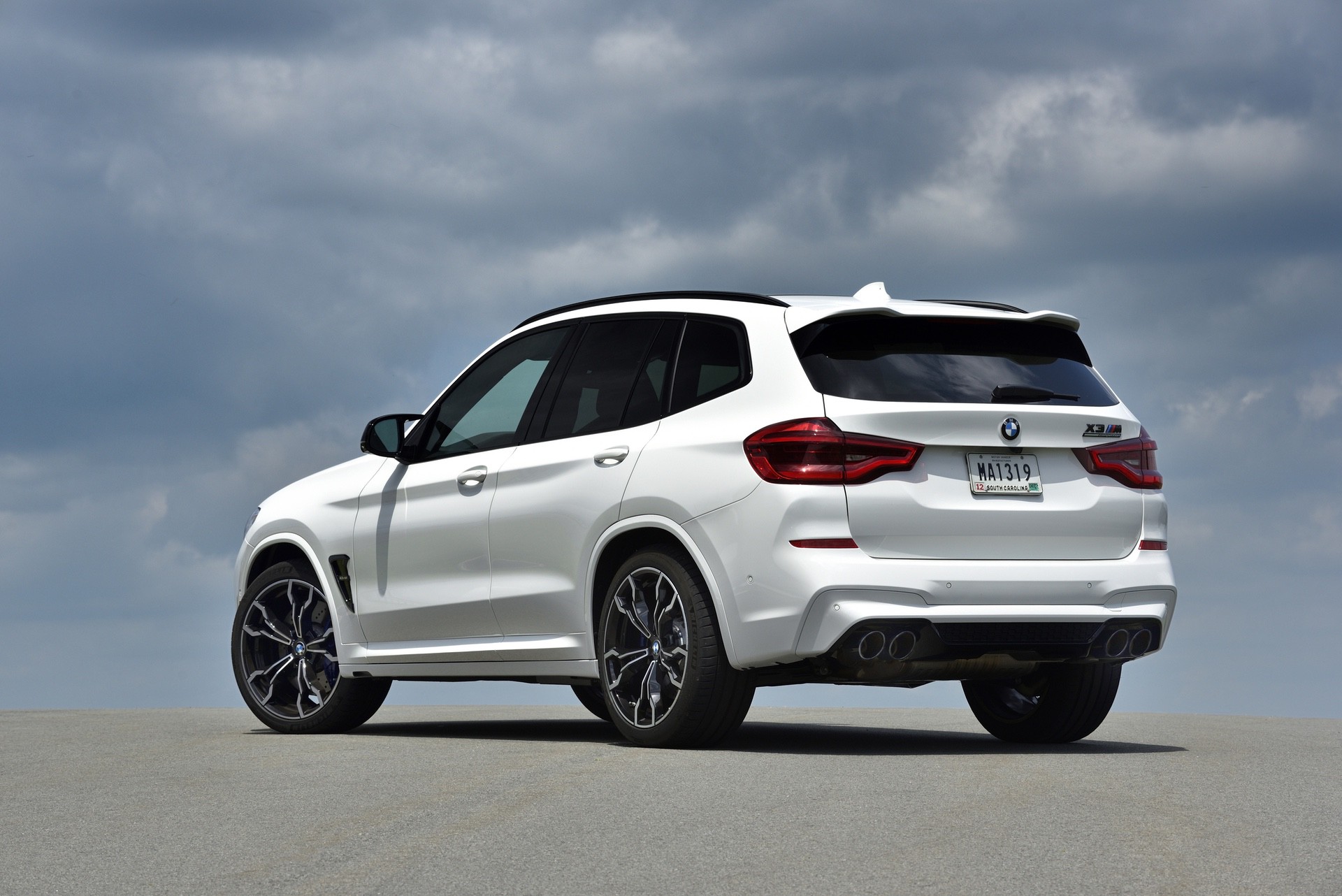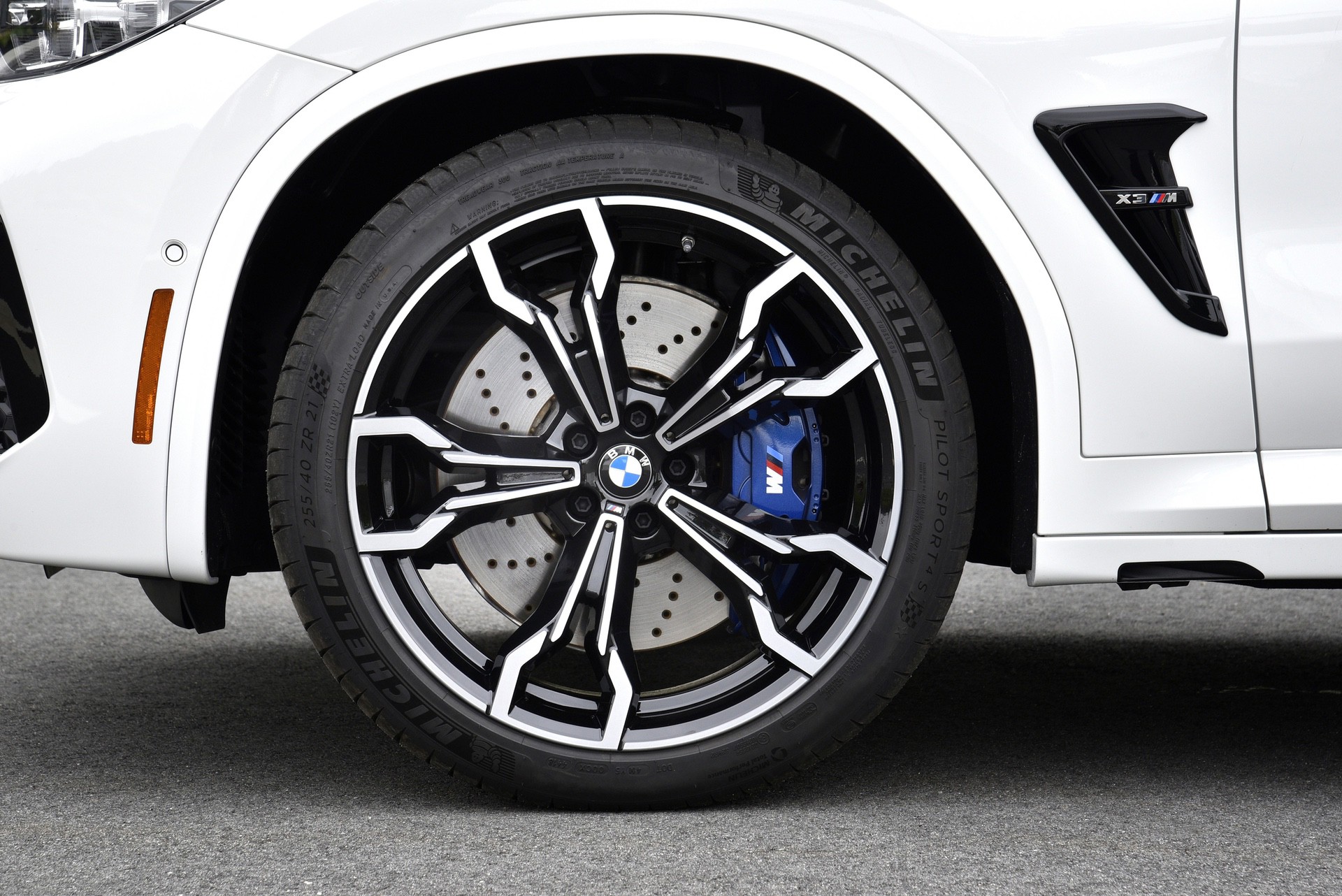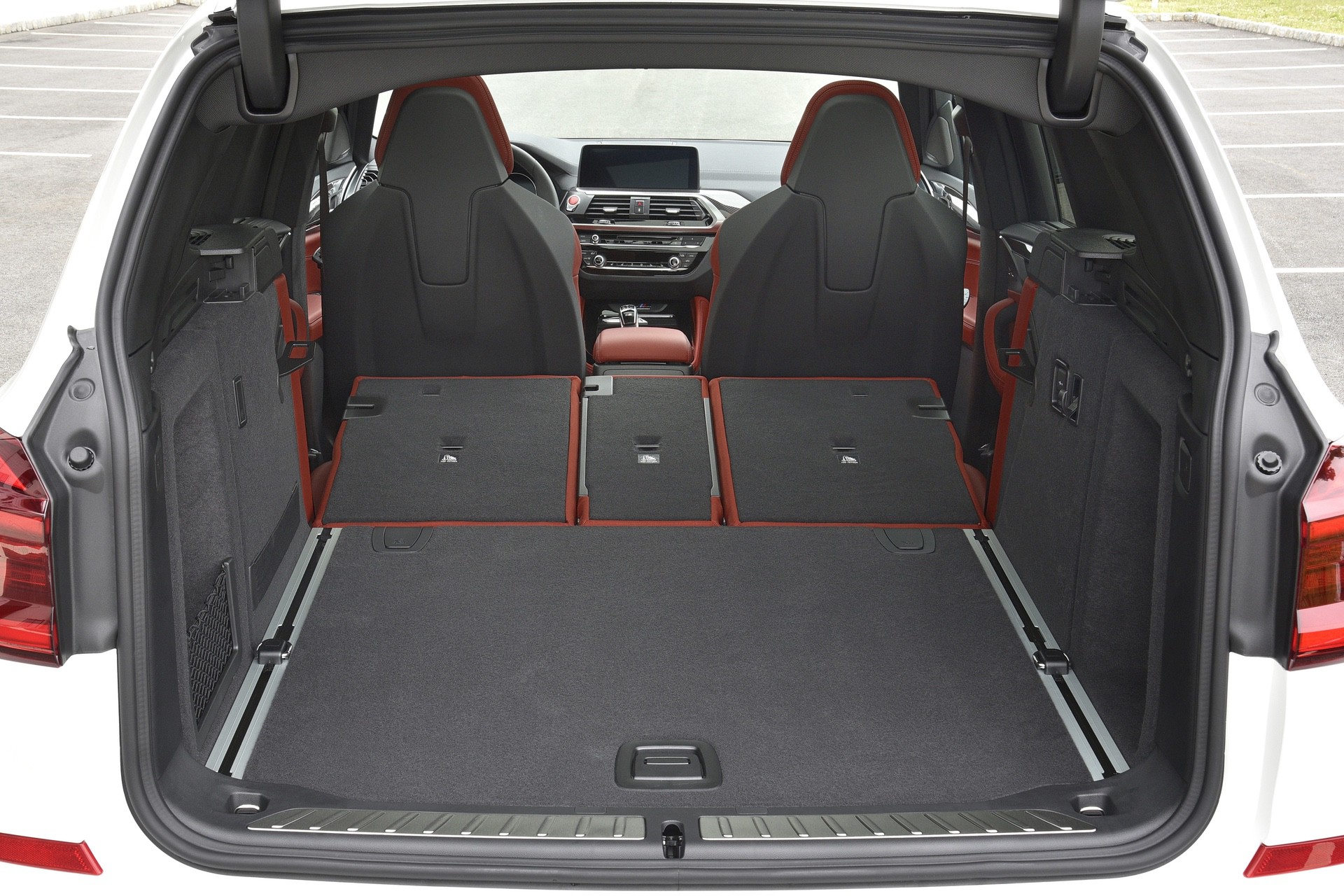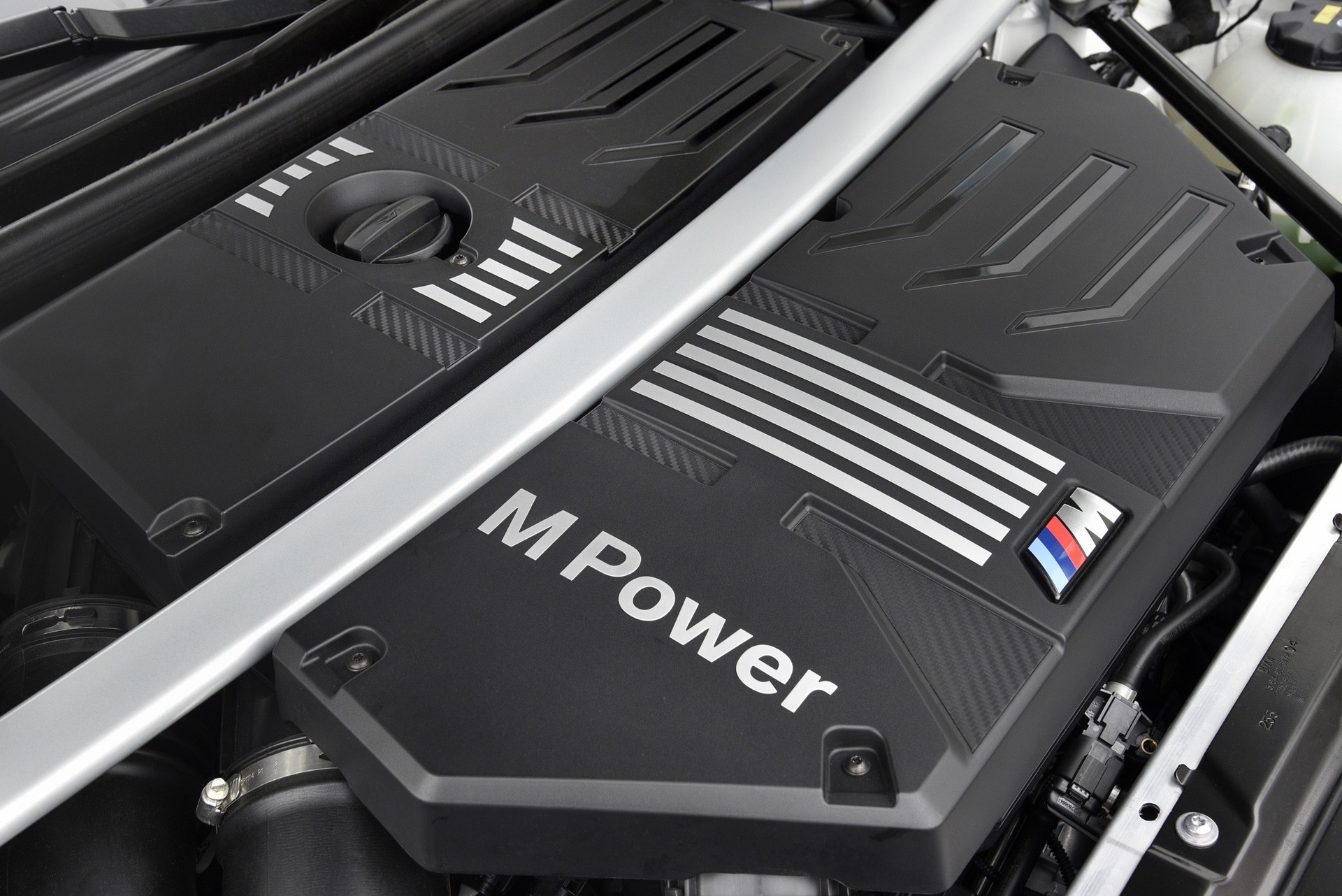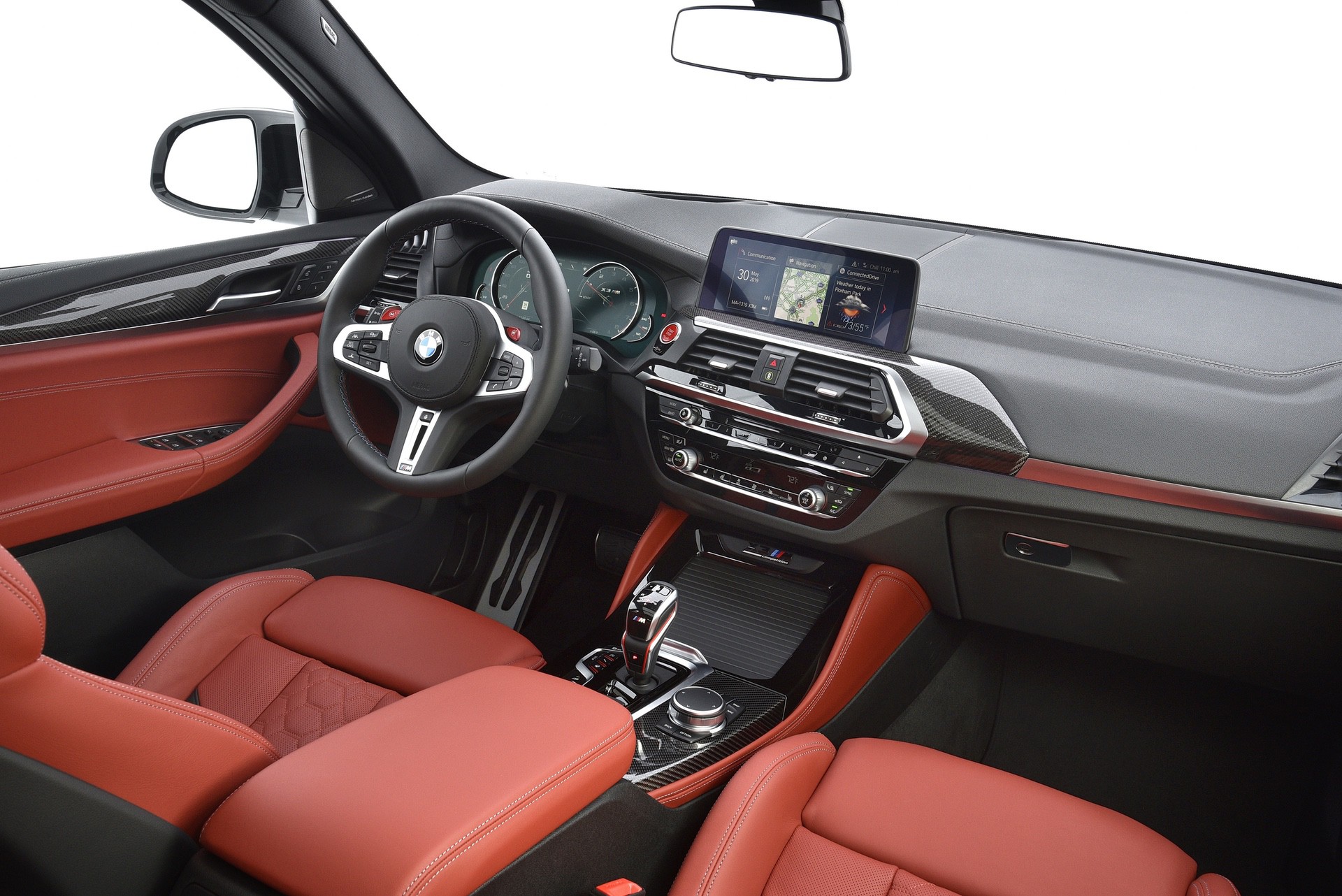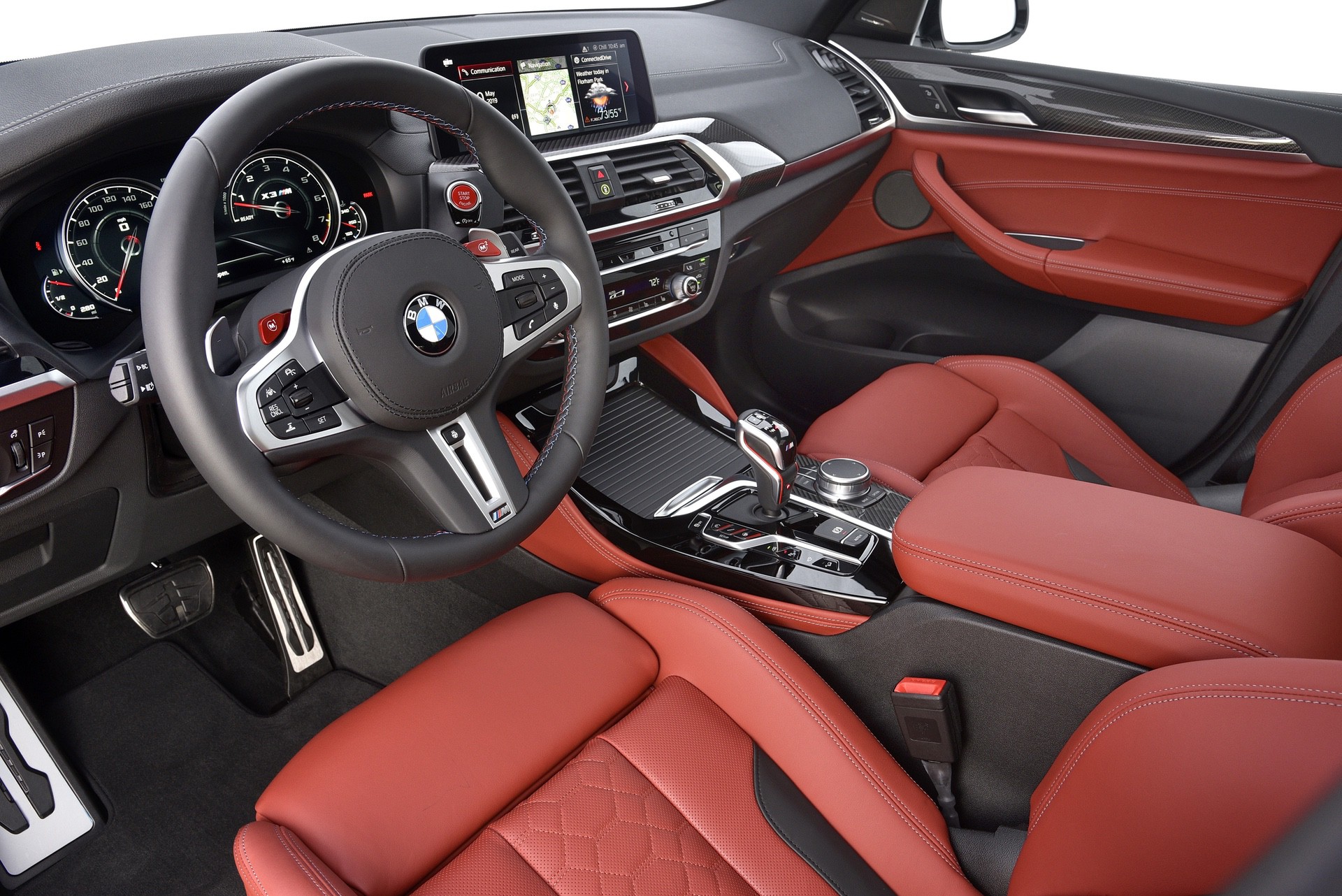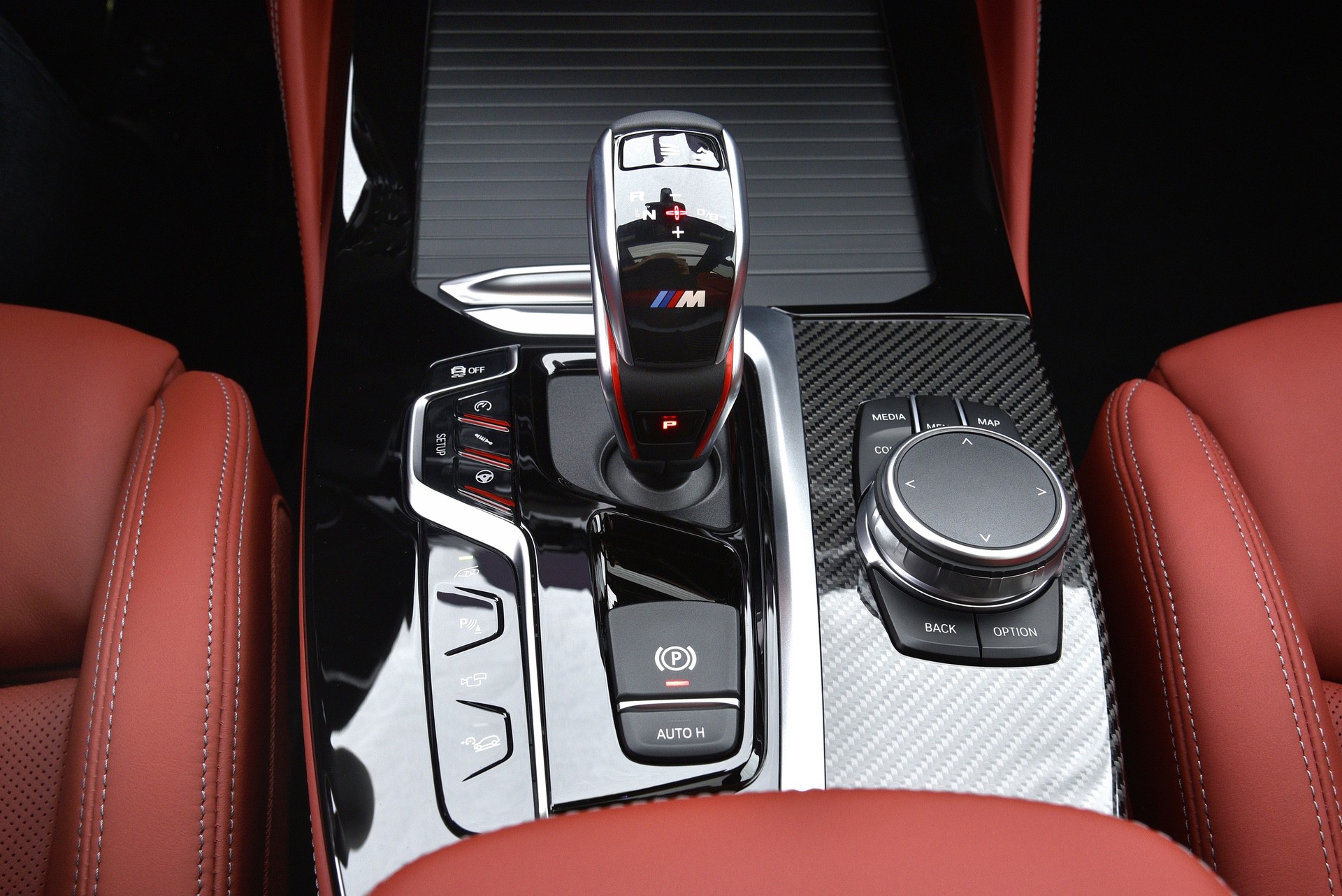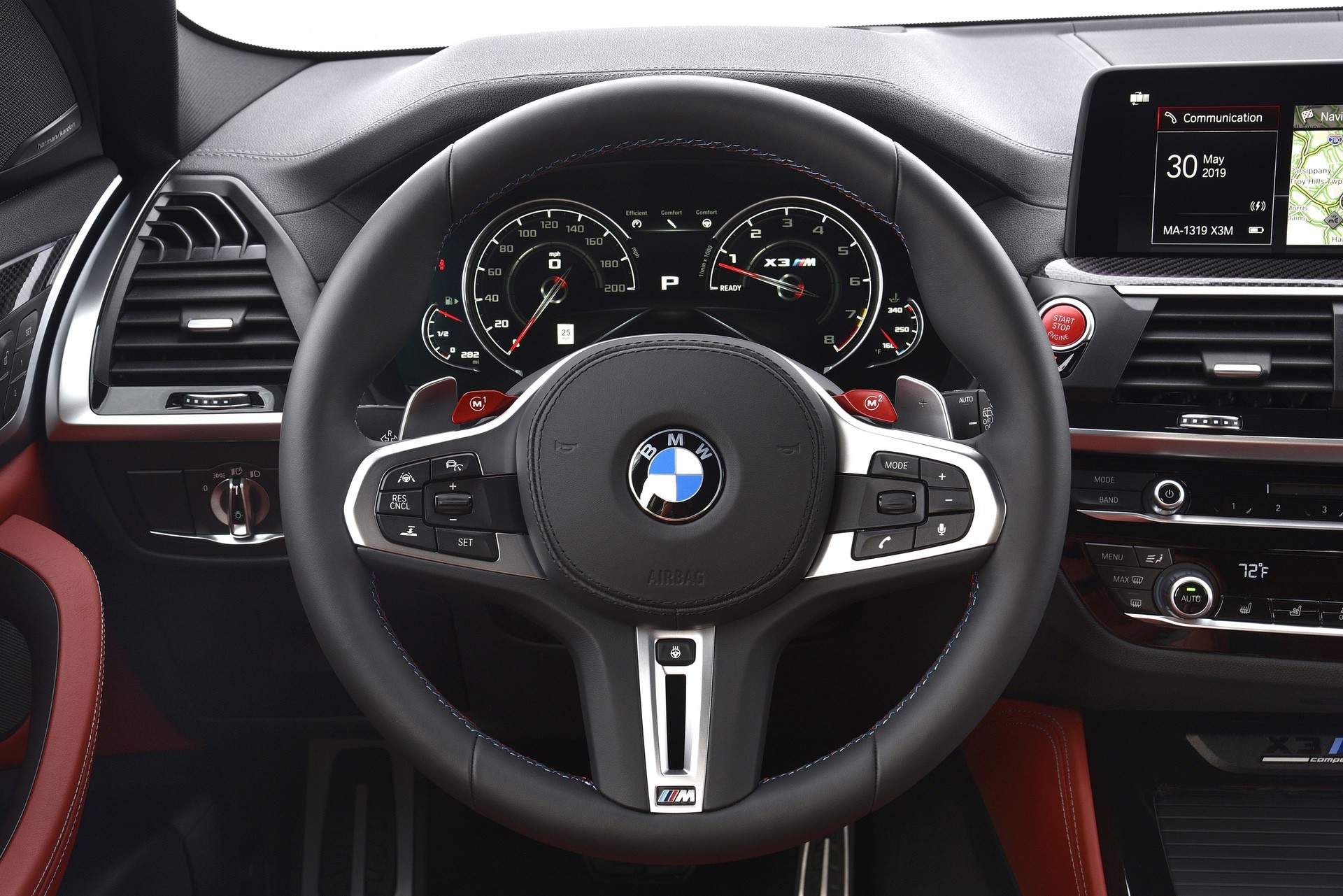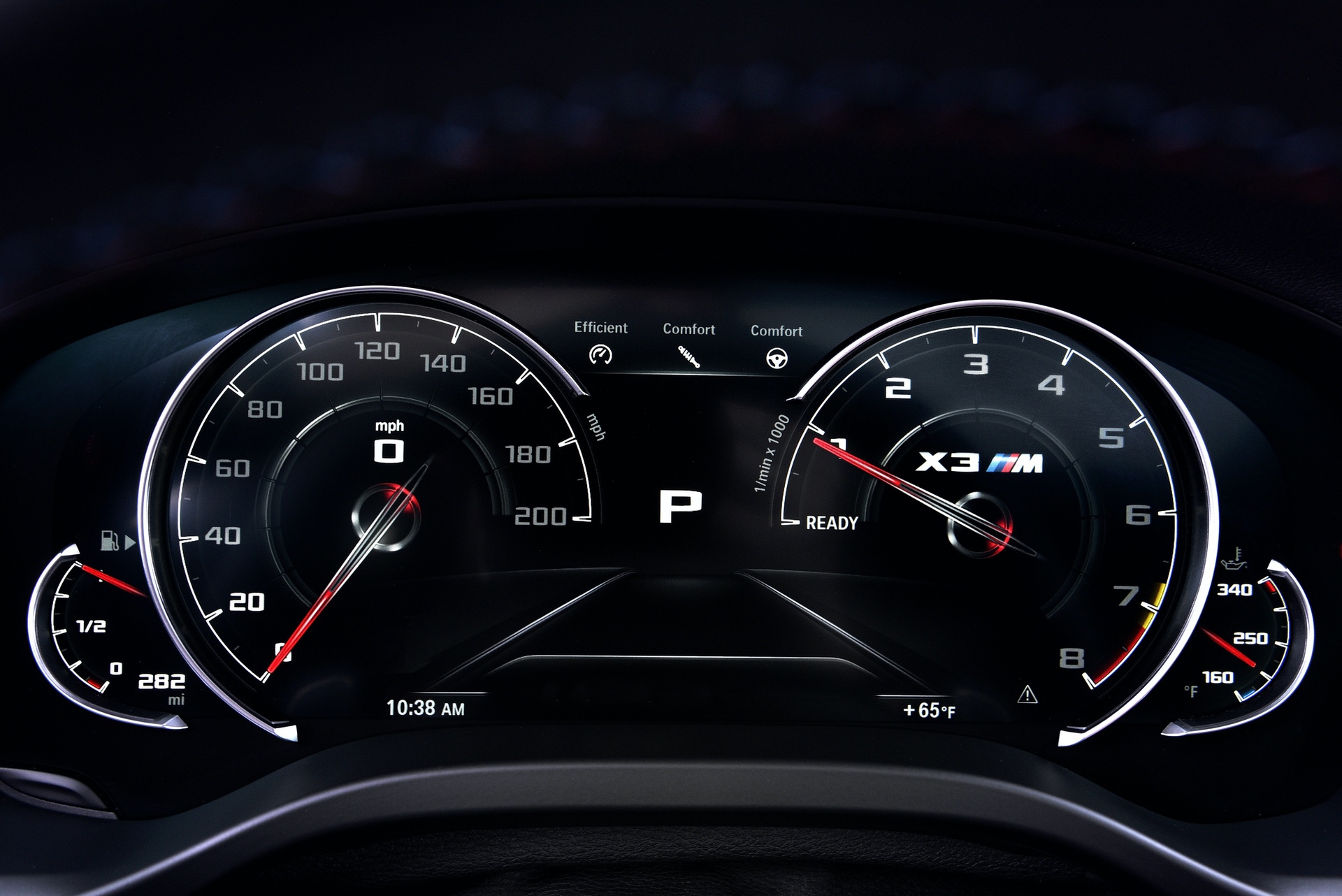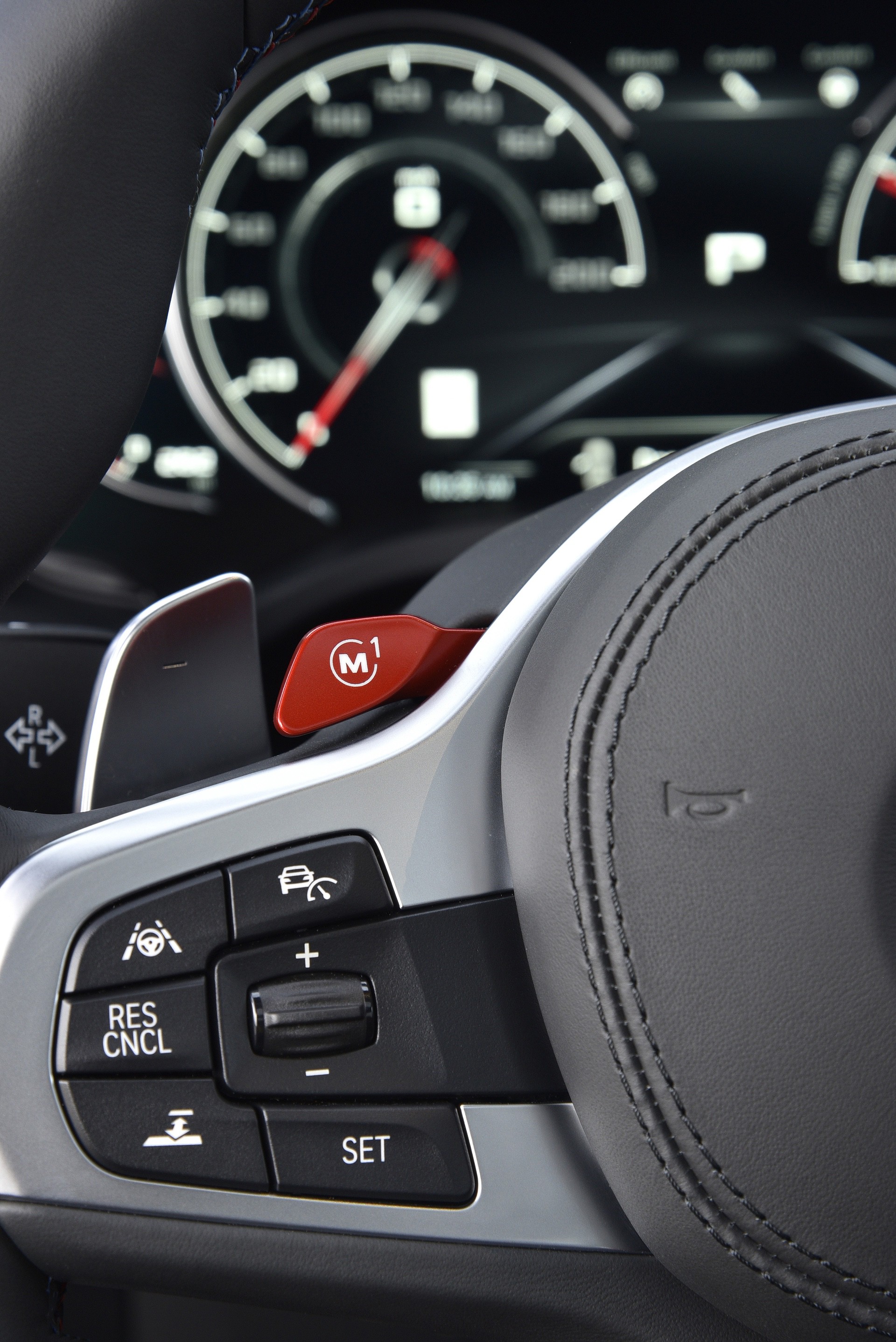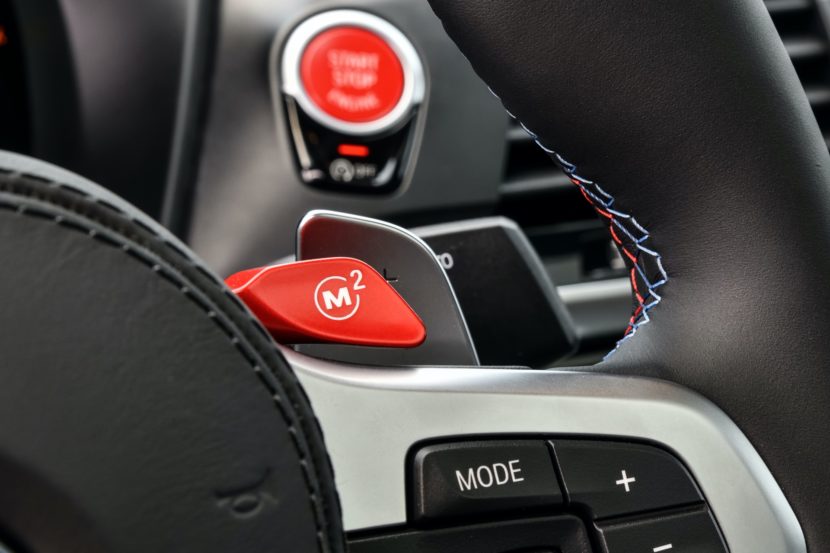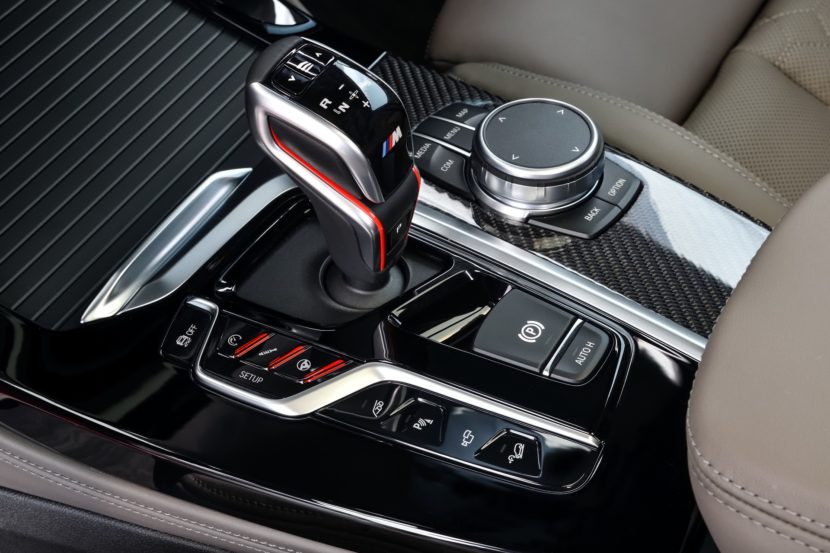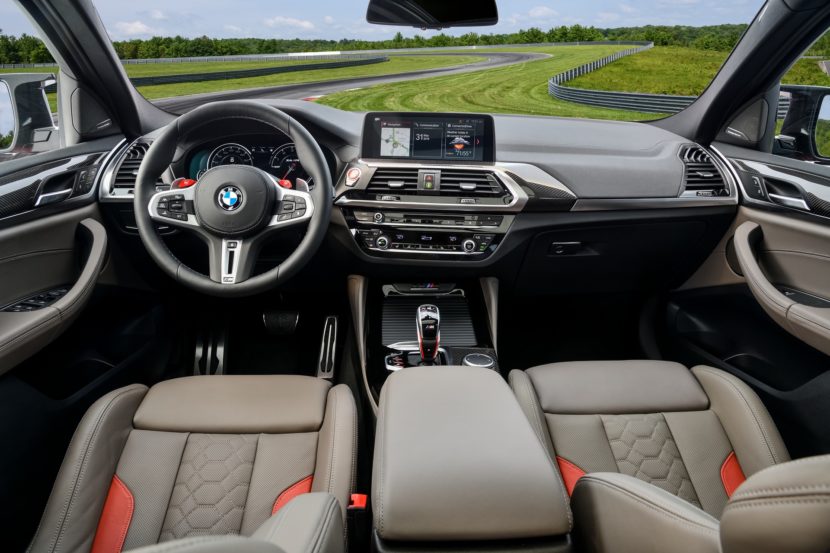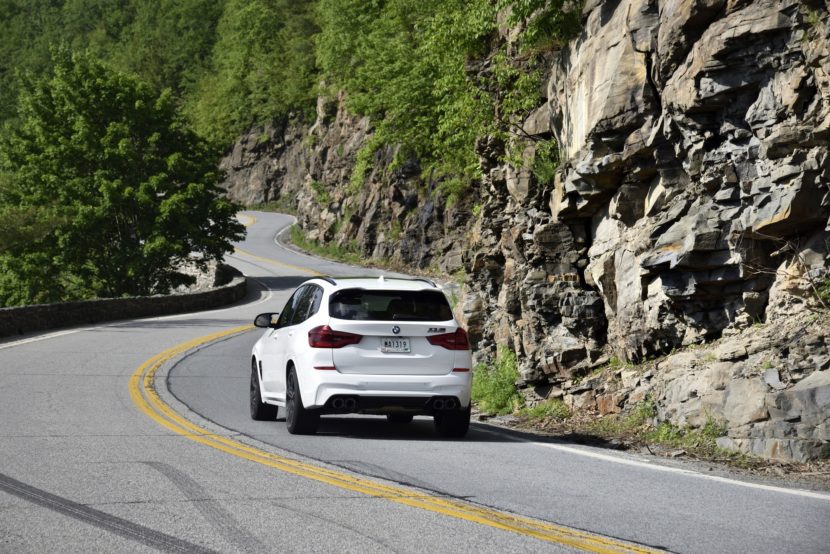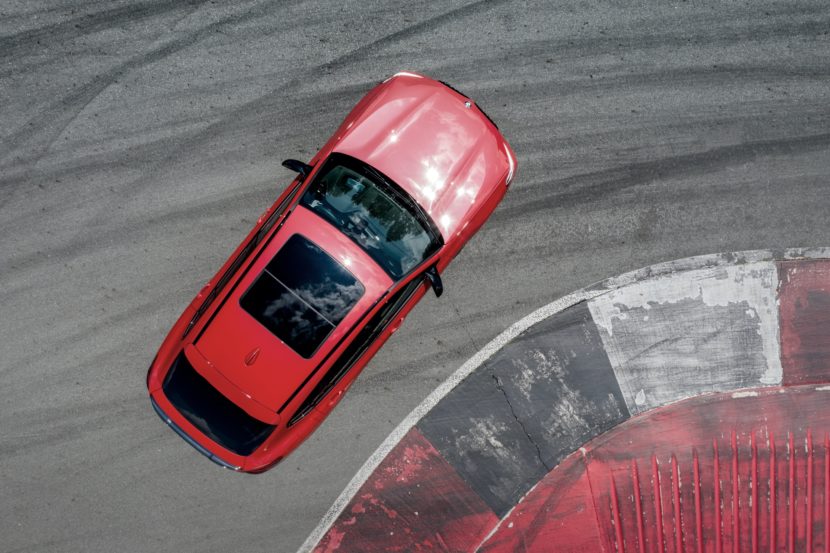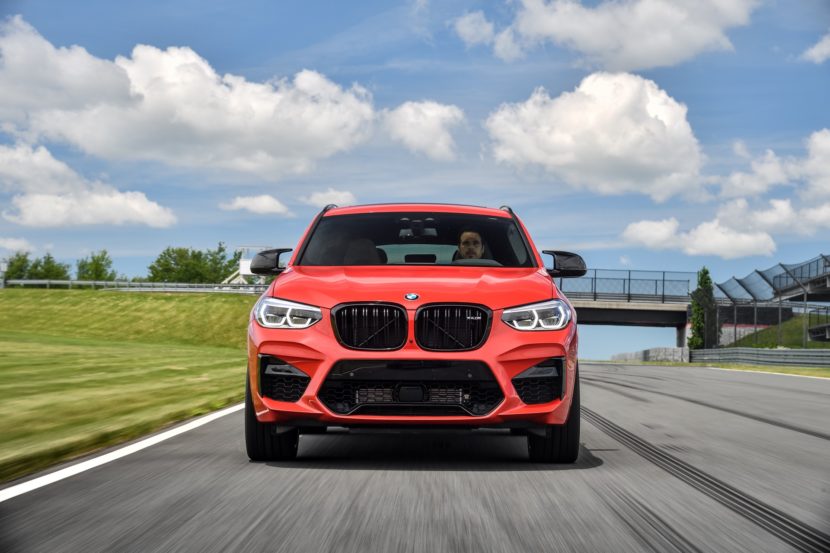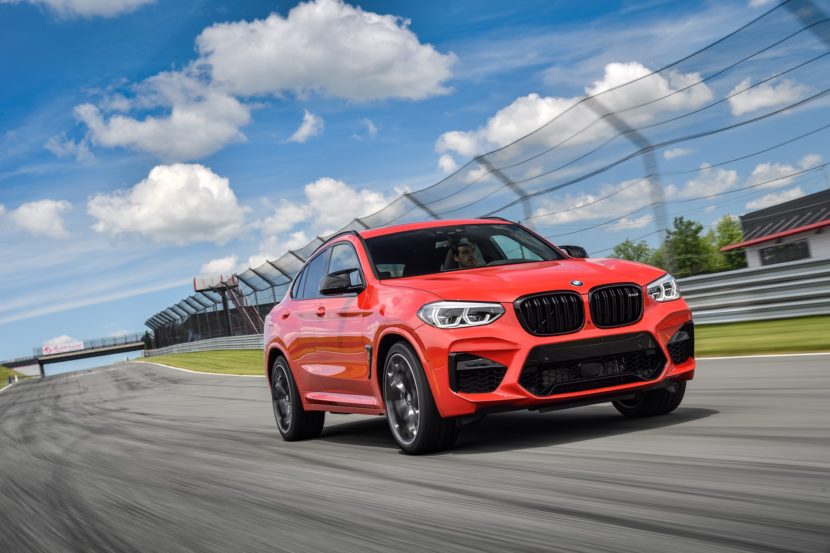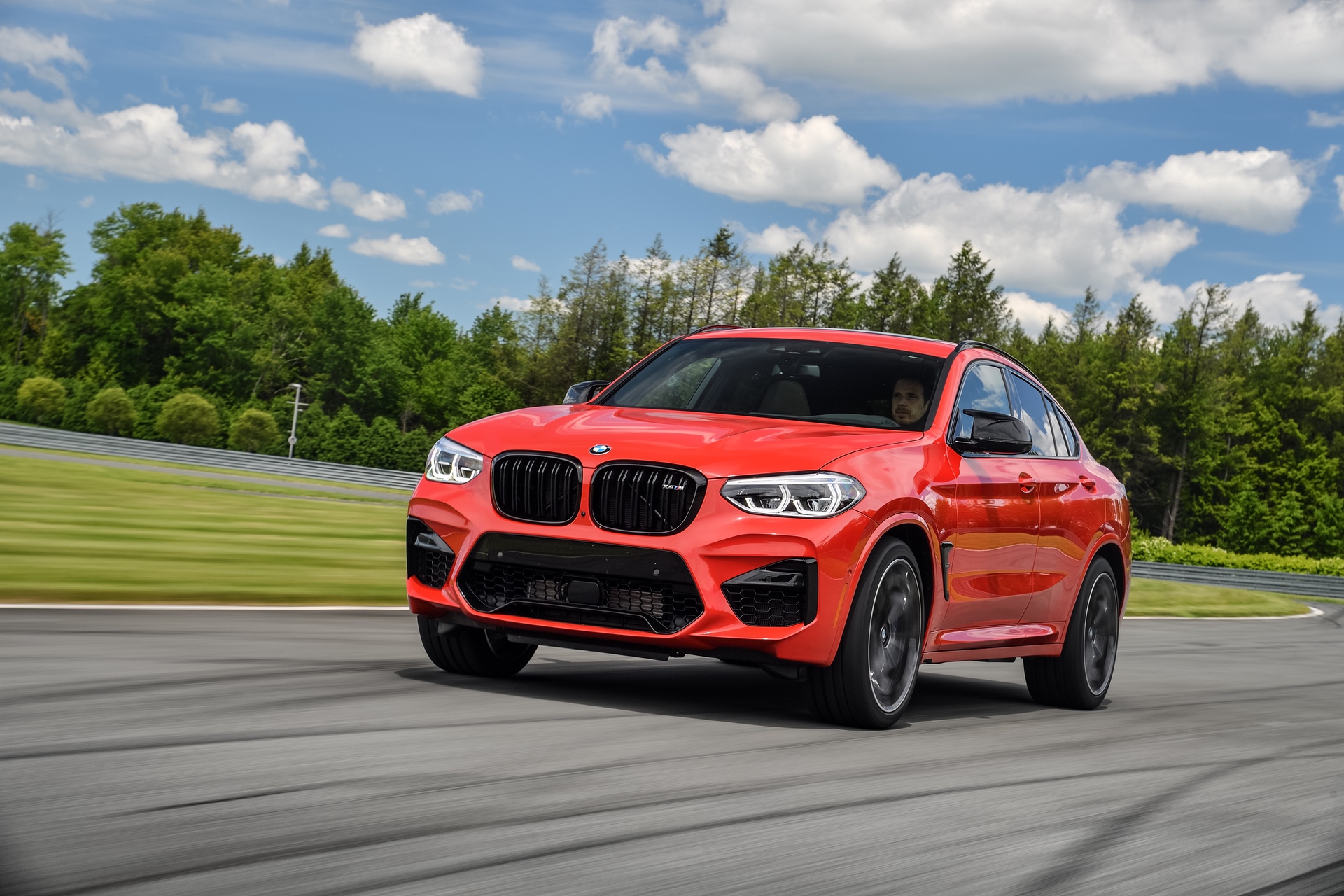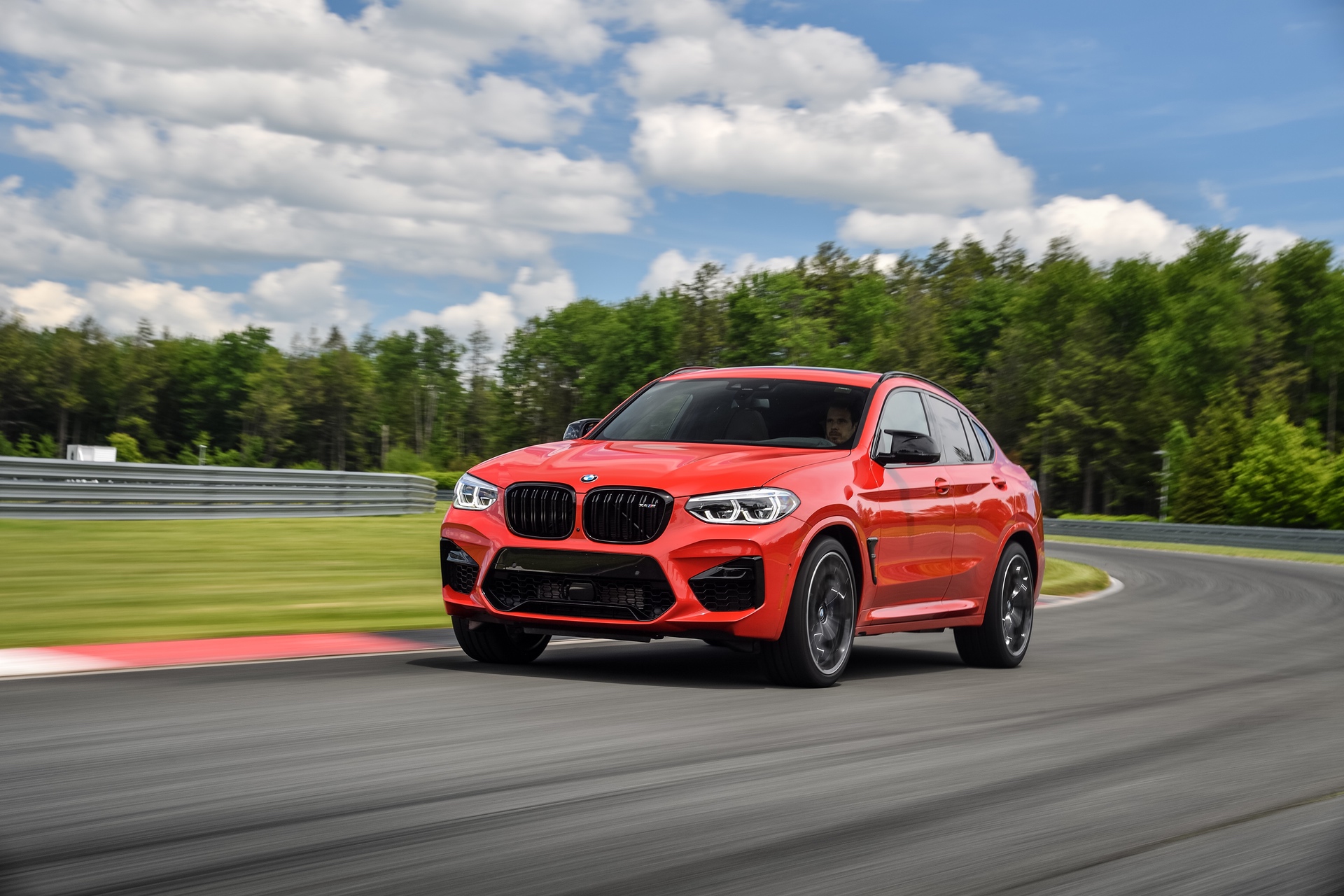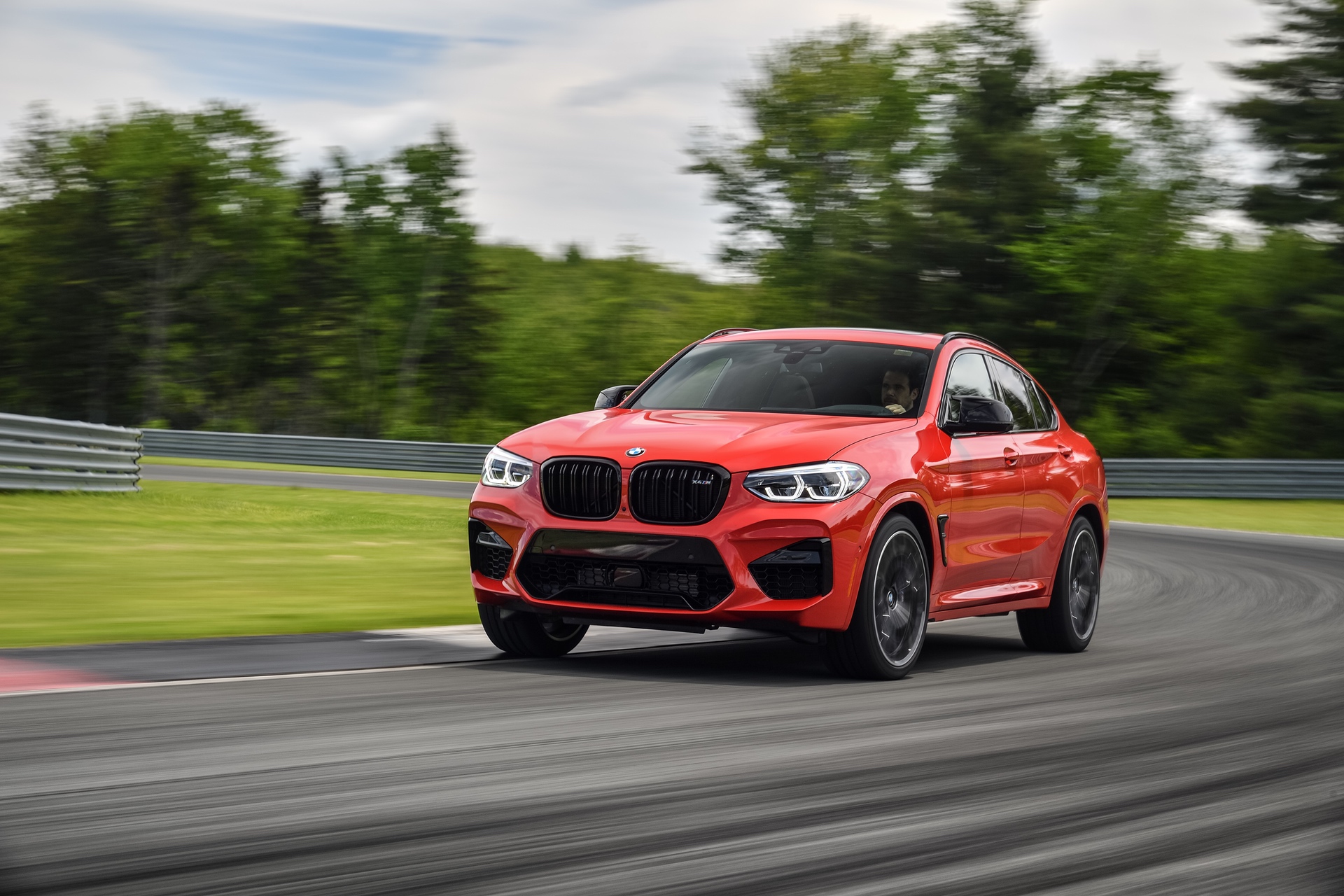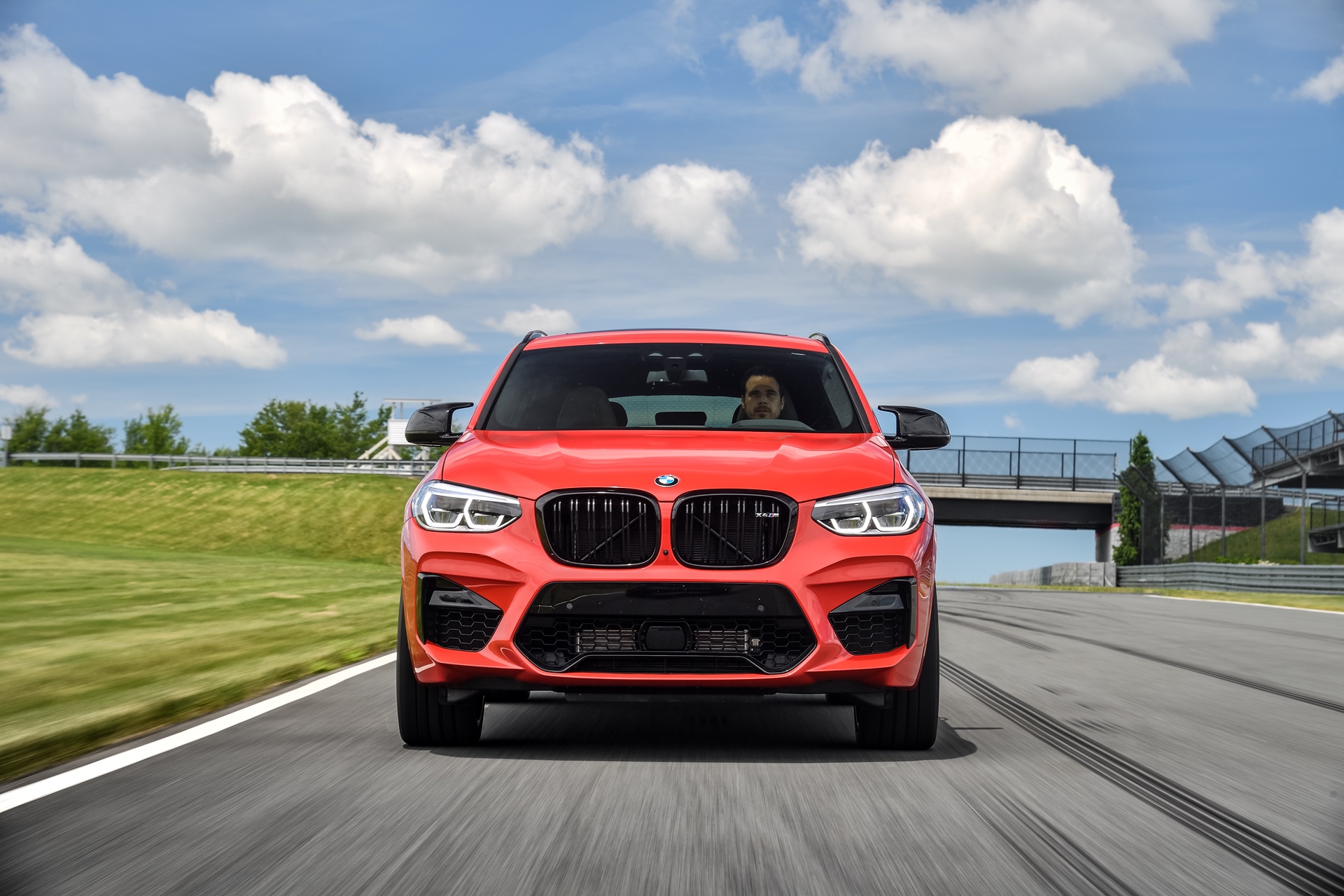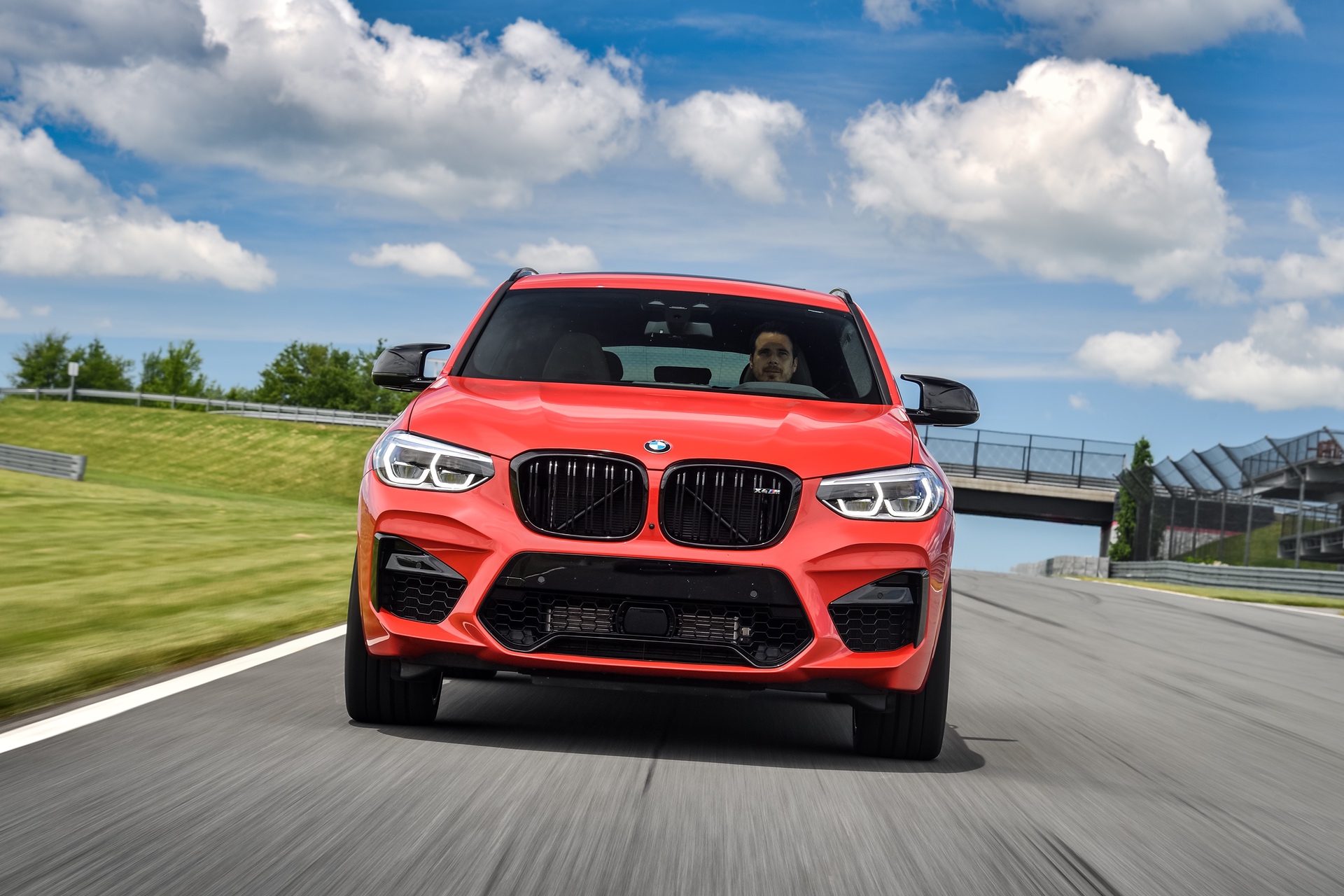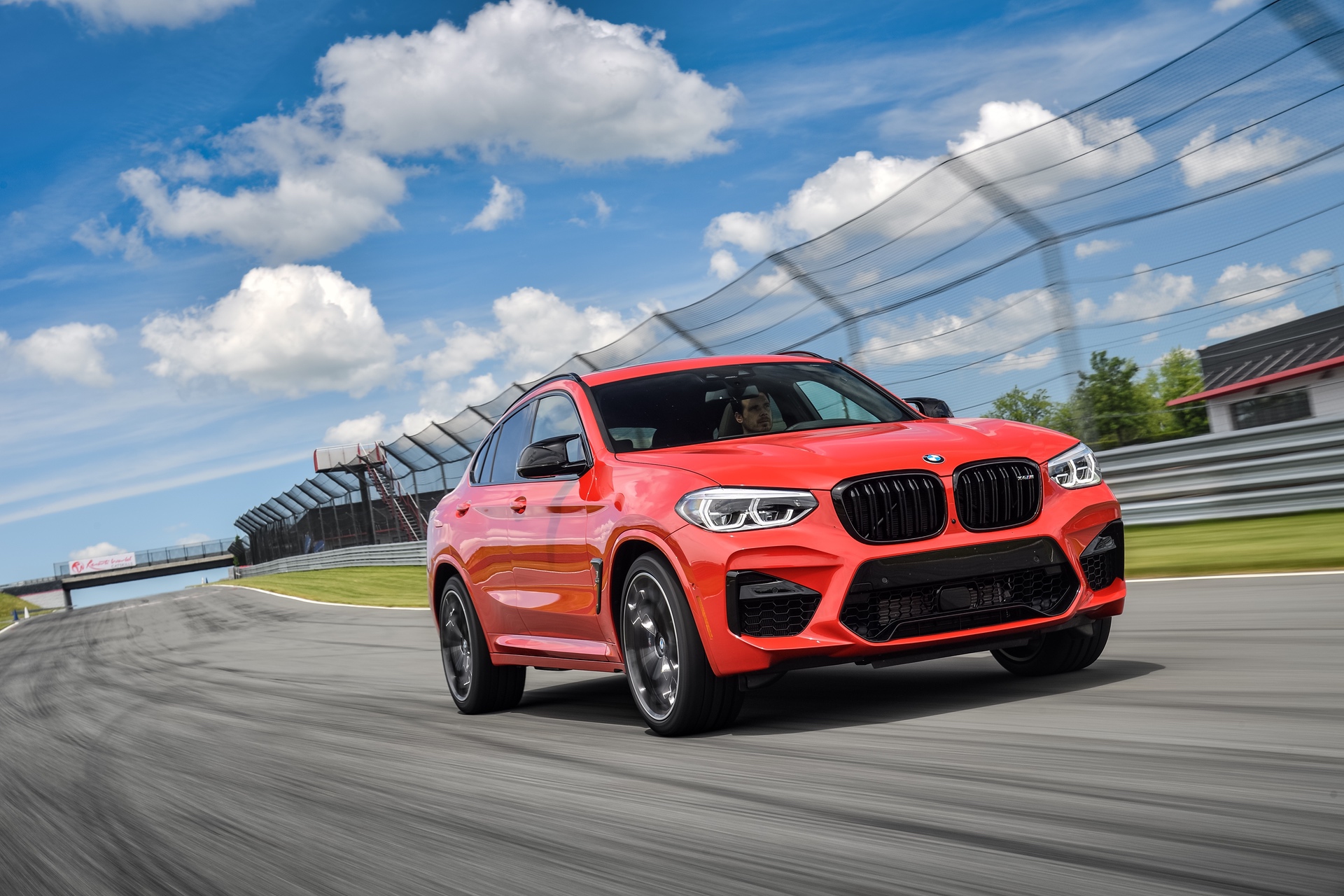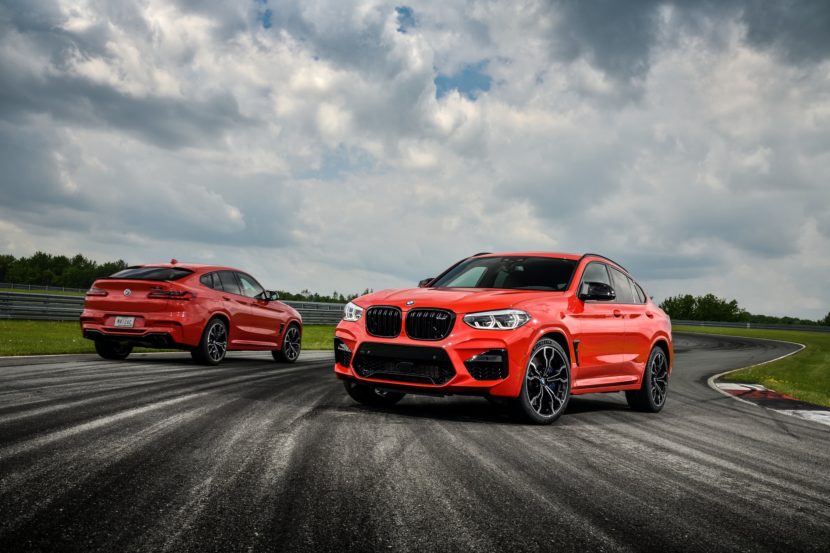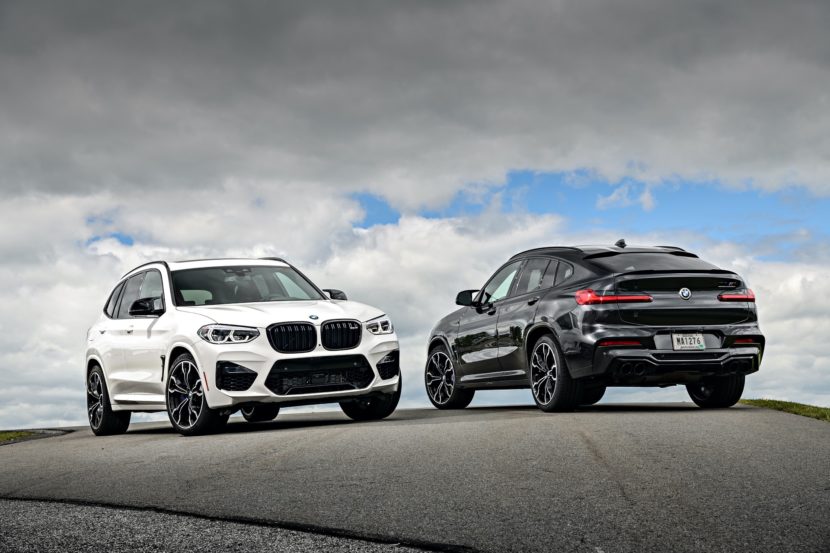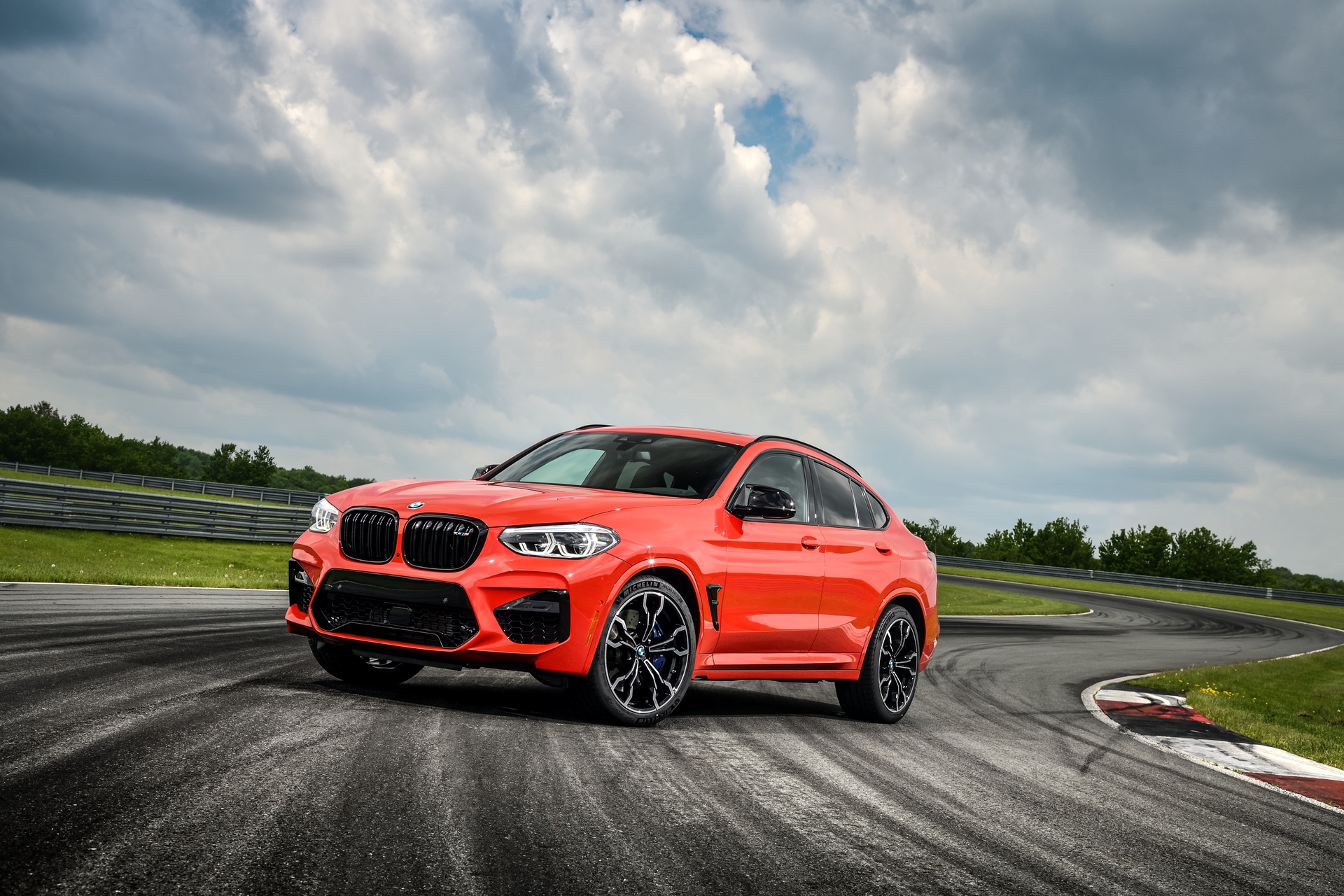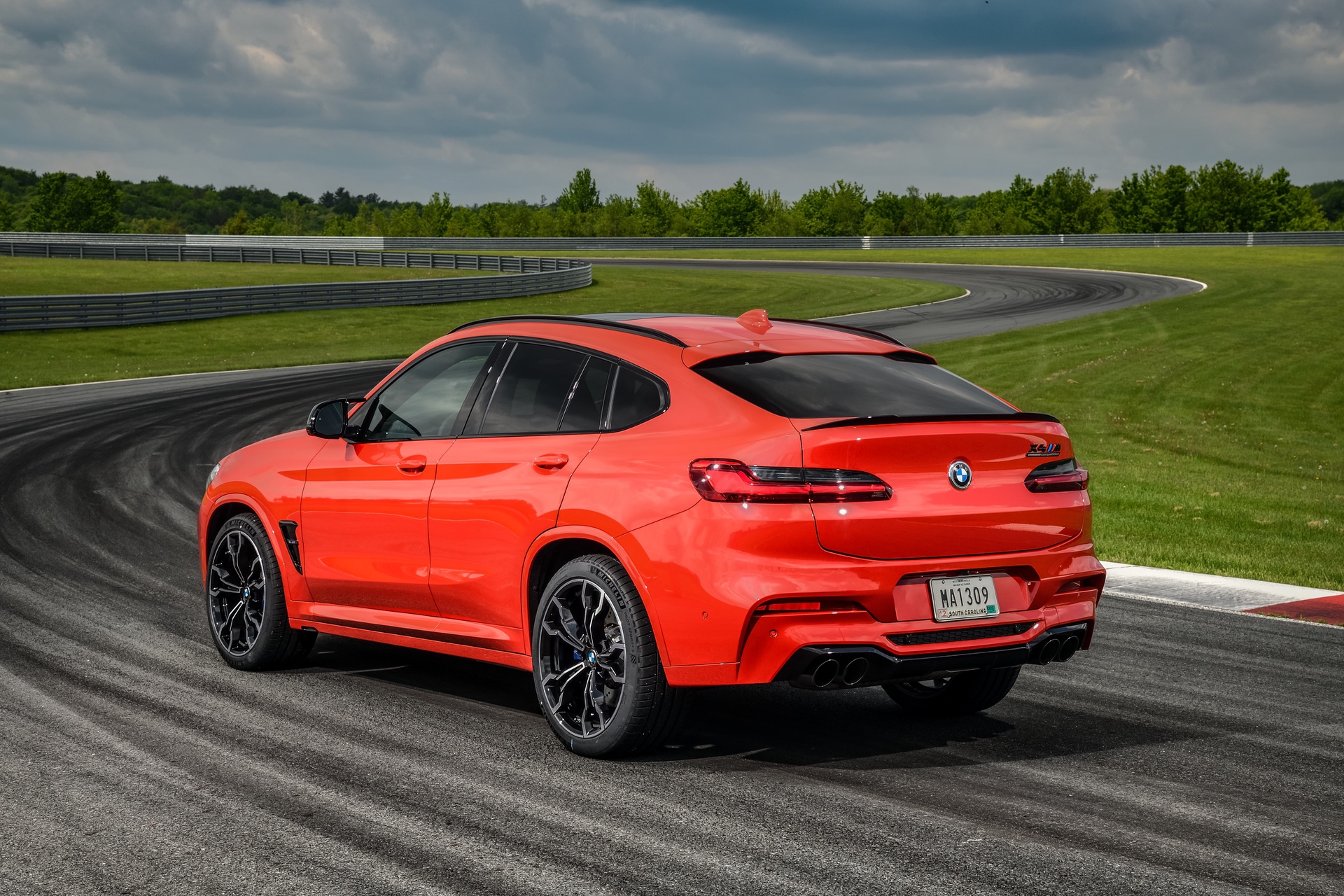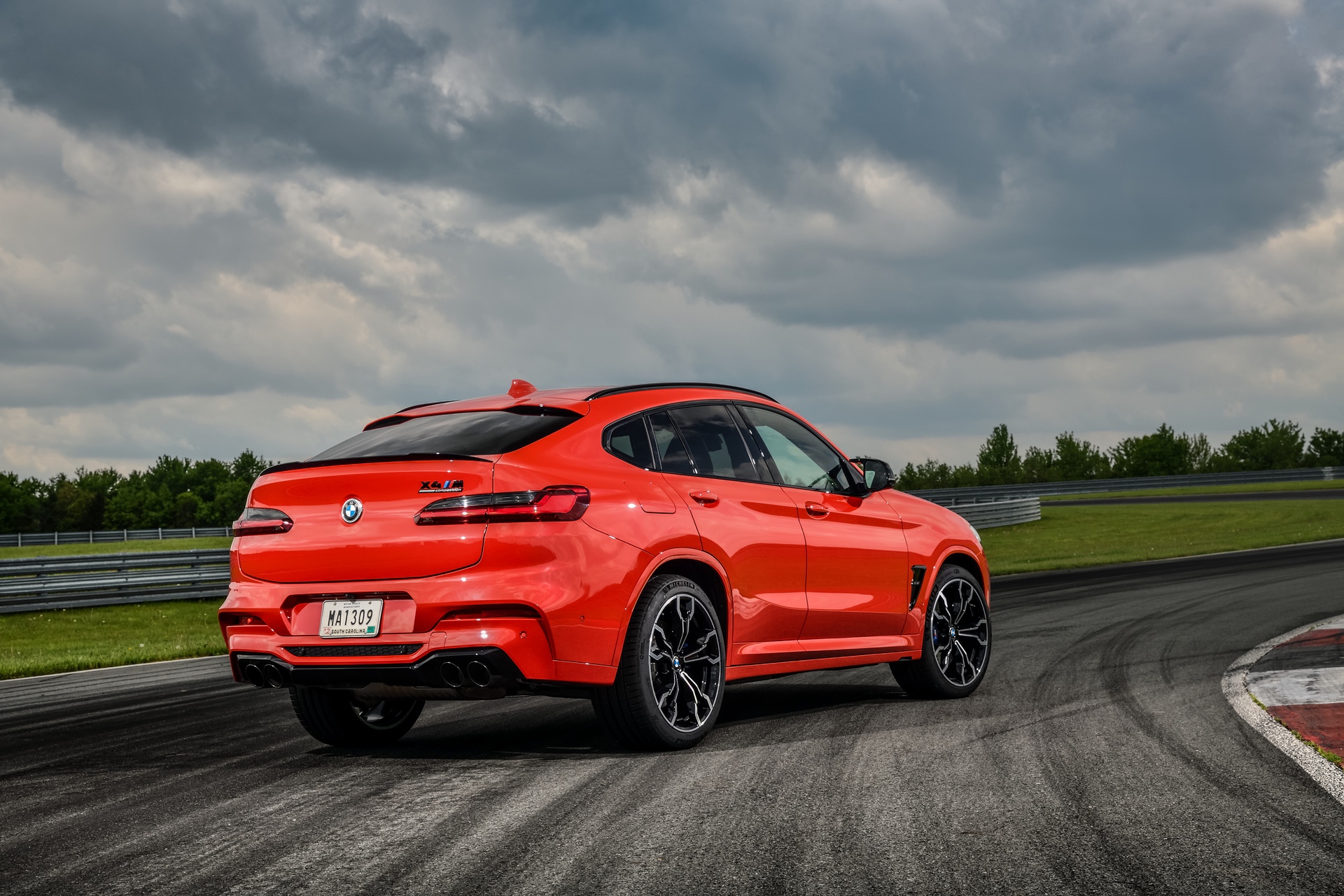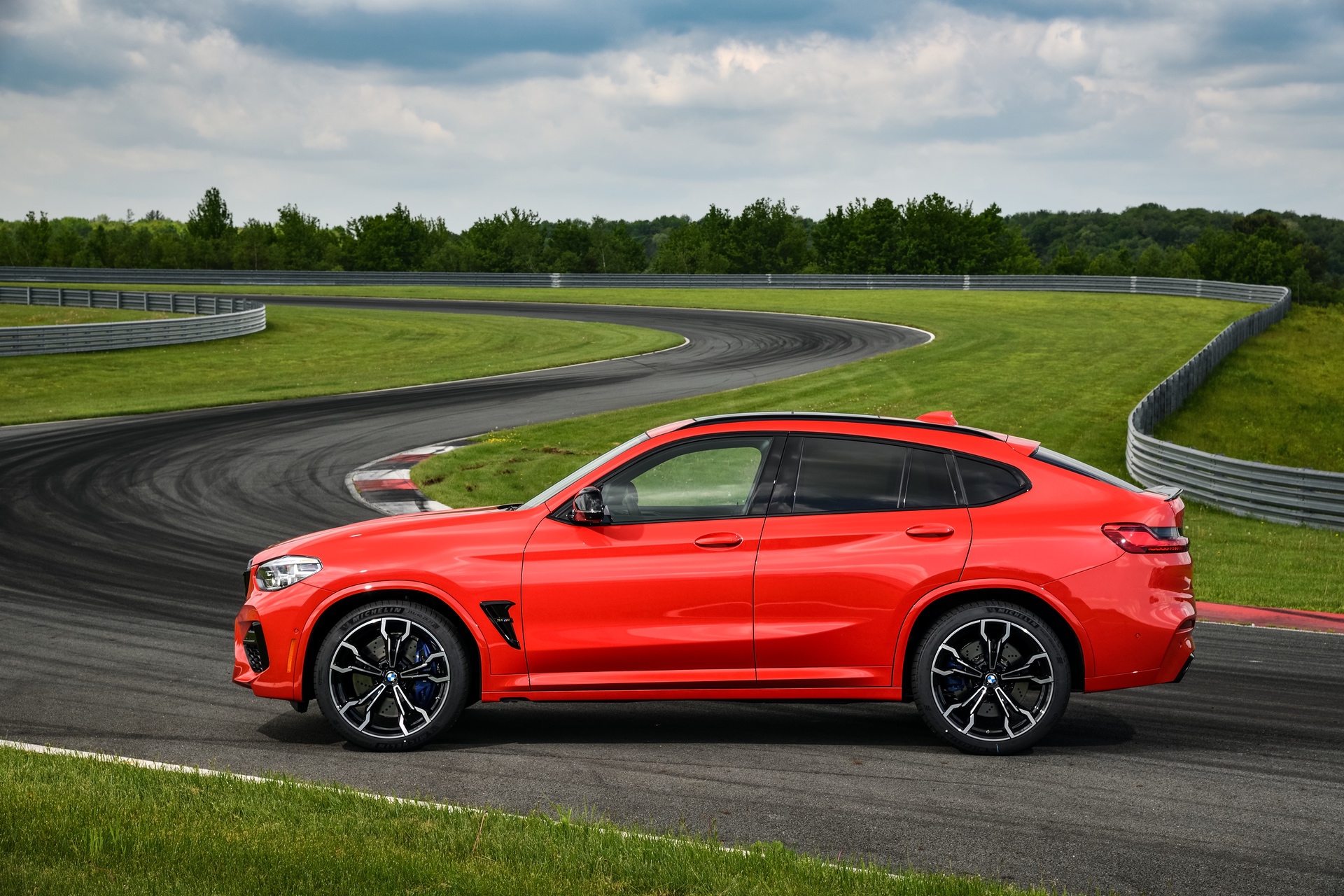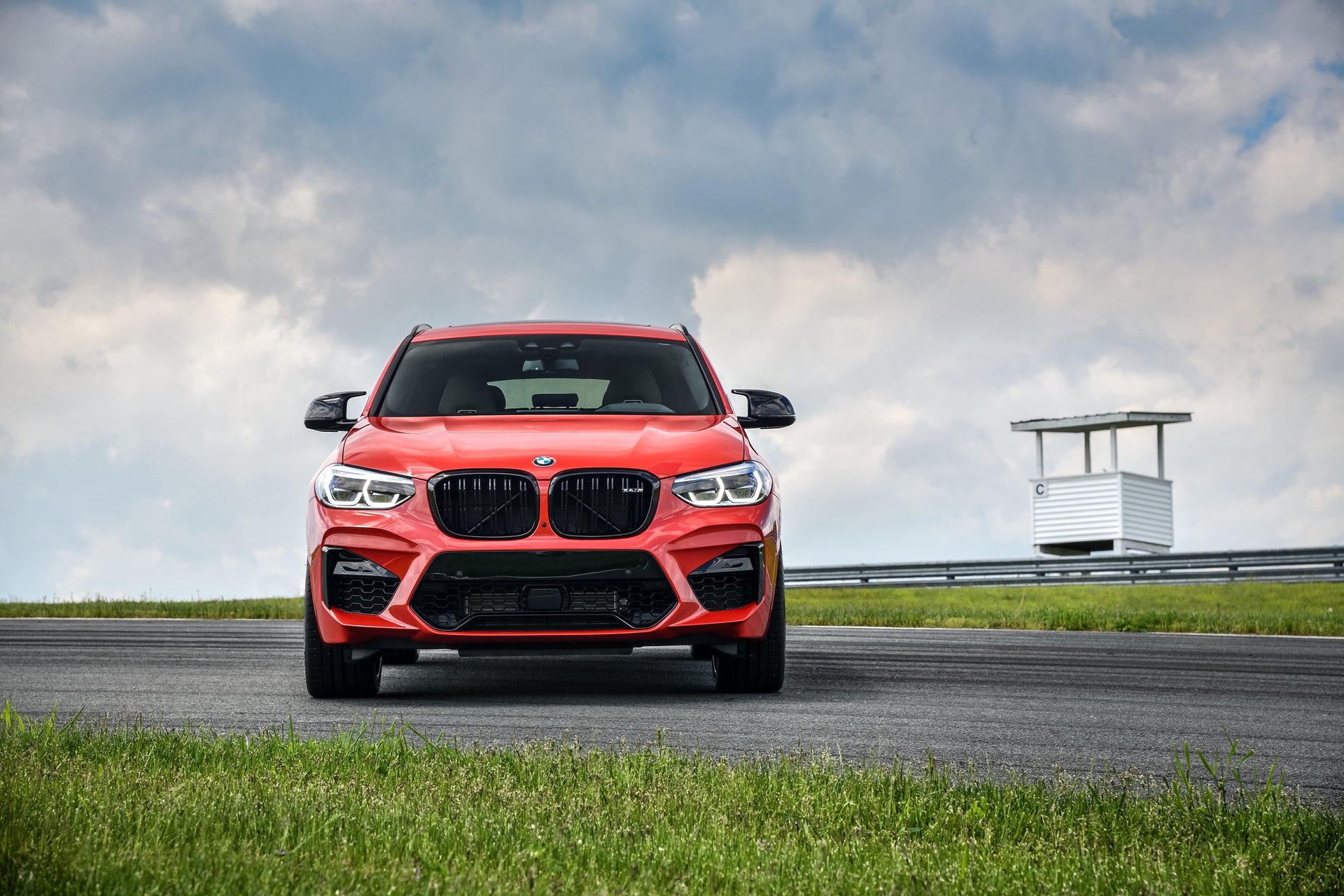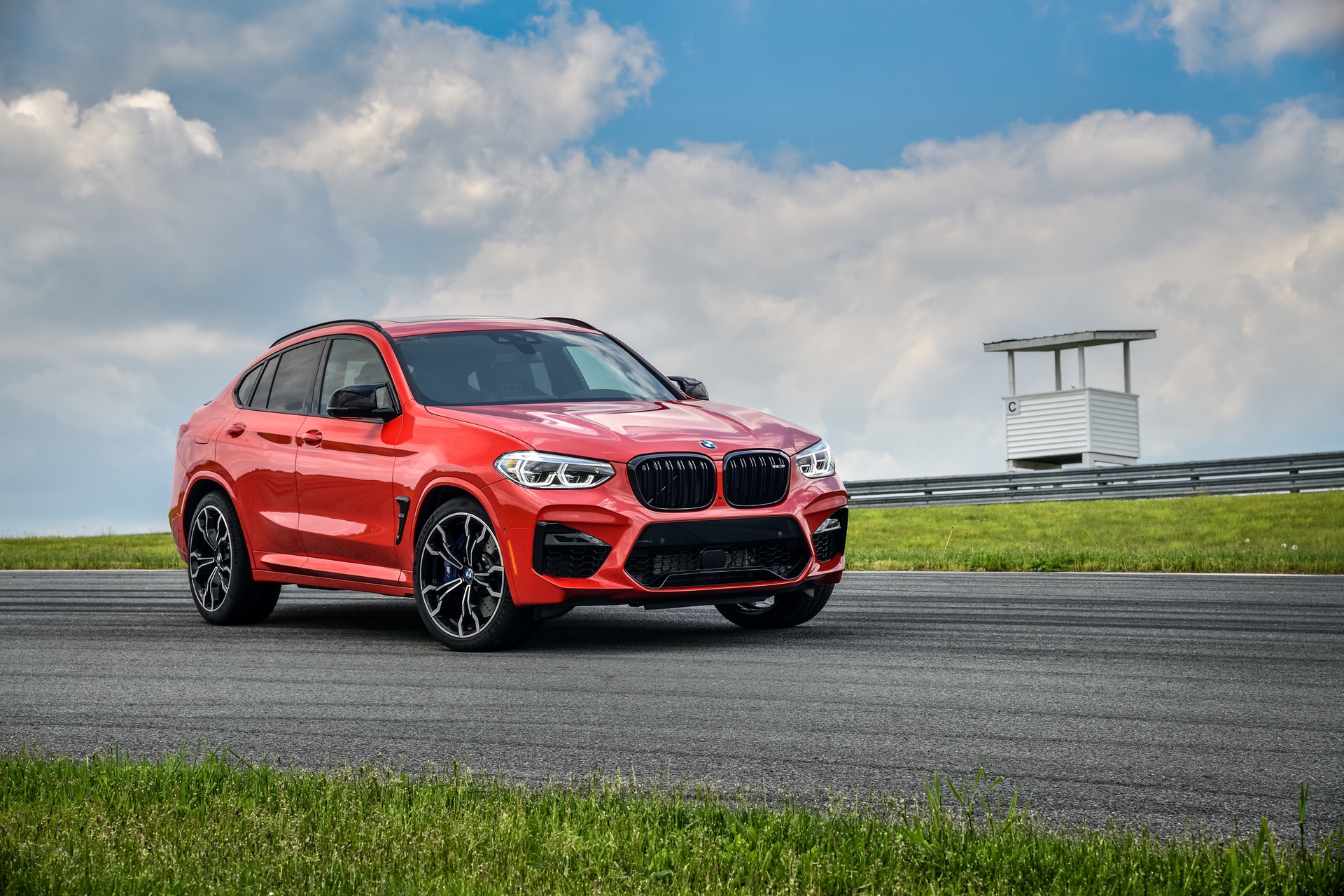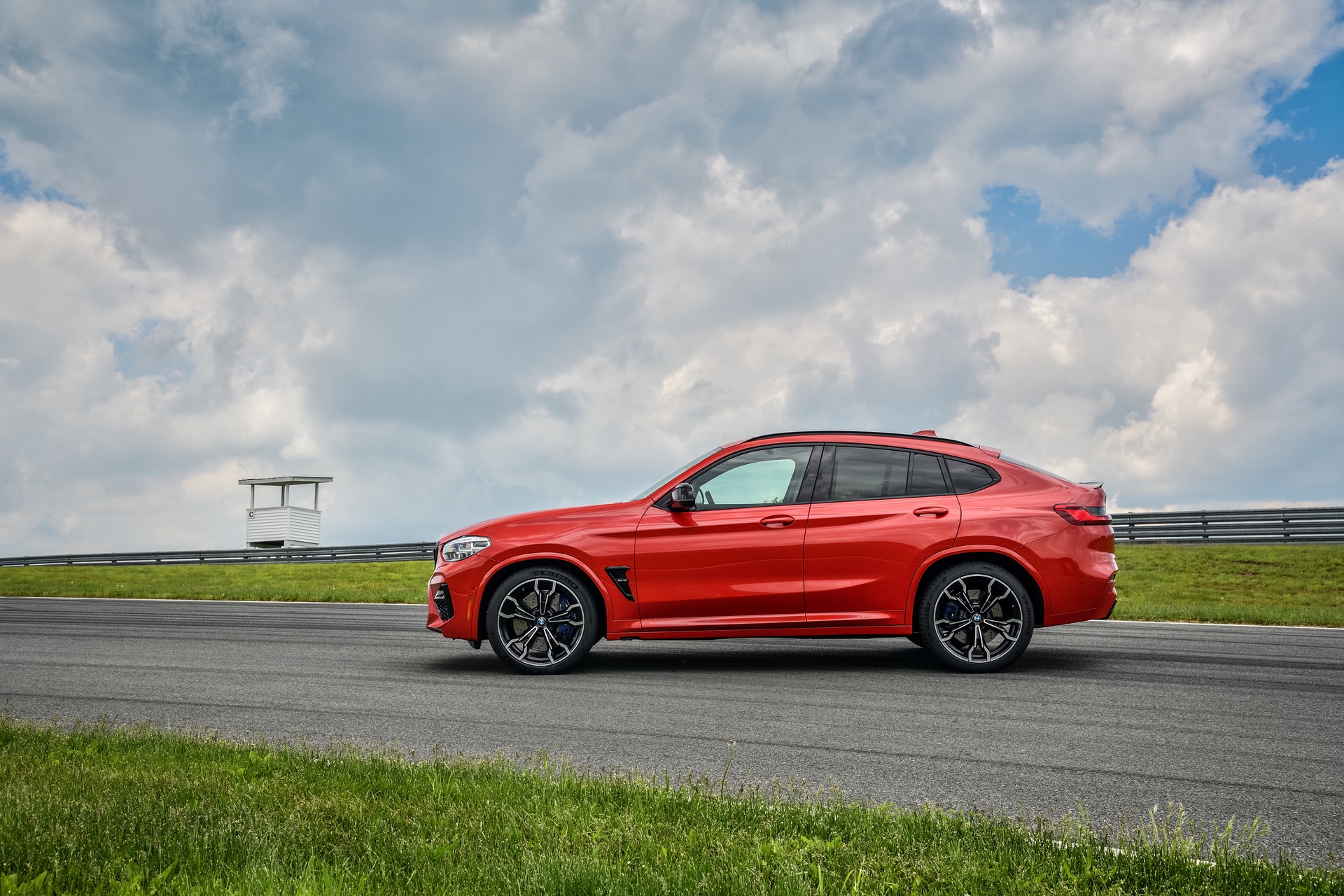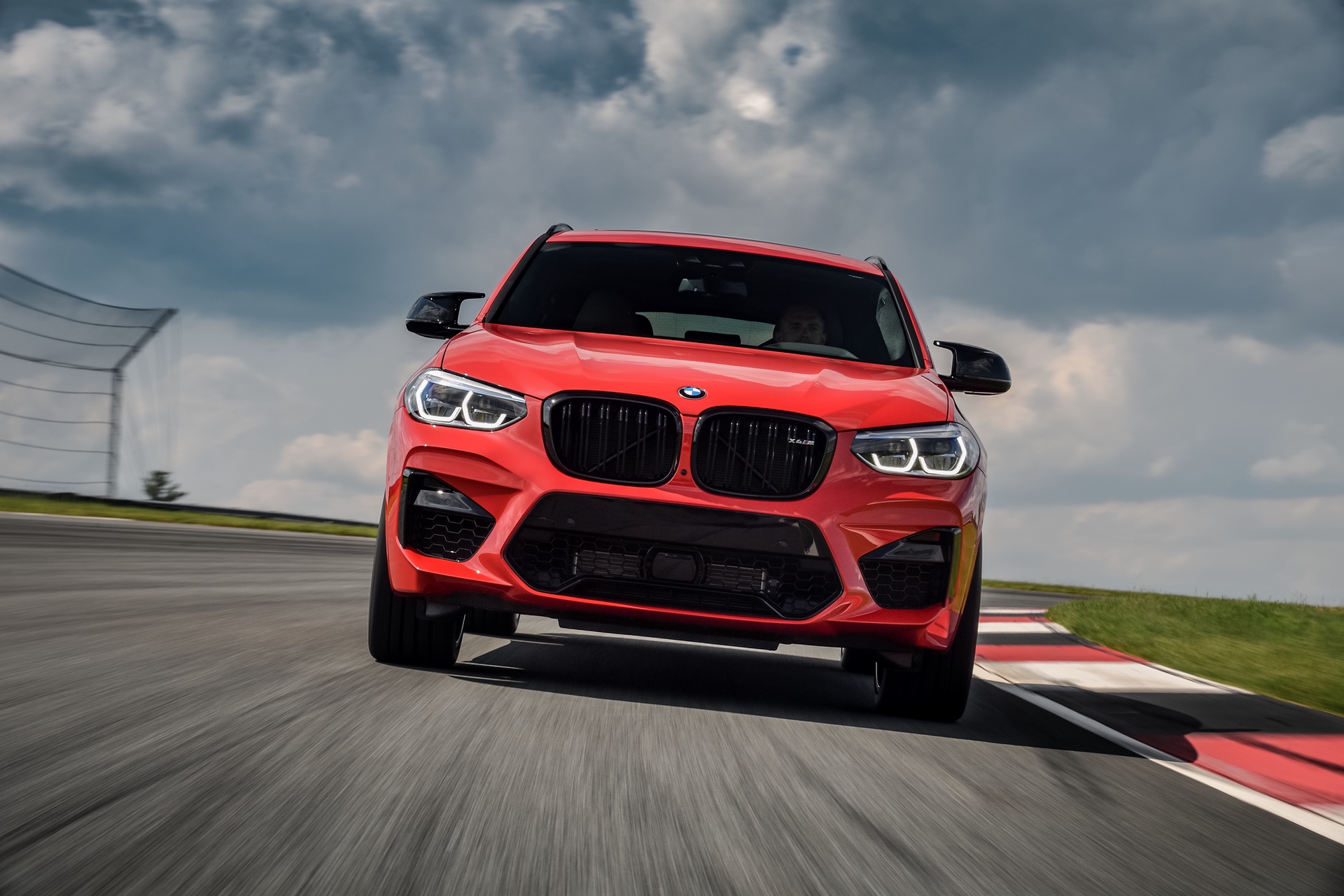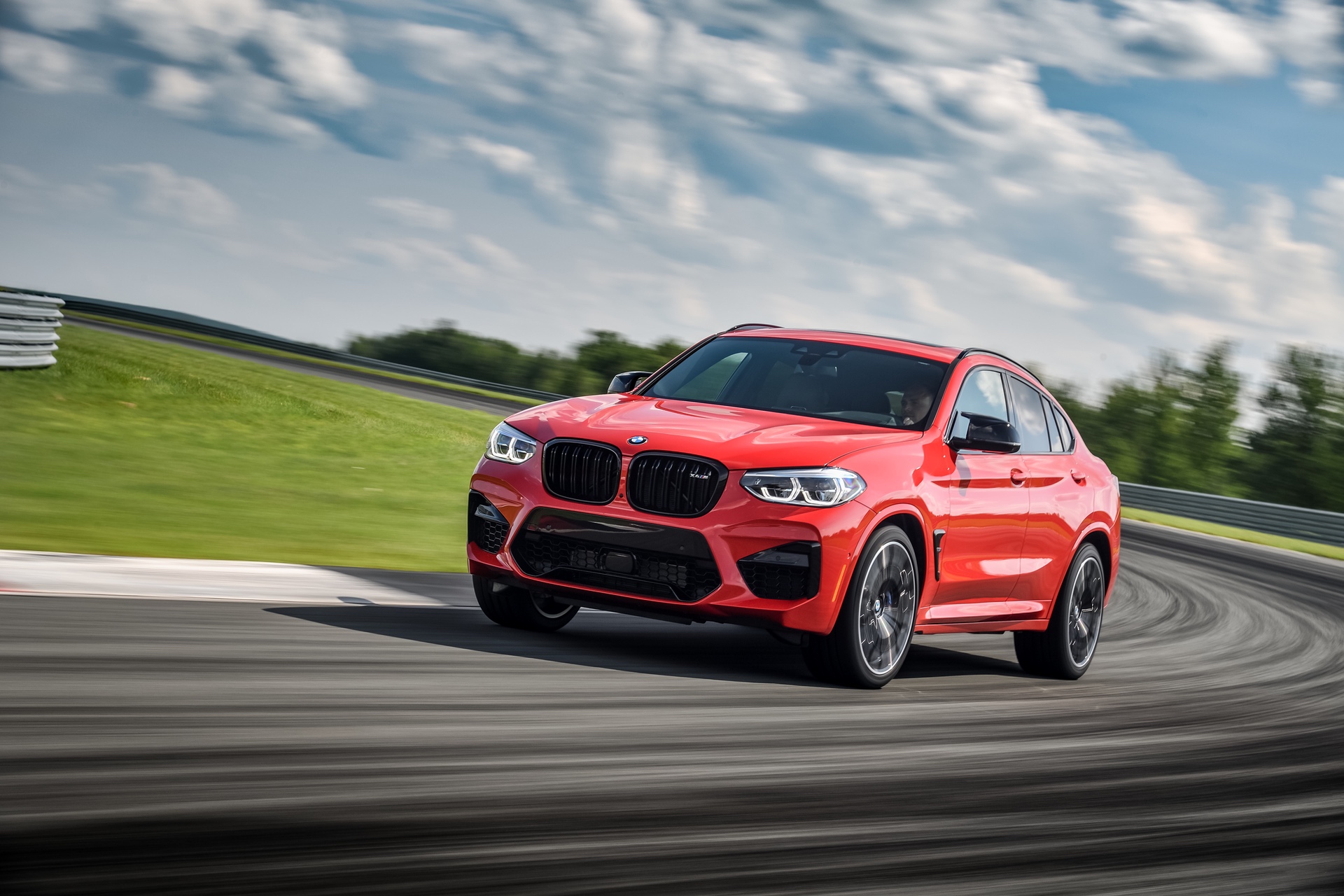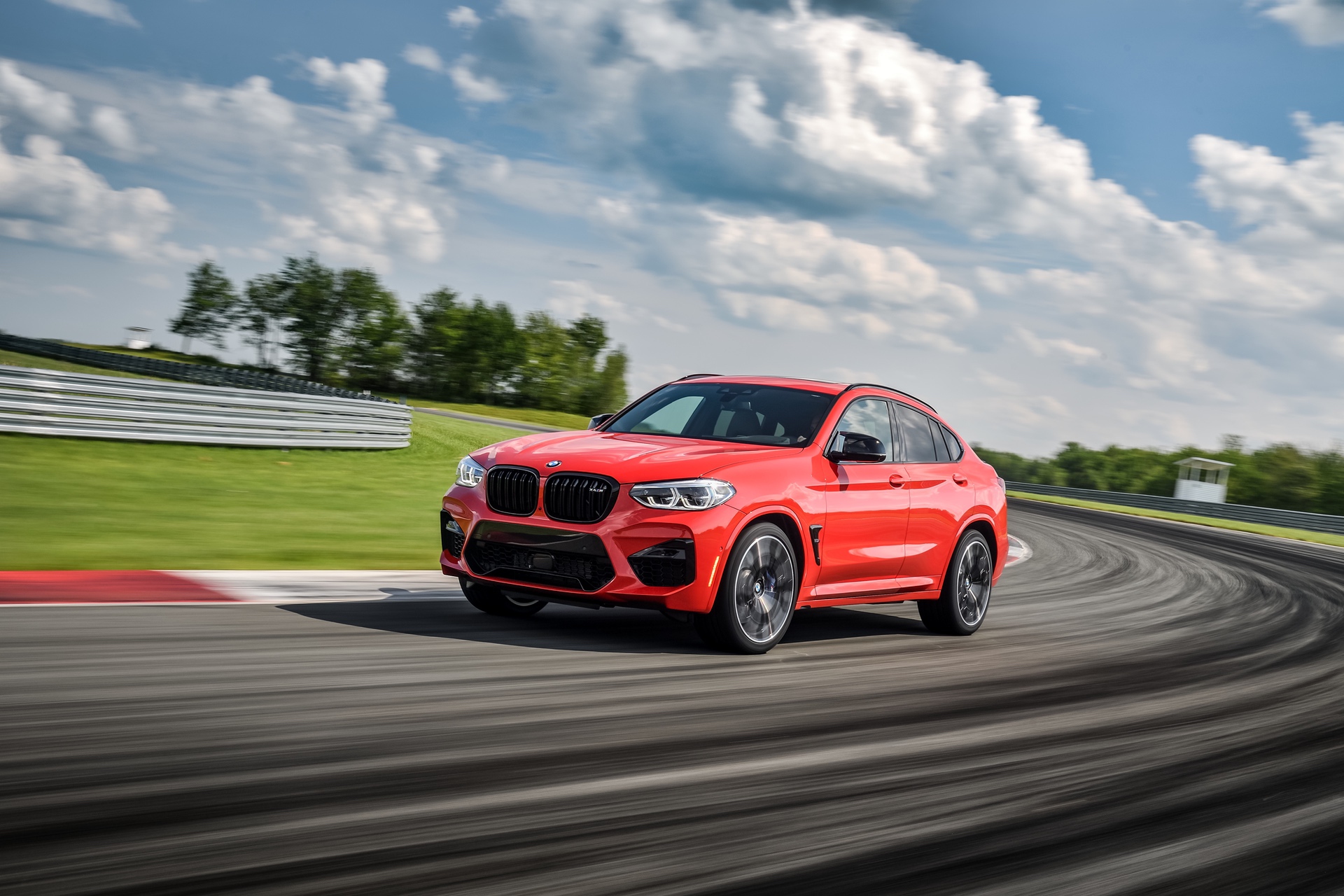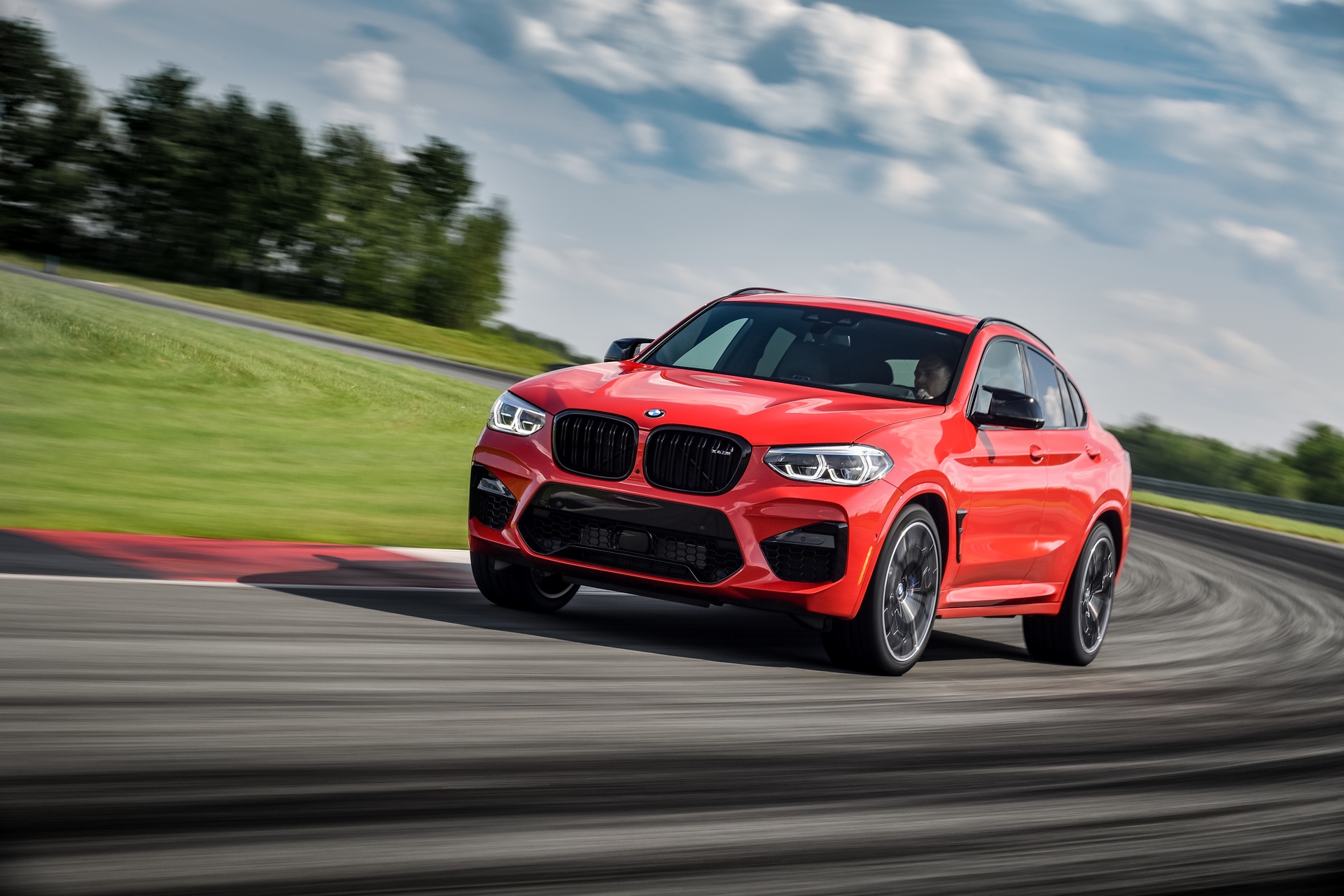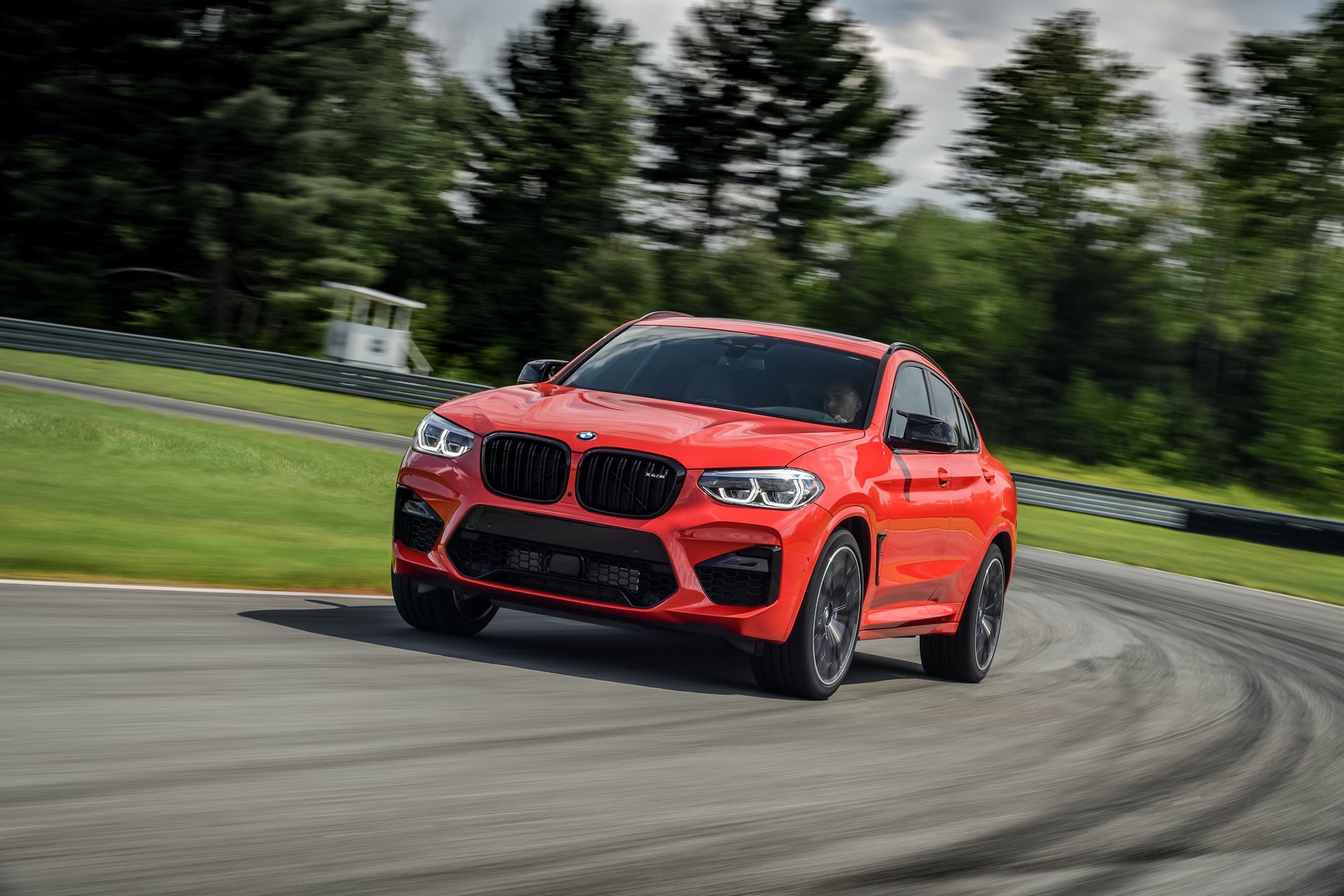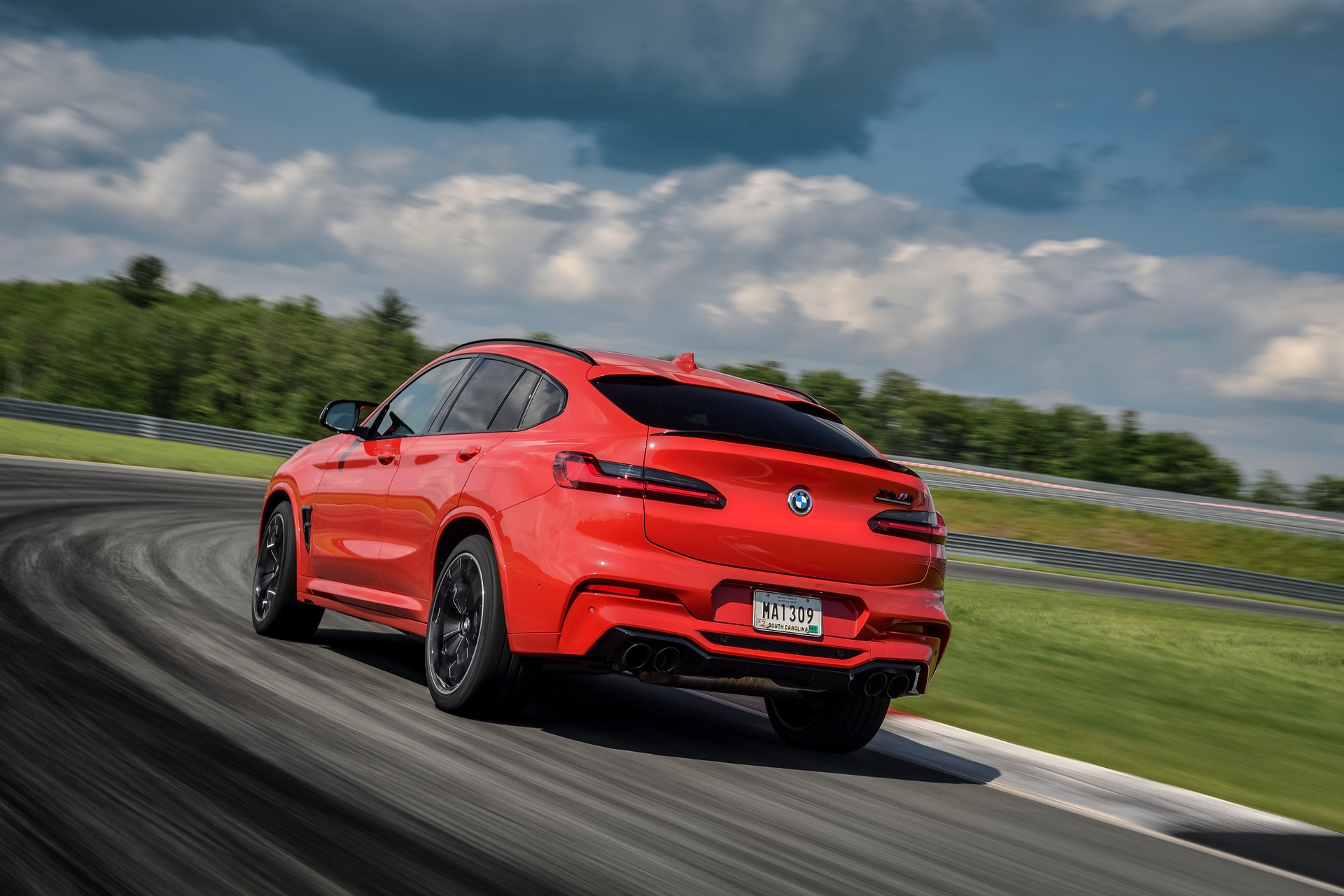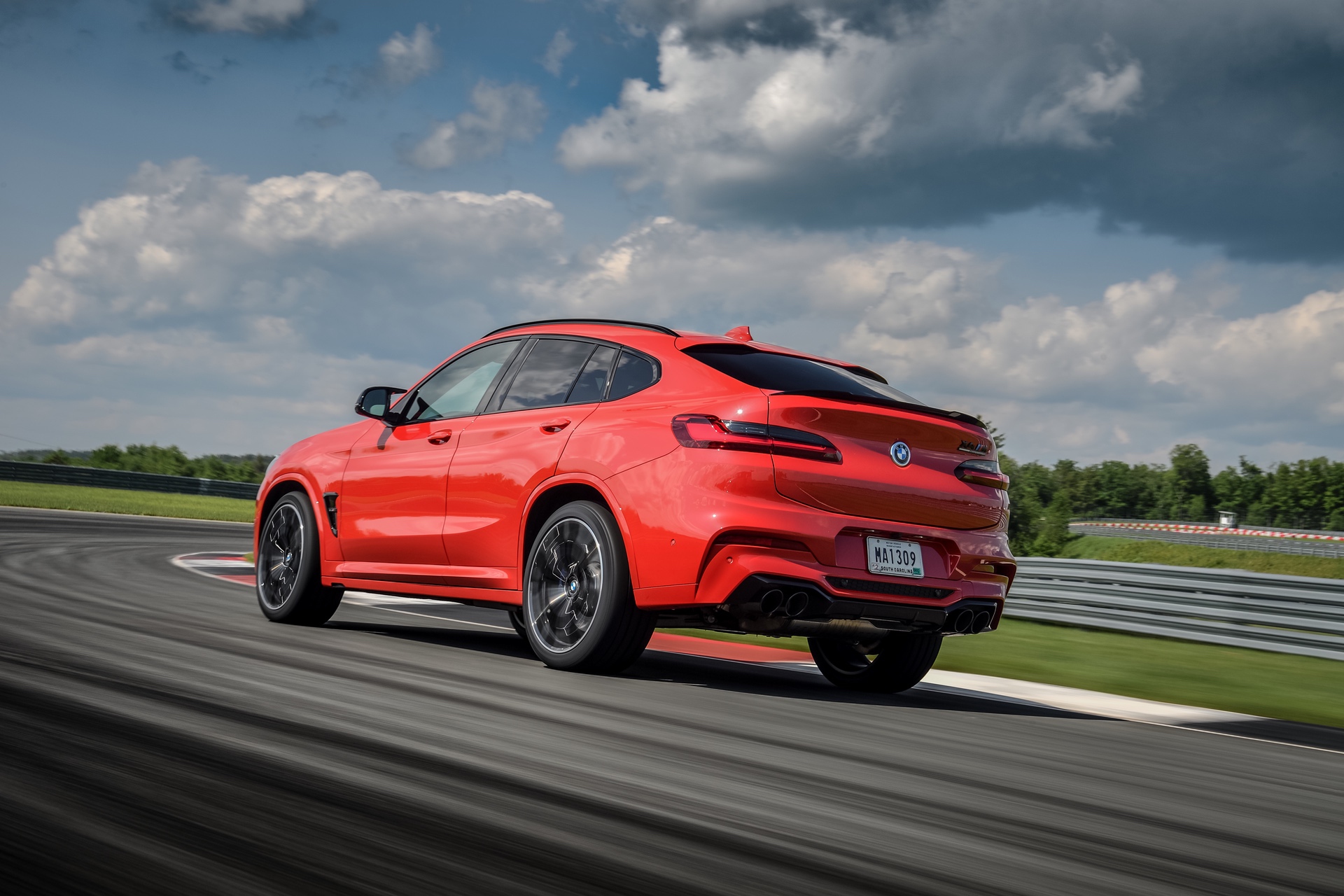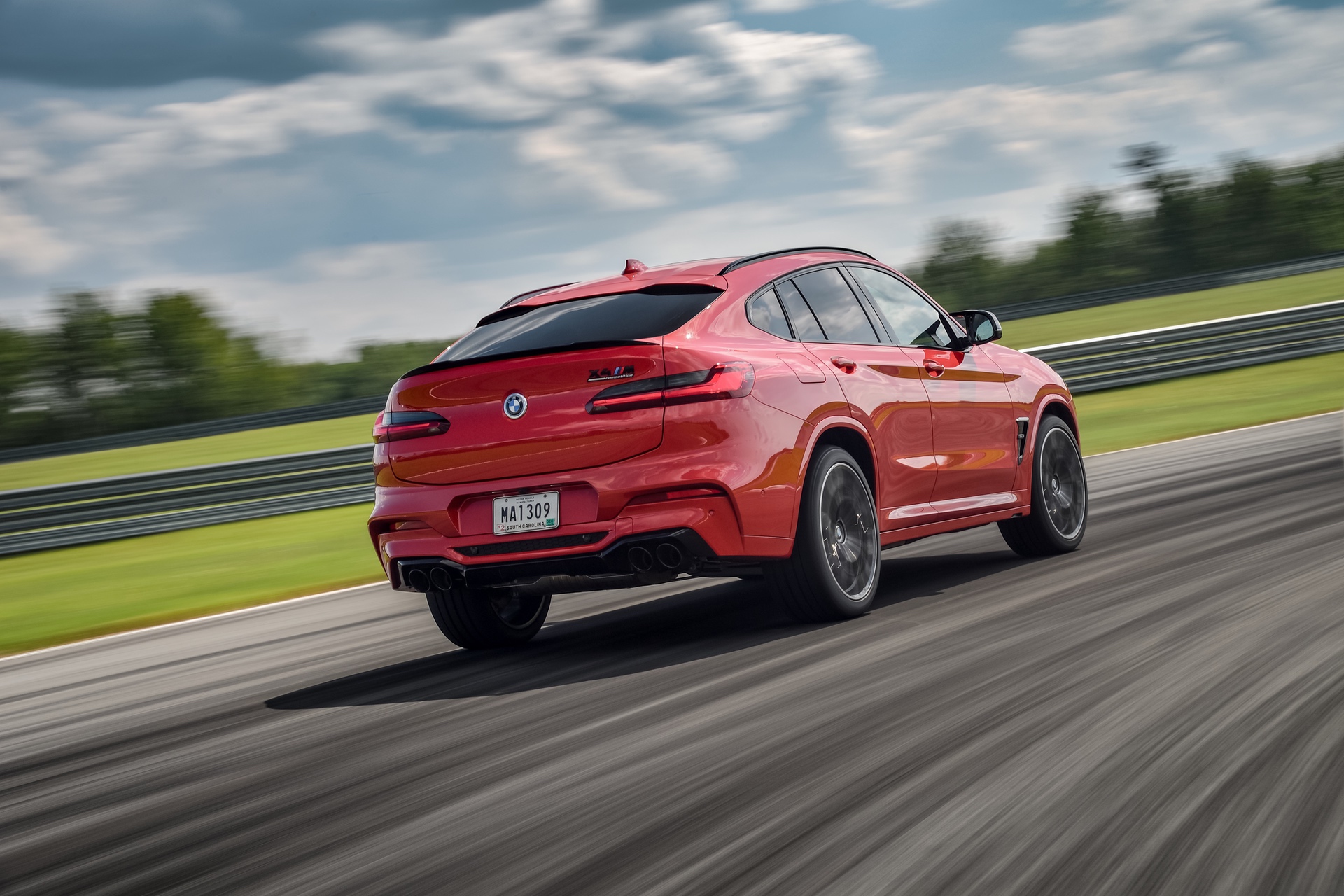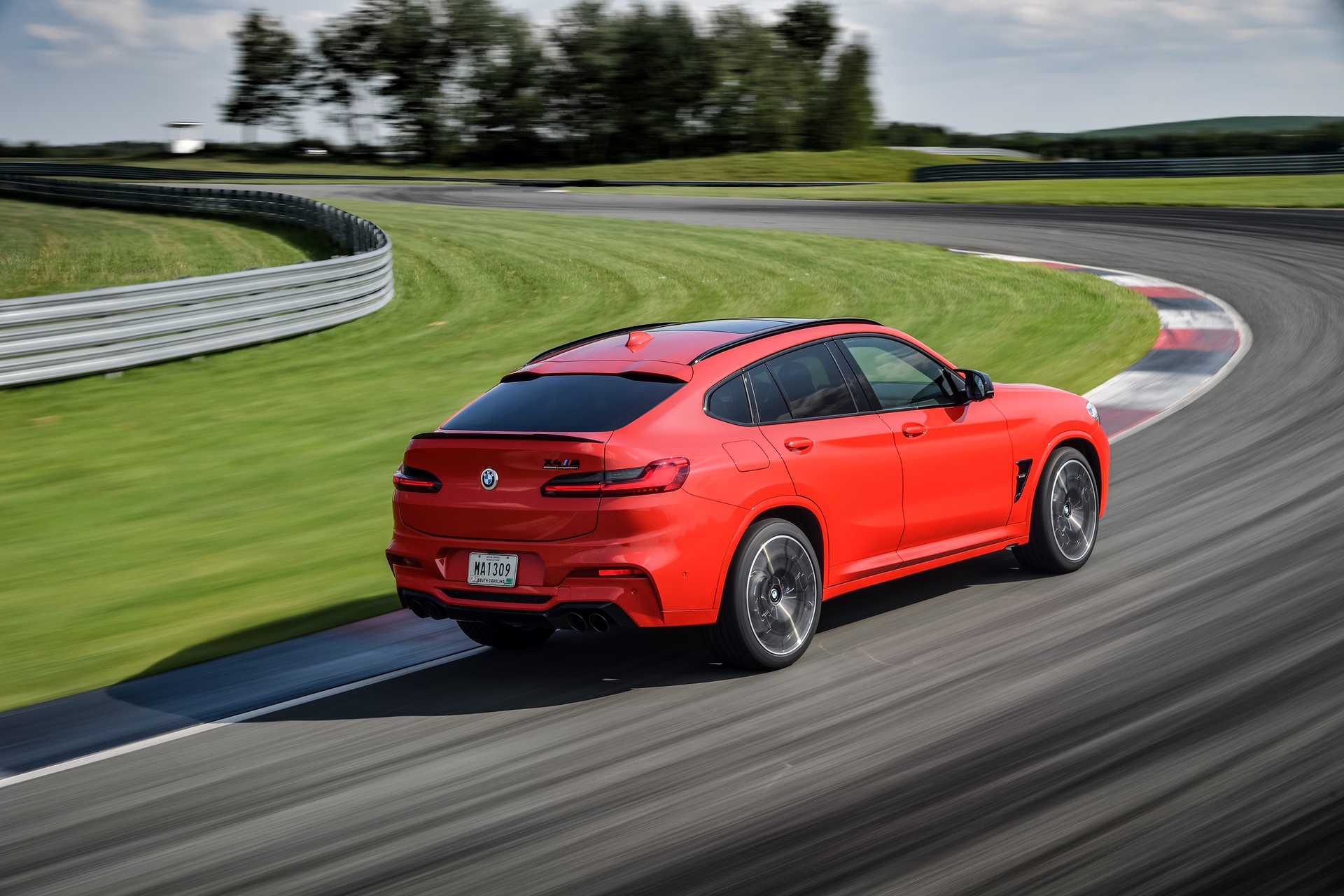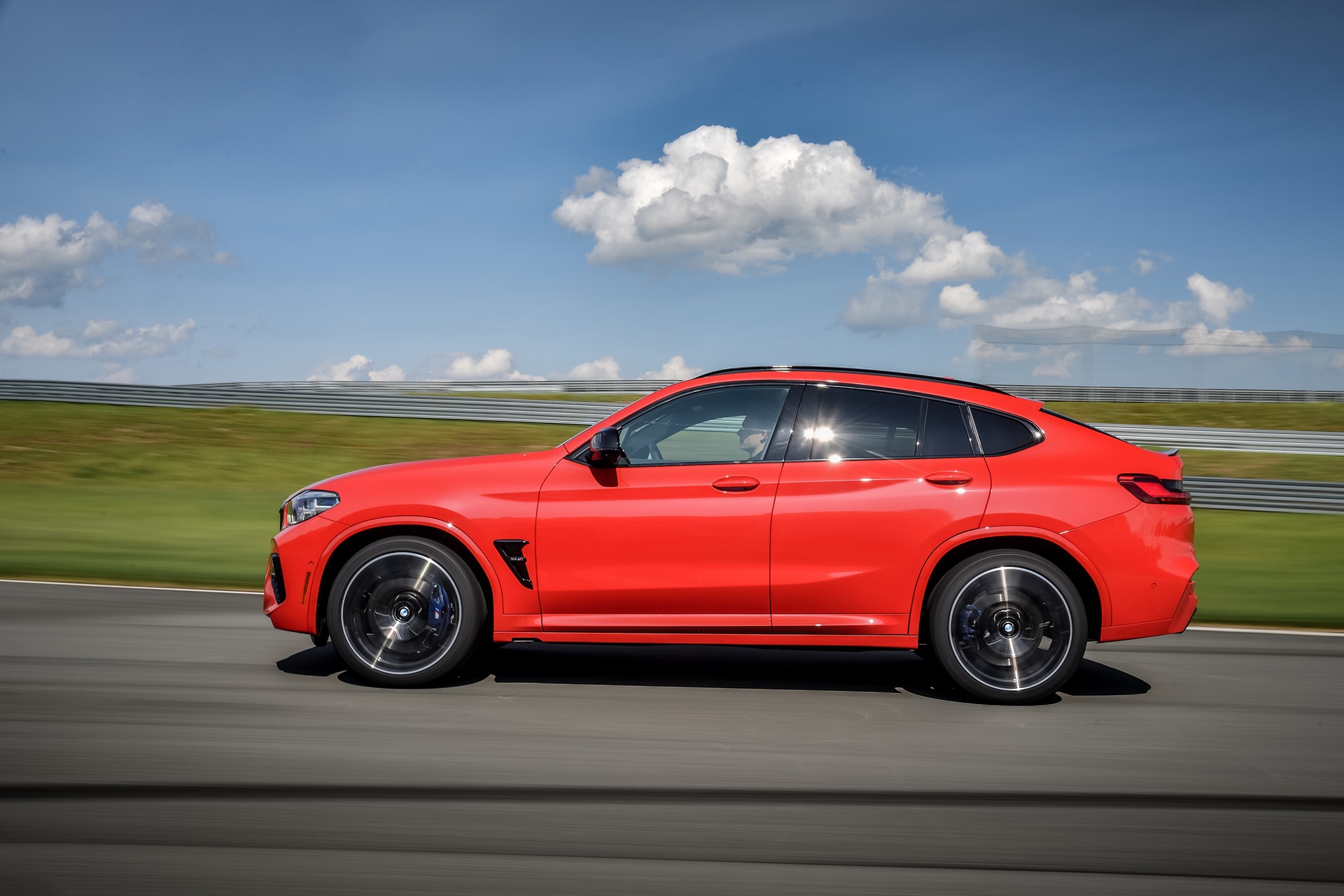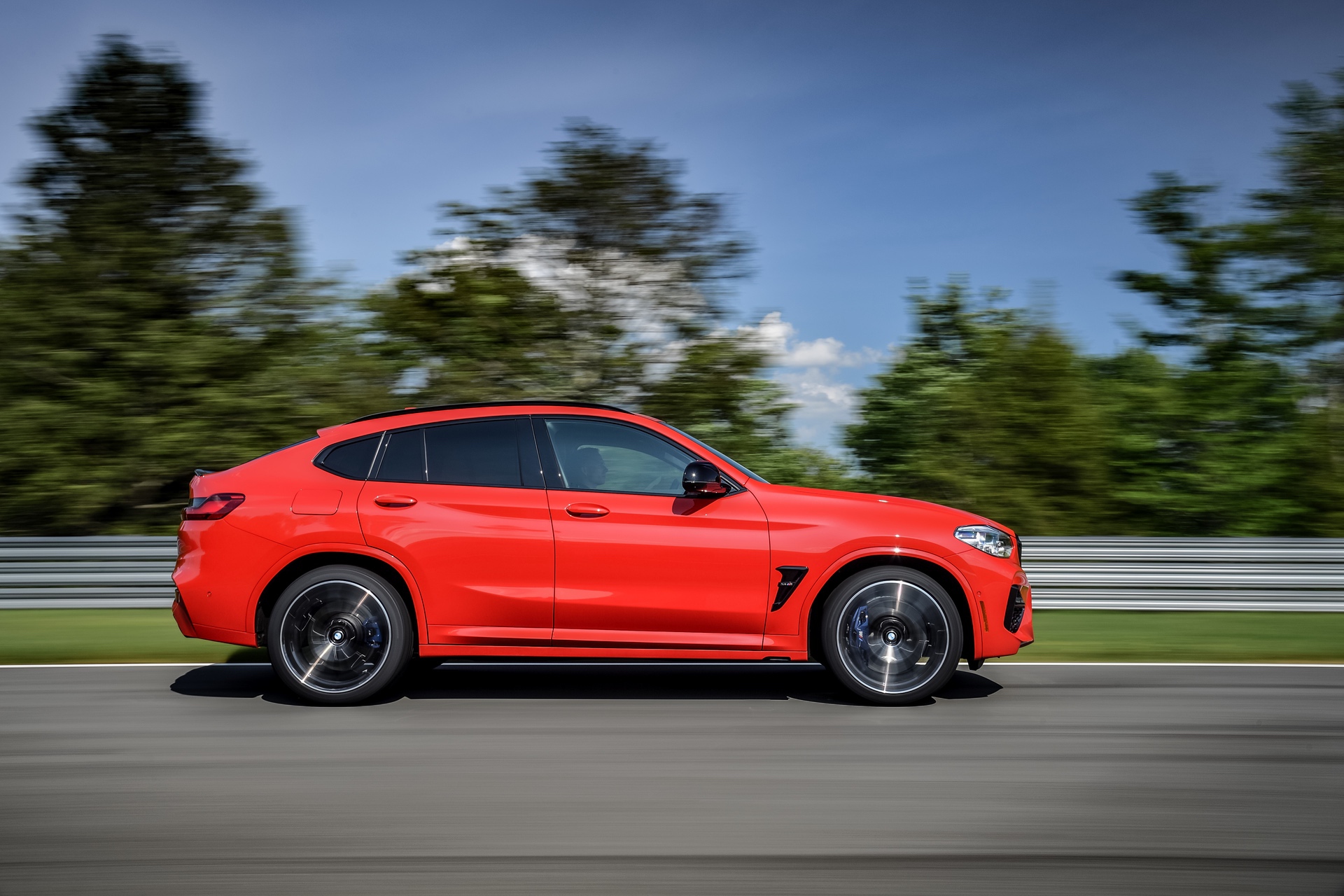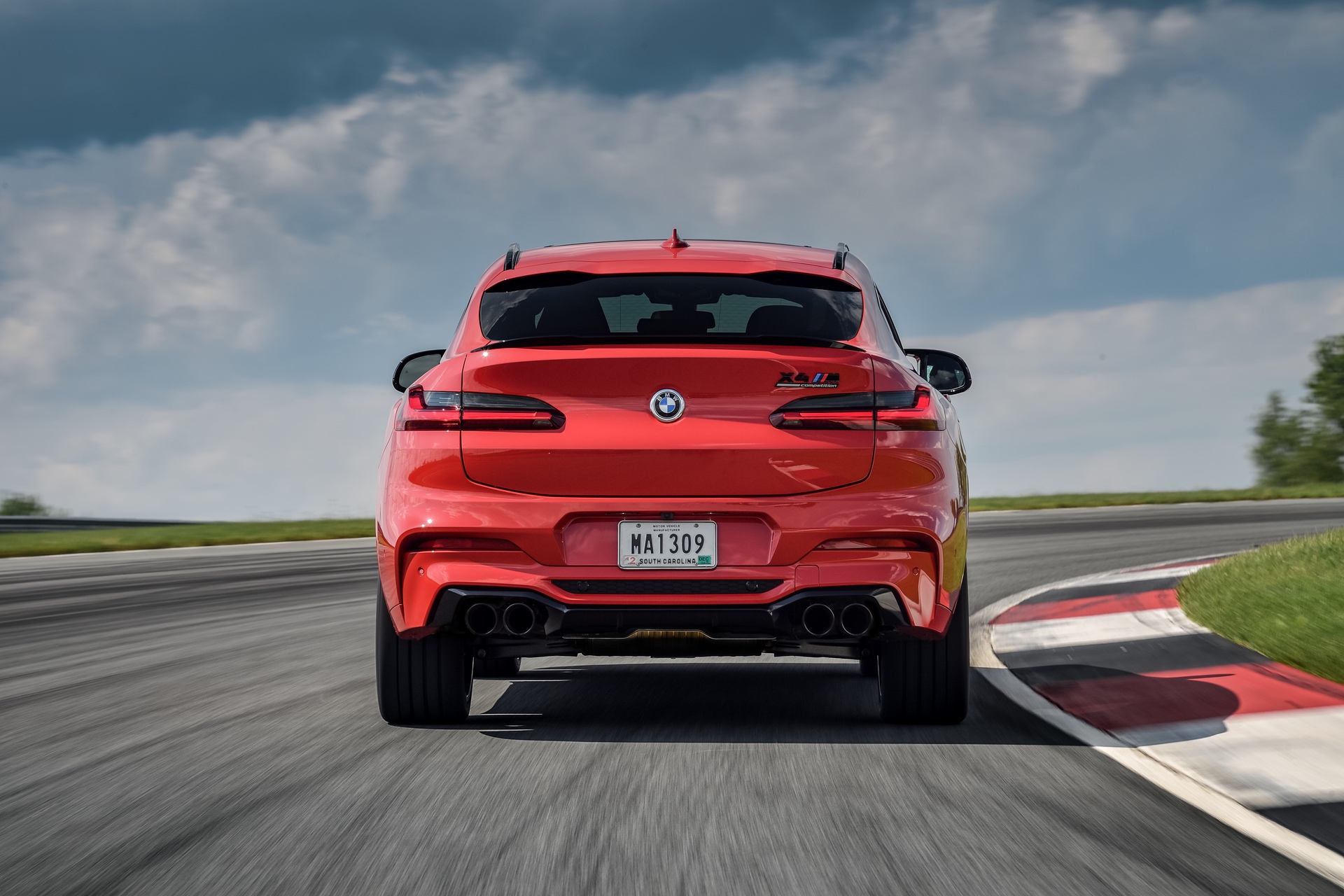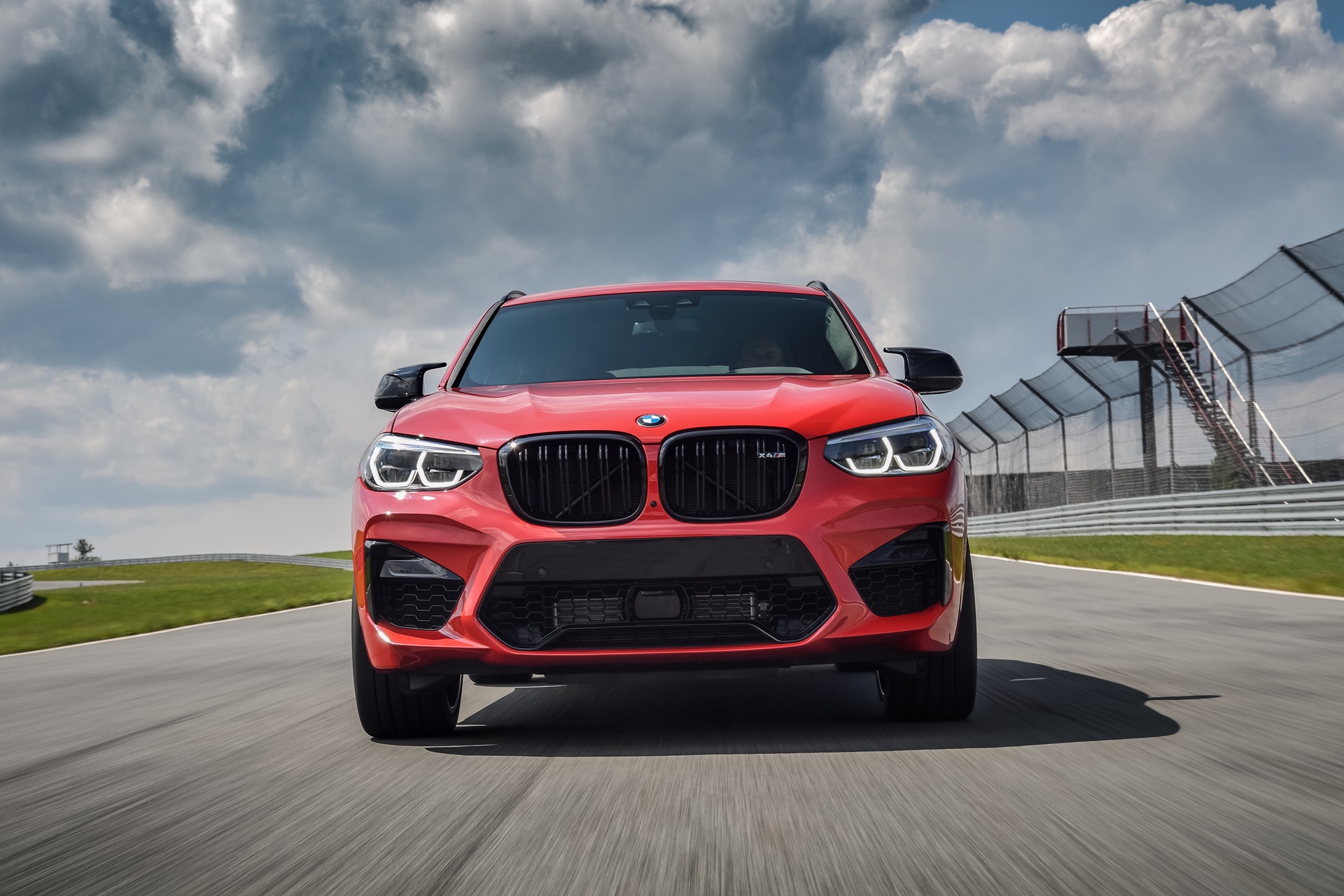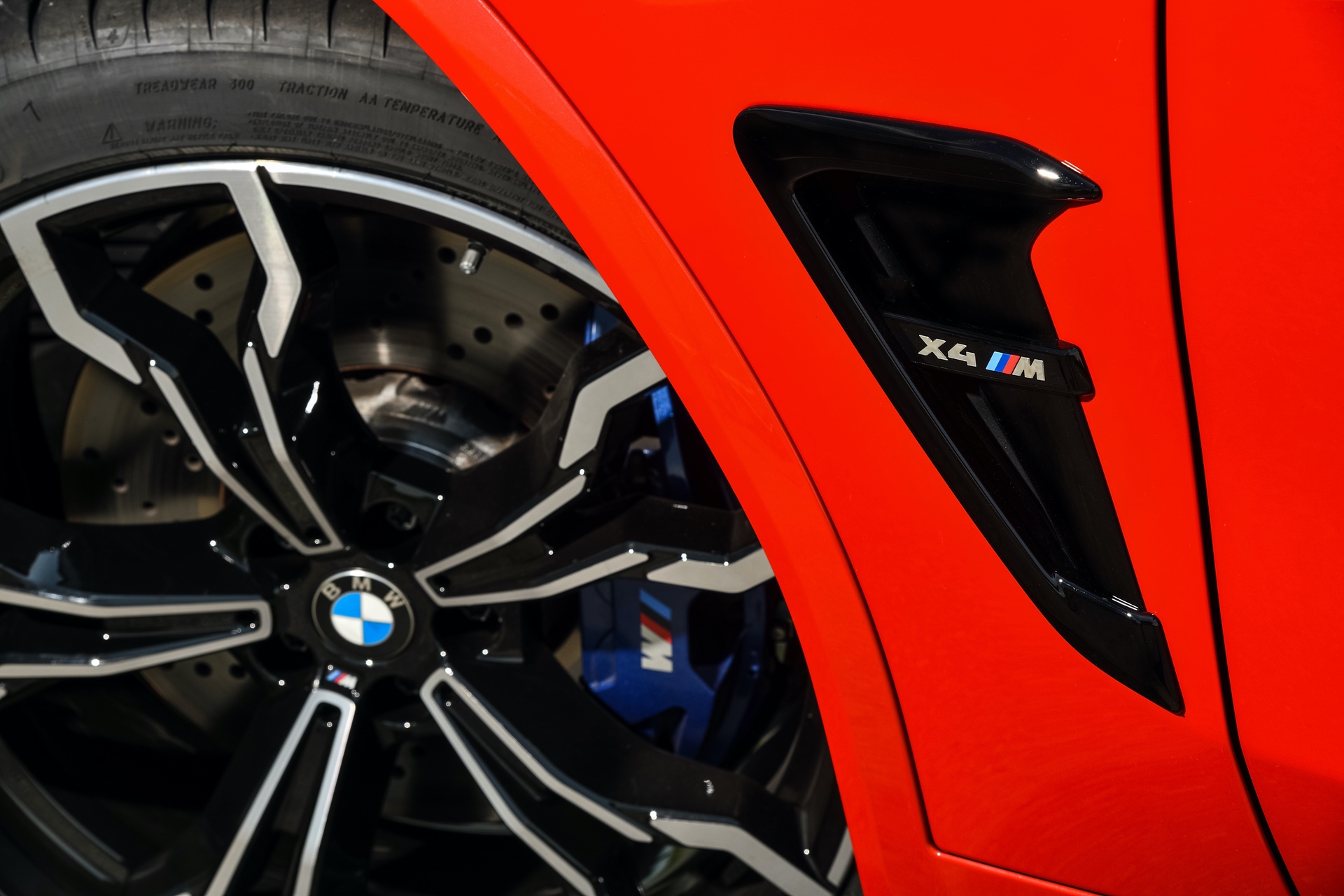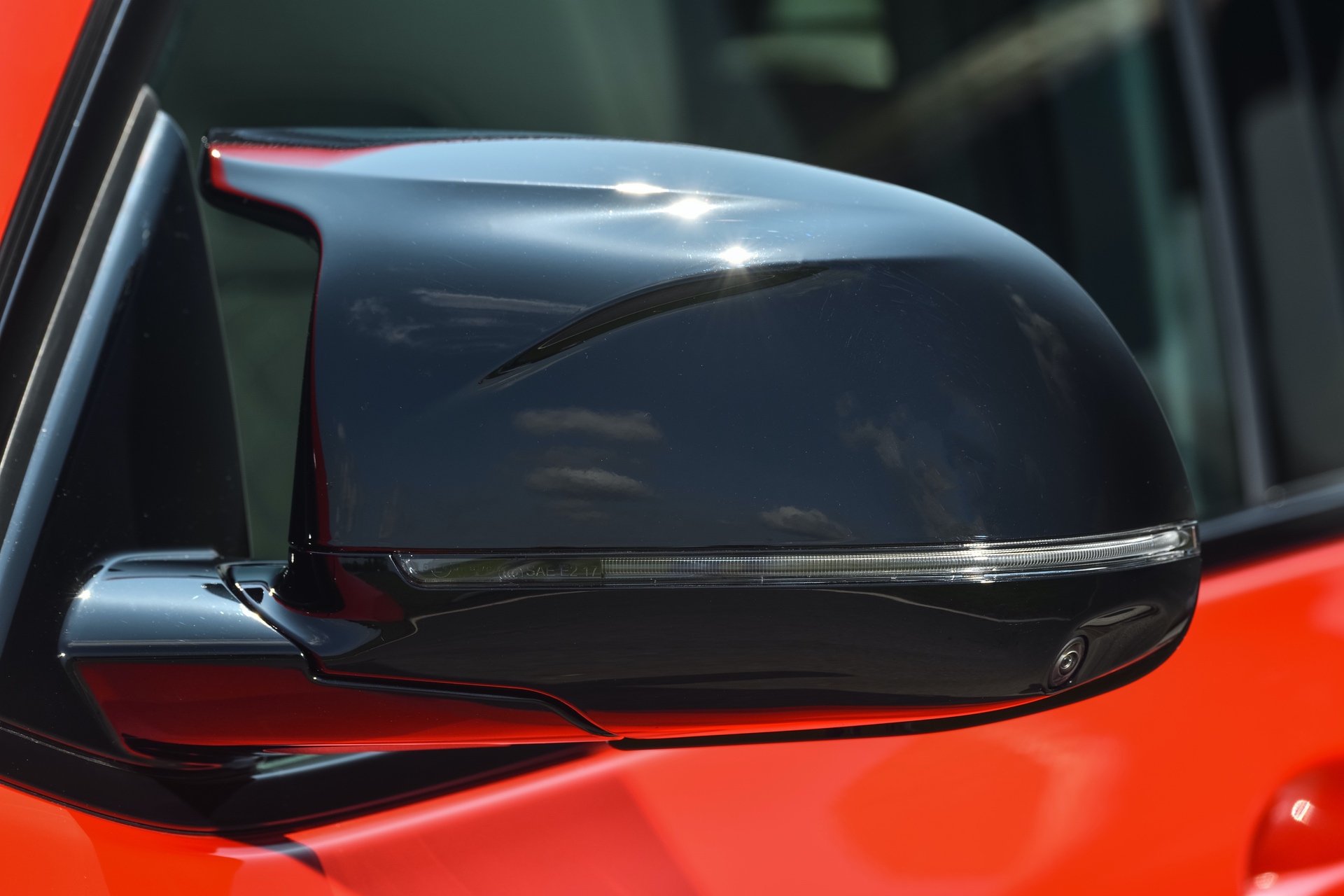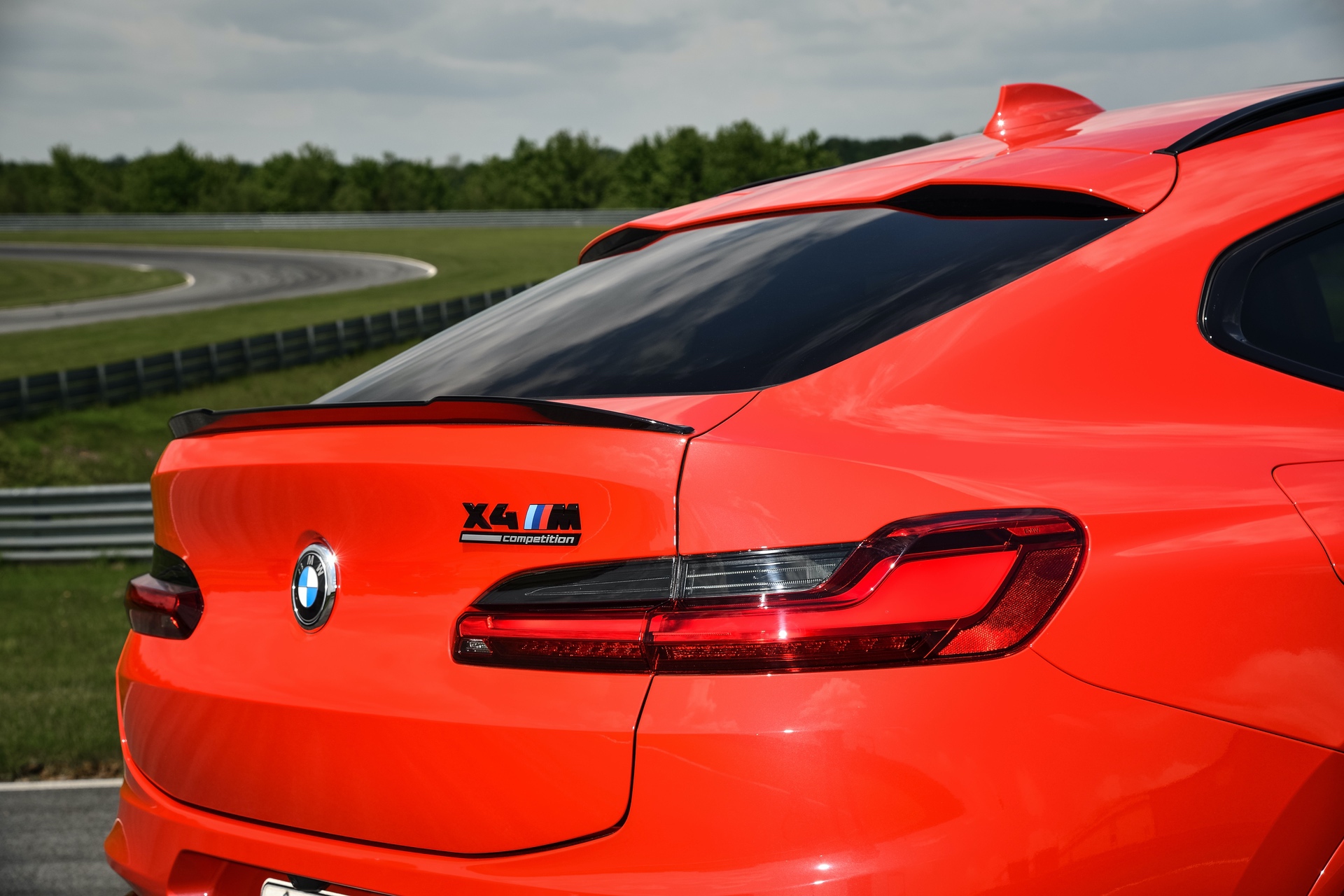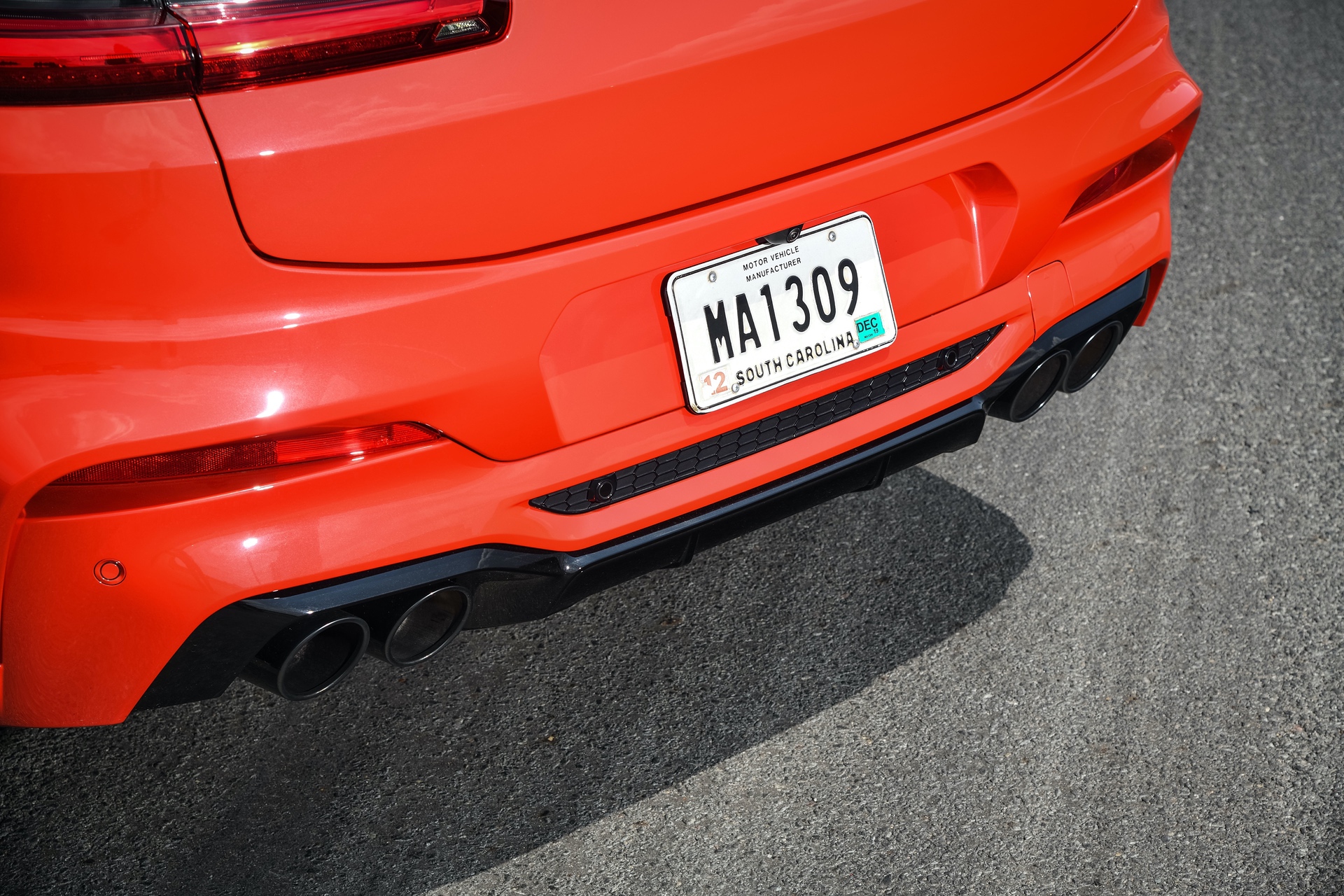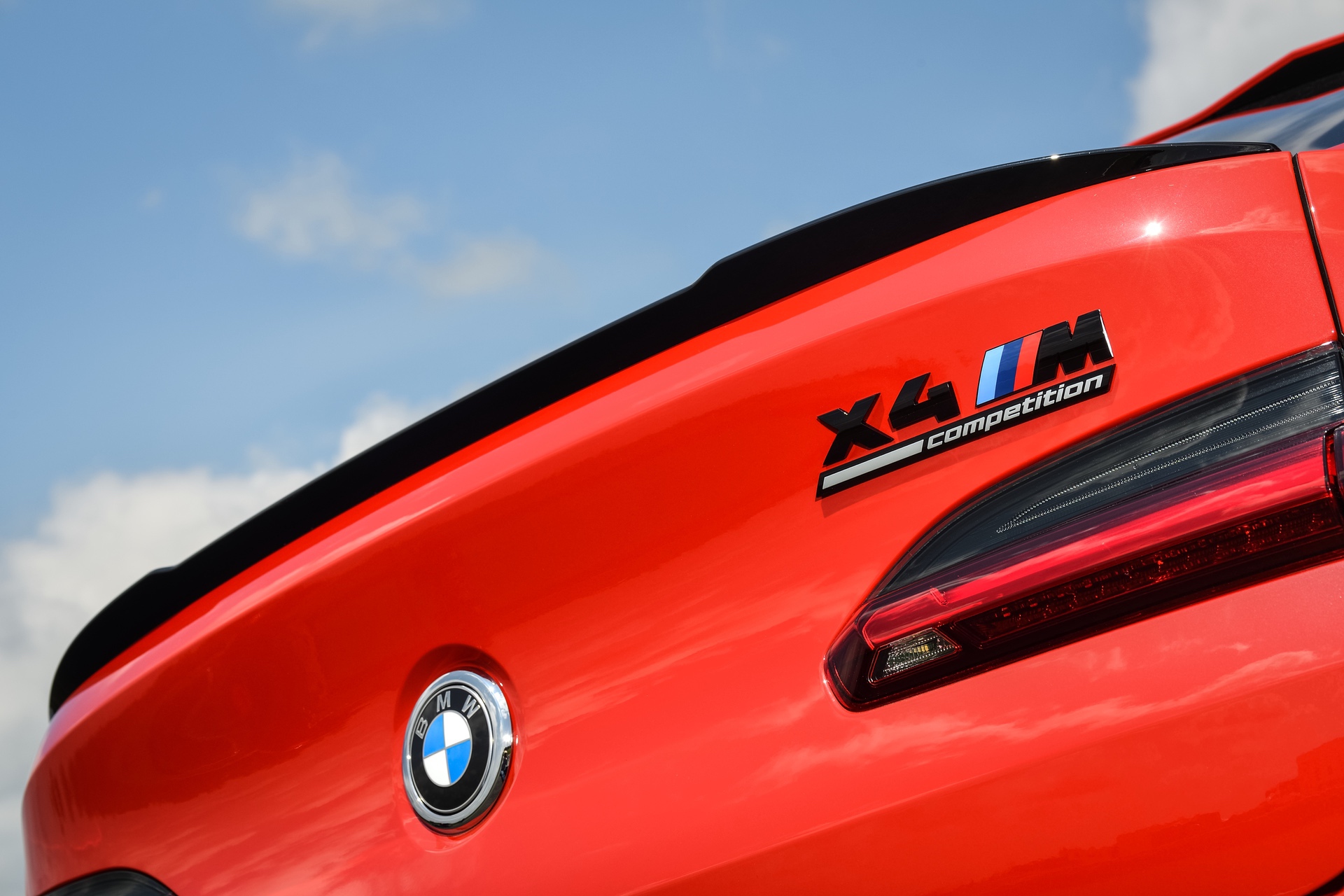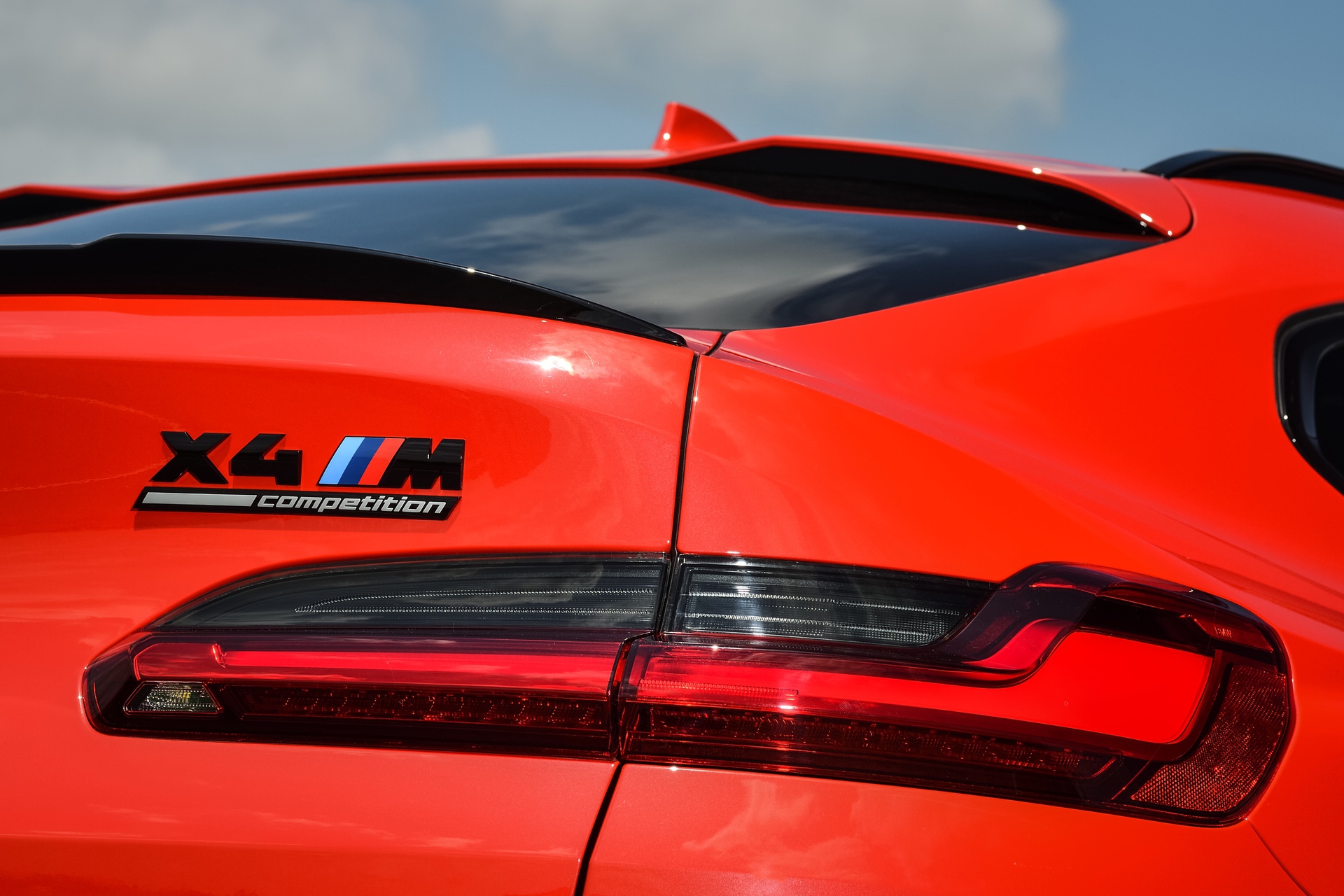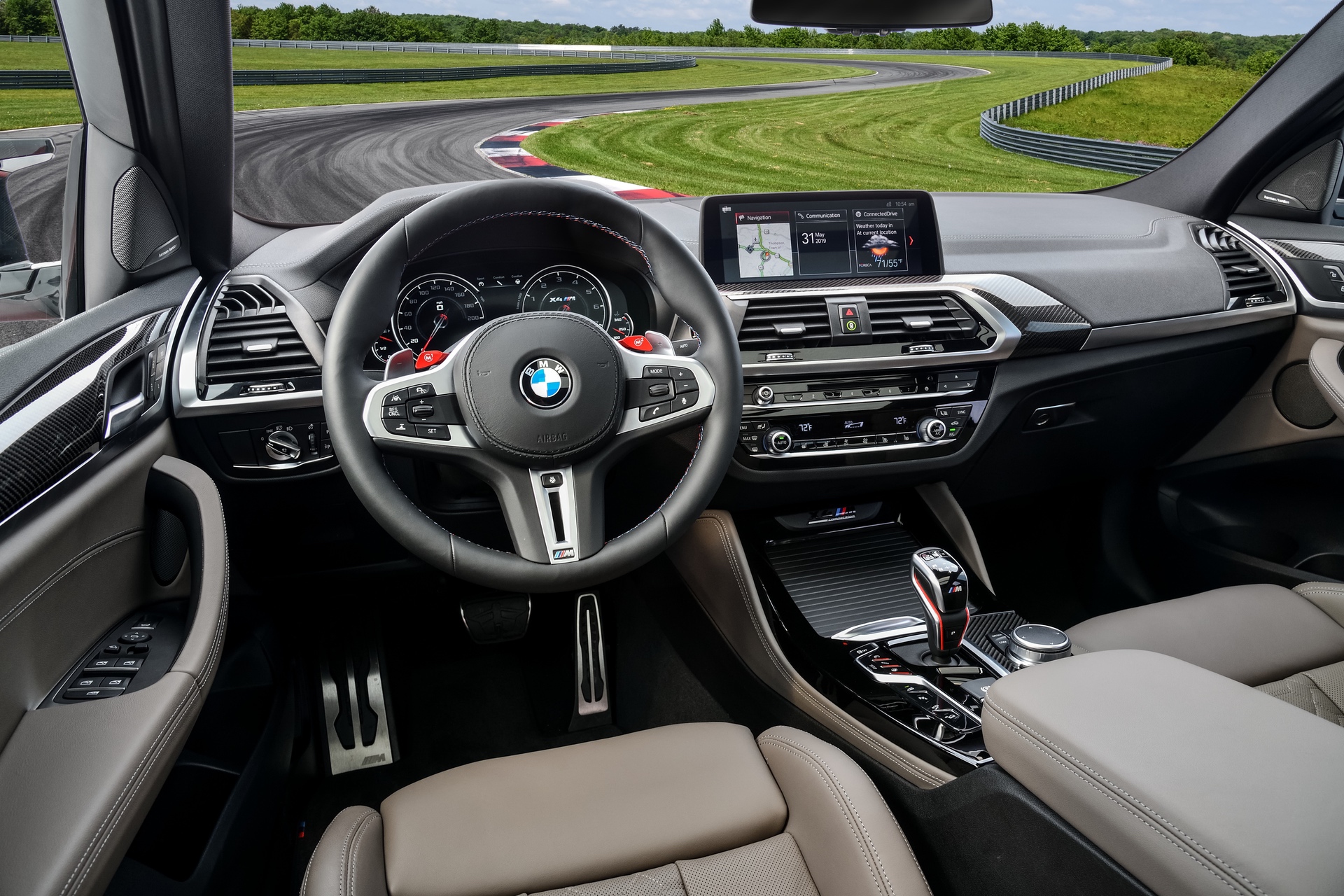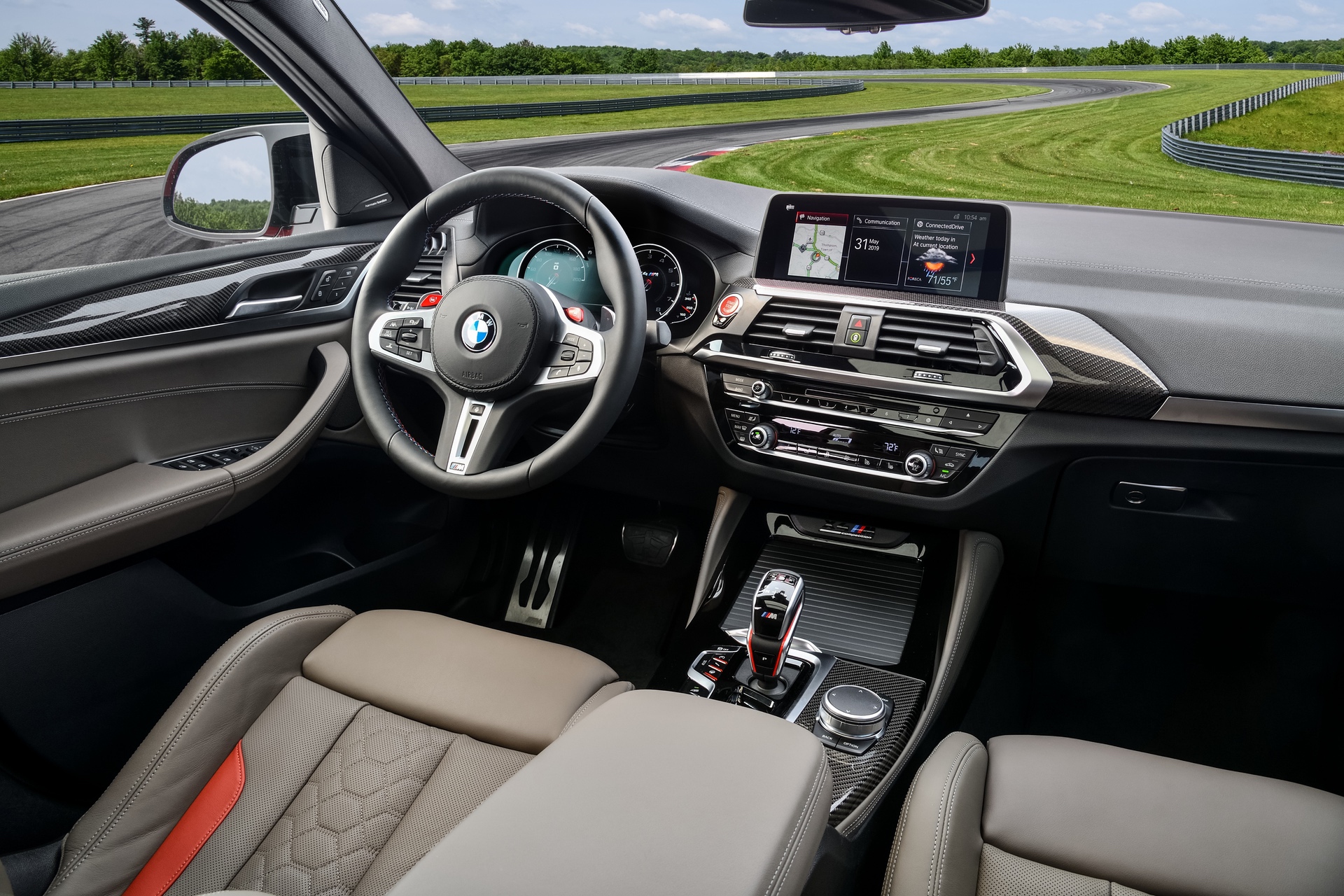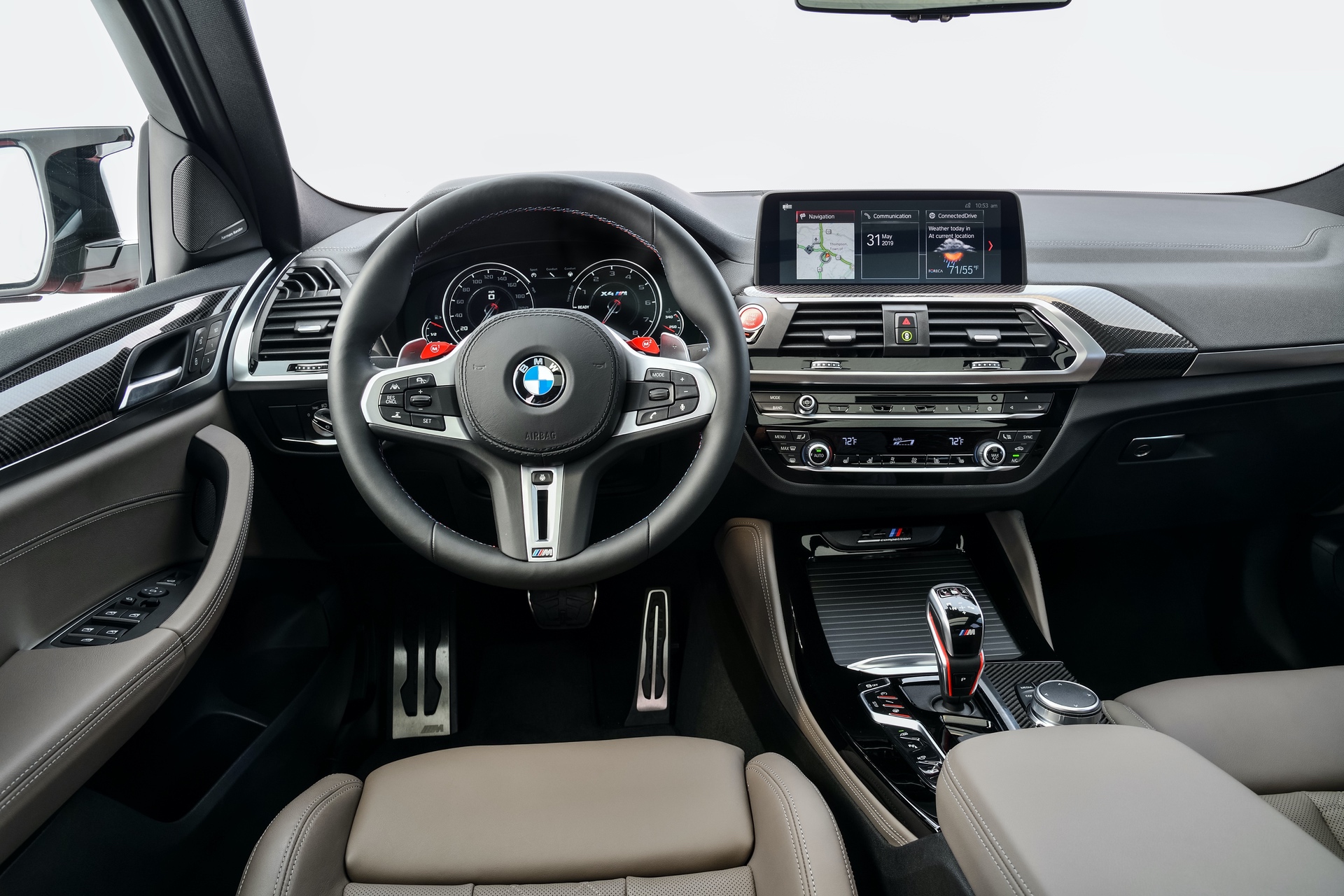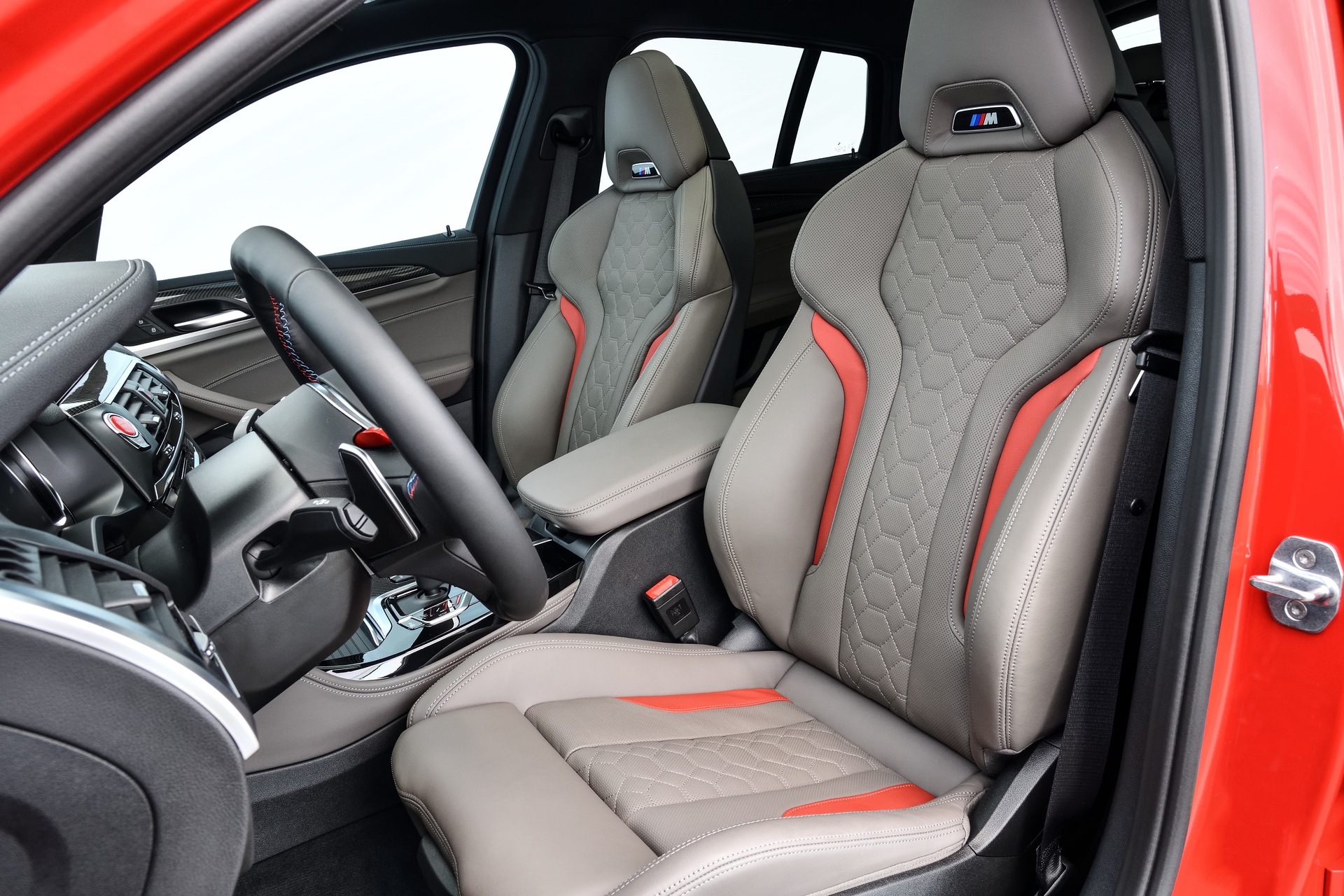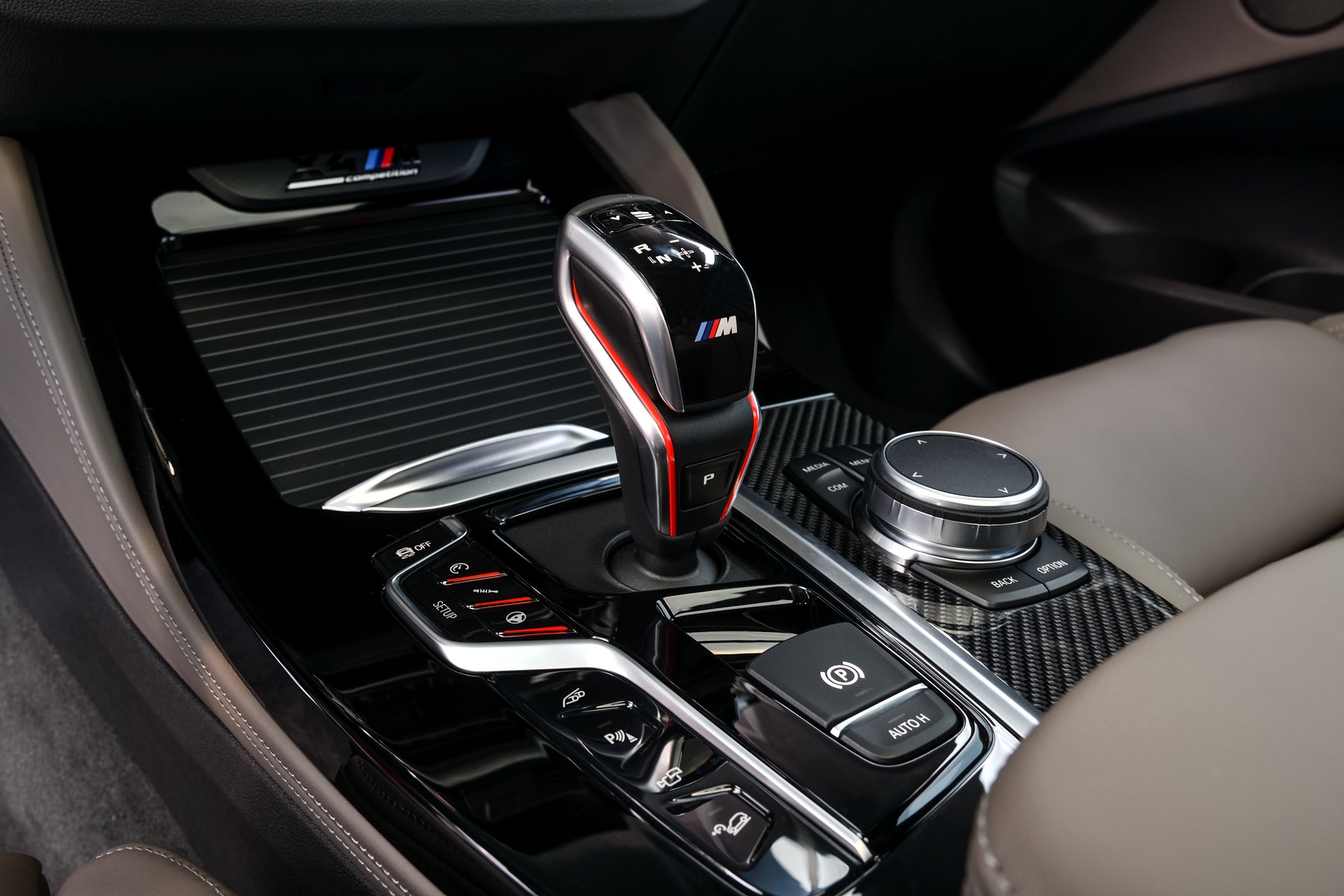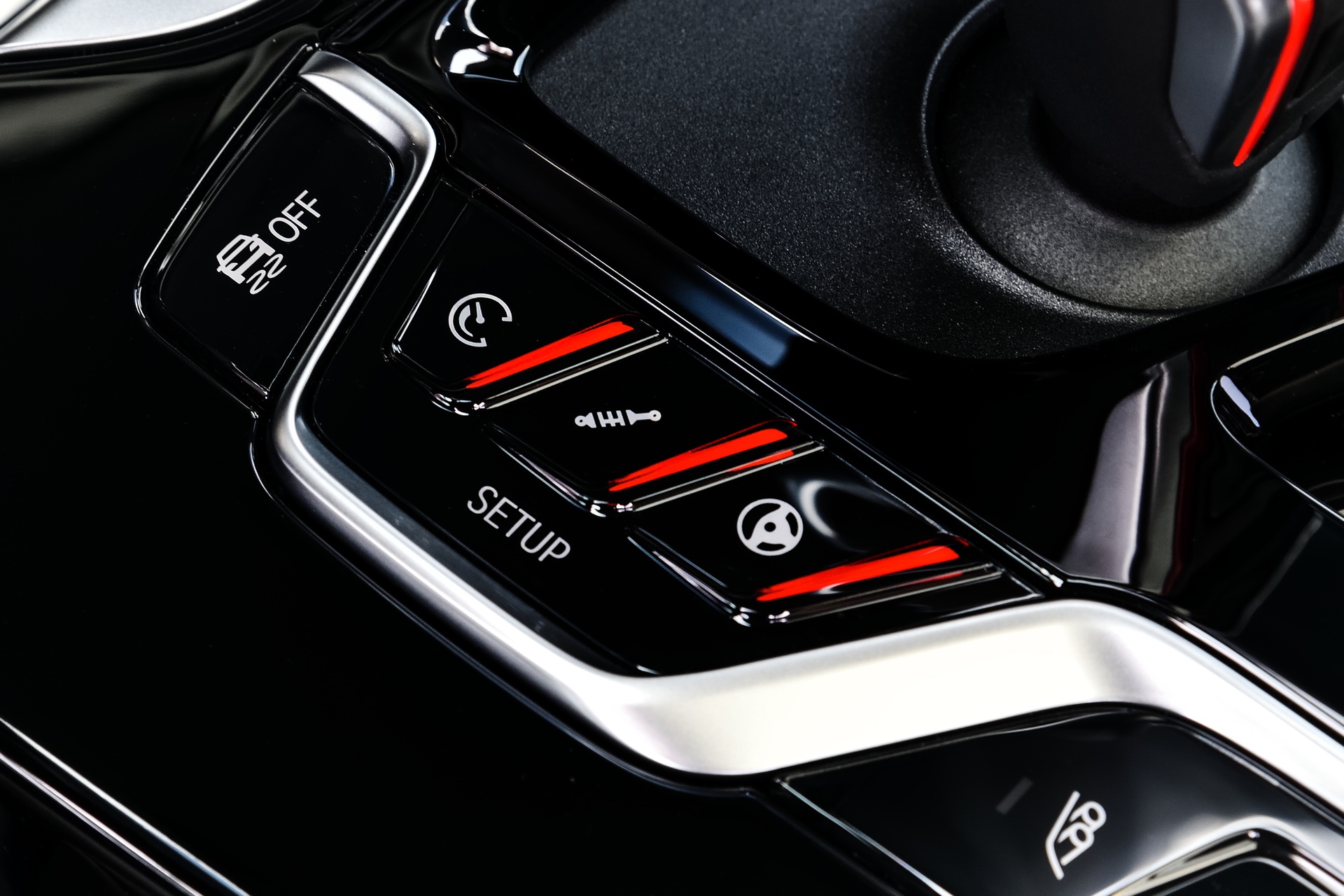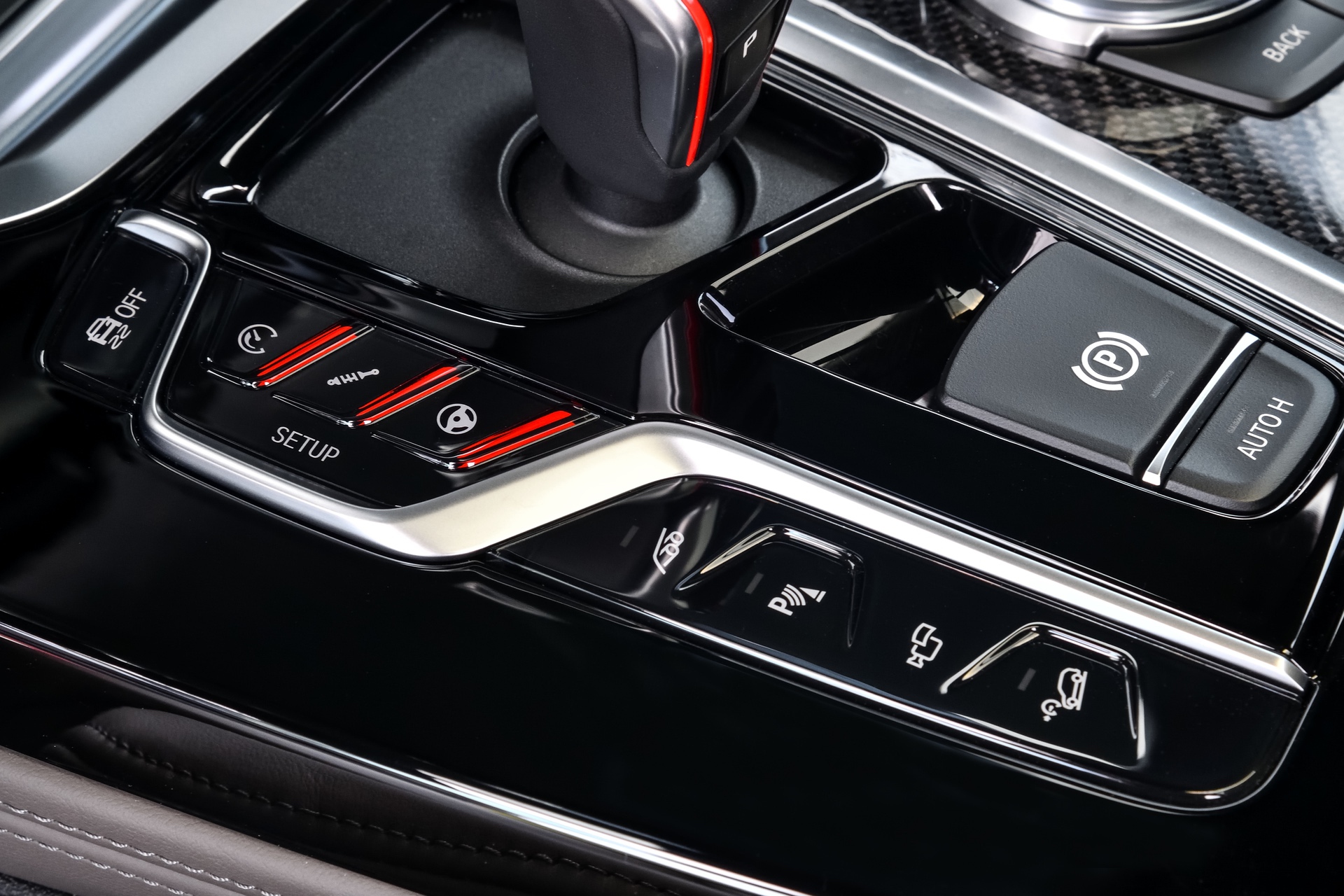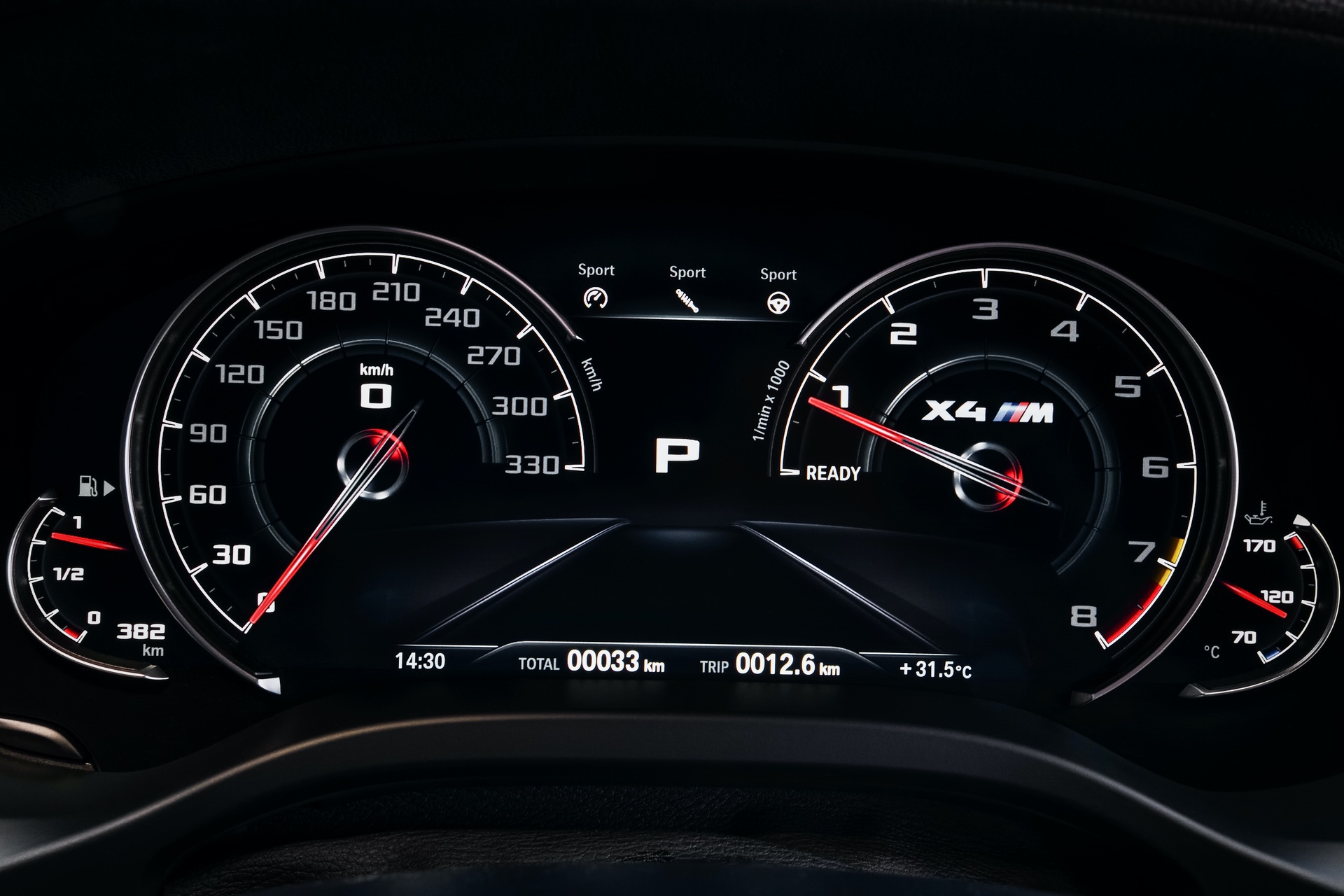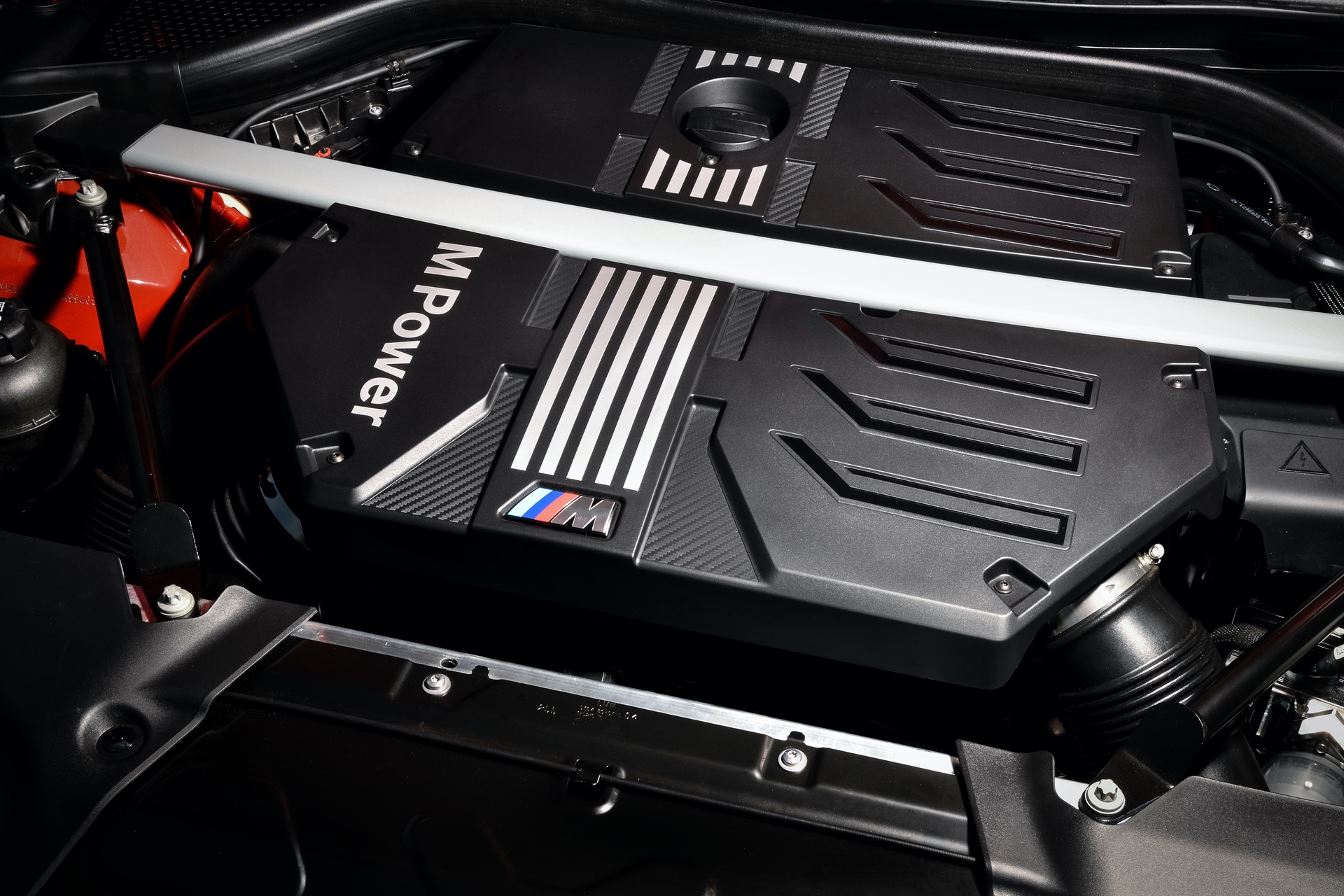A few years ago plans were put in motion to facilitate the arrival of the first M variants of the popular BMW X3 and X4 crossovers. The plans were not only aided by the continuous expansion of the ///M brand, but also by the ever growing SUV market. So in a way, it was only fitted that BMW had decided to offer their customers a fairly affordable, track-ready M SUV. The two brothers X3 M and X4 M were introduced a few months ago and while we had the chance to ride in a prototype version, it wasn’t until recently when I was handed out the keys to an X3 M Competition and X4 M Competition for a long drive in upstate New York before reaching out my final destination – the Monticello Motor Club.
Along with its new BMW X3 M sibling, the X4 M is the latest SUV to get the proper M Division treatment. Mechanically, it’s essentially identical to the X3 M. The only real difference between the two cars are in their body styles. So rather than the traditional SUV shape of the X3 M, the BMW X4 M gets a sharply raked roof and a coupe-like body style. Under that sportier skin, though, the BMW X4 M is identical to its more traditional sibling.
A New Heart – The S58 Engine
And this is where things get exciting for the two new M SUVs. The biggest impact within the M division in the years to come is the addition of a new, M-engineered powerplant. The engine is dubbed S58 and it’s the successor of the controversial S55 unit with 90 percent new parts. The technical basis of the S58 is the B58 modular engine, which BMW has been using in almost all model series for some time now. The 3.0-liter engine has now been comprehensively redesigned in order to be able to fulfill the performance requirements of the M GmbH, in addition to the increasingly stringent emission regulations all over the world.
A forged crankshaft, 3D-printed cylinder head, new wide-arc sprayed iron coating for the cylinder walls and a closed-deck design create a more durable and freer-revving engine than just the standard B58. A new air intake as well as two mono-scroll turbochargers — one for cylinder 1-3 and one for cylinders 4-6 — now help the engine breathe better and give the X3 M / X4 M 480 hp and 442 lb-ft of torque. Those are big gains from the 365 hp and 369 lb-ft of the X3 M40i and X4 M40i.
The top models X3 M Competition and X4 M Competition are using a tuned up version of the S58 delivering around 510 PS (503 hp), but the expectations are that more power can be squeezed out of the engine if other sportscars emerge under the M Division. In the the 480 hp-version of the S58, the torque is delivered between 2,600 and 5,600 rpm, while the drivers of the 510-PS version can even enjoy 600 Newton meters between 2,600 and 5,950 rpm. A little later, at 6,250 rpm, the maximum power is applied. A small step backwards is only reported at the maximum speed of 7,200 rpm, where the predecessor engine S55 still scored 100 additional revolutions per minute. Injection is now up to 350 bar while the two turbos run parallel and compress the air up to 2.3 bar.
The result is a liter output of up to 170 hp per liter of displacement, making the new BMW S58 one of the best engines on the market.
All that power and torque is needed since the two new M SUVs measure on the heavy side. The unladed weight for the X3 M is 4,343 lbs (1,970 kg) while the gross weight limit is 5,512 lbs or 2,500 kg. The competition in that segment is also fierce so the X3 M and X4 M need all the help they can get in a fight against the Mercedes-AMG GLC 63 S, Alfa Romeo Stelvio Quadrifoglio and the upcoming Porsche Macan Turbo.
BMW feels confident about the engineering behind the two SUVs that they even let us track the Competition model on the famous Monticello Race Track – more on that coming up below.
M Engineering All Around
To further differentiate them from the X3 M40i and X4 M40i M Performance models, the engineers in Garching have given the X3 M/X4 M chassis extra bracing to increase torsional stiffness. There are also improvements to the suspension components – beefier bushings, bearings and unique anti-roll bars — while a strut brace under the hood helps with the rigidity. These components are even stronger on the Competition variants. There is also extra stiffening in the bulkhead behind the engine and more stiffening under the floor of the rear of the car. BMW says that a lighter, carbon-fiber-reinforced plastic brace will join the options list in the near future.
Although the ride height of the X3 M is the same as a standard X3, the springs are 30 percent firmer. In the rear, the roll bar is 50 percent firmer than the standard X3.
The electronically controlled dampers are also unique to the X3 M and X4 M and they let you choose from Comfort, Sport and Sport Plus settings. For better stopping power, upgraded M brakes that measure 15.6 inches in front and 14.6 in the back were also fitted to the SUVs.
BMW’s F90 M5 also served as a test bed for the new M xDrive system which is now implemented in the X3 M and X4 M as well, with the caveat that you can’t deactivate the front axle. An electronically-controlled limited slip differential is paired with the all-wheel drive system. All the power is channeled to the four wheels via the latest generation of the ZF 8-speed automatic transmission with shift paddles.
Just like with all recent M cars, there are two buttons on the steering wheel labeled M1 and M2. These M buttons are highly configurable and the driver can assign its preferred driving dynamics. You can basically play around with different settings for the suspension, steering and throttle response, which can completely change the character of the car with a single push.
The first leg of my journey began with the BMW X3 M Competition in the immaculate Alpine White. The multi-hour long trip was supposed to take my co-driver and I through some of the backroads in New Jersey and well into Upstate New York, before heading to Monticello. You will notice the Competition models by their high-gloss black finish around BMW kidney grille’s surrounds and also by the standard 21-inch wheels with a polished Jet Black finish. Tires are Michelin PS4S 255/40 ZR21 at the front and 265/40 ZR21 at the rear, and developed by Michelin specifically for the X3 M and X4 M.
From the moment you step inside, the cabin welcomes you with a sporty and luxurious design, which is immediately familiar to BMW aficionados. Even more, the interior design quickly emphasizes that you’re boarding just any SUV, but one that can hang on the track as well. The beefy steering wheel with the red-colored M buttons are simply inviting you to start-up the engine and take charge. The cold start gives you that growl you’d expect from an M engine, with the valves fully open and ready to go. Of course, the Competition models get the M Performance Exhaust which is known for that extra oomph in sound.
Is it an overwhelming sound? Likely not up to the standards of some M fans, but it is an improvement over the S55-powered units. Inside the cabin you’re getting an enhanced, artificial sound which has now been part of every day life with most performance cars.
Driving Experience On The Road
Shifting into the M “manual” mode and now slowly heading out onto the surprisingly traffic-free roads in New Jersey. The character of the S58 engine comes into play immediately – the response is sharp and instant, and it always feels like it has more to give. At any rpm and in any gear, the engine just wants to pull and constantly wants to please you, so I now find myself having to watch that speedometer more than usual. The power delivery is smooth though, without that instant kickback you might get in some other performance SUVs, and the shifting is perfectly matched with the revs. If I were to describe the car’s character, the word I would pick is “playful”, and for a moment, you forget that you’re sitting so high up the ground.
In our engine workshop, the developers from Garching often emphasized the reduced lag in the new S58 compared to the predecessor, and you could see how they take pride in that. That turbo lag is quite minimal and almost non-existent once you go up to “Sport Plus” and the aggressiveness of X3 M Competition goes up a notch as well. The car just hugs those bends with the confidence of a sports sedan, while offering the fun factor of a rear-wheel drive car. There is a bit more tail spin once you go up into the sportier modes, and even more if you switch on the MDM mode, which I still think it should be named “The Fun Mode.” For those of you that have not tried it before, the MDM allows some sideways action while still maintaining a safety net.
If you’re buying the X3 M or X4 M as a daily driver, then BMW has you covered. The Comfort mode offers a great balance between “Comfort” – pun intended – and “Sport”, blending the best qualities of two driving modes. The suspension is a bit softer and more pleasant for your passengers, the steering softens up and it’s less demanding of your attention, and the power is not as punchy as the aggressive settings.
Let’s focus a bit on the steering since that has been a hot topic in the BMW world in the last decade. With every generation of M cars, there is a continuous improvement of the electrically-assisted steering which aims to close the gap with the “old school” steering mechanism. So it’s only natural that BMW constantly emphasizes the progress made in this area. In the new BMW X3 M and X4 M Competition models, I’m pleased to say the steering feels quite stiff and direct, but with some dead spots center on. It can also be a bit twitchy and needing constant driver input, but some of us might actually enjoy that, especially on regular roads. I still think it has improved over the M40i models and certainly over the outgoing M3/M4, but don’t expect a track-ready steering in this M SUV.
Thanks to the four additional struts in the front and one in the rear, and to the stiffer stabilizers, the chassis is quite tight and with minimal body roll, despite the fairly high riding height. If you equip your X3 M or X4 M with a sunroof, you’re also getting an A-frame brace at the rear to further resist lateral forces.
Pushing the car into corners and you’re quickly noticing the amount of grip available to you, which allows you to put down all the power you need, at any moment.
So after a few hours of street driving, I had to ask myself the question – Is it as good as an M Sports Sedan? Of course not, and that’s quite expected considering its size and massiveness, but it certainly does a good job bringing some of the small car feel inside a luxurious SUV. And in my opinion, this is exactly what a performance crossover should achieve for its customers.
A High Performer On The Track
On the racetrack, BMW has swapped my X3 M Comp for the equivalent X4 M model, but technically, the ride is nearly identical, unless you’re a pro driver. The Monticello Motor Club is known for its technical layout which favors skills and dynamics over sheer power, so it was an interesting choice for BMW M to pick this track. In theory, these two M SUVs would prefer the long straightaways where the engine power and grip would make them shine, but apparently BMW felt comfortable to let us throw the X4 M Competition into some of the chicanes at Monticello.
First and foremost, the X4 M Competition makes an astonishingly good impression on the track. Every corner can be attacked with a lot of confidence, especially when running on the grippy Michelin tires. The car is in MDM mode, so everything is sharpened and tuned to the highest dynamic setting. What you’re getting now is a fully engaged crossover that charges hard in and out of the corners, with the marvelous engine delivering the right amount of power to maintain the ideal racing line. There is a little bit of understeer, especially when I go too aggressive into the corners, so a little bit more work from you is needed compared to a sports coupe on the track.
Yet, the steering’s slight artificial feeling is non-detectable now, feels heavier and I’m getting lots of feedback from all four corners of my X4 M. The car manages to hide some of its heft and it’s actually extremely fun to drive after the heavy tail starts to rotate a bit more. The body roll is kept in check – when all driving dynamics settings are at the highest level – so that builds up my confidence in pushing the car even harder.
With lots of torque available at very low rpms, most of the track can be done in 3rd and 4th gear. This is where that S58 engine shines even more with its massive power and that gives me a lot of hope for next year’s G80 M3.
Overall, the BMW X4 M Competition is an extremely competent track car and in the hands of the right driver it can achieve wonders. The traction level from every tight corner is impressive, the turn-ins are sharp and precise, and the shifting is smooth. It’s a well balanced performance SUV that ticks most of the boxes, even if you don’t take it out on the track.
Should I buy it?
The business case for the BMW X3 M and X4 M is quite interesting. On one hand, it’s a great platform for a high-performance crossover – more than the X5 and X6 M, in my opinion – but on the other hand, it’s still a very niche product. The X3 and X4 M40i models are extremely competent, and according to BMW, also one of their top sellers. So the ideal customer for these new M SUVs is someone looking for the prestigious M badge on their cars, without sacrificing performance, utility and space. In every day city use, the X3 M and X4 M will not be significantly different than the M Performance models, but if you live in an area with lots of twisty backroads, then the fun is just a button or two away. Now if you can also afford some track time, then I would certainly find a good use case for the new X3 M and X4 M.
If I were to pick between the two models, I would go with the $69,900 2020 BMW X3 M which has a more imposing design and certainly more interior and cargo space. If you’re into more posh things, then the X4 M and its $73,400 price tag might make sense. Stepping up to the Competition models and an additional $7,000 is needed for each model.



